lateral thinking
description: a manner of solving problems and generating new ideas that involves looking at the problem from a unique or different perspective
171 results
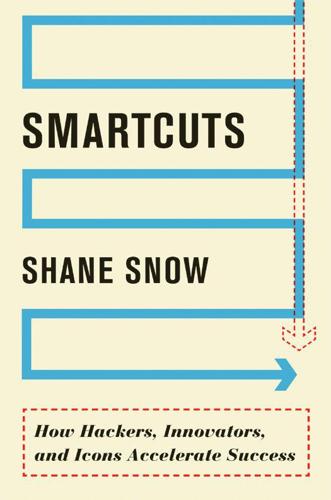
Smartcuts: How Hackers, Innovators, and Icons Accelerate Success
by
Shane Snow
Published 8 Sep 2014
Then, give the car keys to your friend, and stay behind with the romantic interest to wait for the bus! This dilemma is an exercise in lateral thinking. It’s the kind of puzzle in which the most elegant solution is revealed only when you attack it sideways. New ideas emerge when you question the assumptions upon which a problem is based (in this case: it’s that you can only help one person). In this book, I’m going to show you how overachievers throughout history have applied lateral thinking to success in a variety of fields and endeavors. In doing this, I plan to convince you that the fastest route to success is never traditional, and that the conventions we grow up with can be hacked.
…
They’re how tech geeks save lives and community college flunkies catalyze global change. And they’re how regular people can make their dreams happen, regardless how short their arms are. SOME OF THE IDEAS in this book are subversive. I’m not being contrarian for the sake of it; I’m hoping to spark lateral thinking when it comes to success, indeed to show that lateral thinking is how the most successful people have always made it. In the following chapters, I’ll explain why kids shouldn’t be taught multiplication tables, where the fashionable “fail fast and fail often” mantra of the Lean Startup movement breaks down, and how momentum—not experience—is the single biggest predictor of business and personal success.
…
By teaching tools and problem solving instead of memorization and by hiring only teachers with master’s degrees, Finland created a higher educational platform that gave its kids an advantage. That’s how its school system shot to number one.* For so long, “innovation” in education has amounted to more class time, more memorization, more tests. Smaller classes, but the same classes. Finland actually got better, through lateral thinking. Edward de Bono, who coined the term “lateral thinking” in 1967, put the “Einstein” quote a bit differently: “You cannot dig a hole in a different place by digging the same hole deeper.” IV. David Heinemeier Hansson was in a deep hole. Halfway through his stint, the sprinkling rain had become a downpour. Curve after curve, he fishtailed at high speed, still in third place, pack of hungry competitors at his rear bumper.
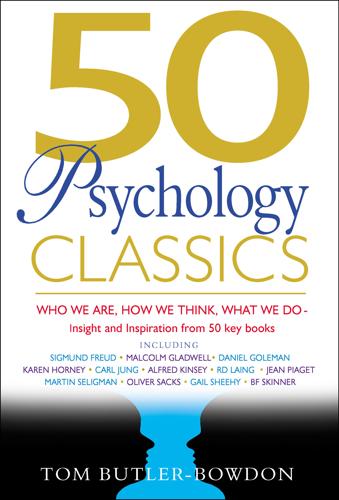
50 Psychology Classics
by
Tom Butler-Bowdon
Published 14 Oct 2007
De Bono coined the term “lateral thinking,” now listed in the Oxford English Dictionary, in The Use of Lateral Thinking (1967), but it is Lateral Thinking (subtitled Creativity Step by Step in the United States and A Textbook of Creativity in Britain) that is more widely read and still in print. What is lateral thinking? When de Bono started writing in the 1960s there were no practical, standardized ways of achieving new insights. A few people were considered “creative,” but the rest had to plod along within established mental grooves. He promoted the concept of lateral thinking as the first “insight tool” that anyone could use for problem solving.
…
Or as de Bono puts it, “Vertical thinking is used to dig the same hole deeper. Lateral thinking is used to dig a hole in a different place.” Lateral thinking does not cancel out vertical thinking, but is complementary to it, to be used when we have exhausted the possibilities of normal thought patterns. Techniques of creative thinkers It is not enough to have some awareness of lateral thinking, de Bono asserts, we have to practice it. Most of his book consists of techniques to try to get us into lateral thinking mode. They include: Generating alternatives—to have better solutions you must have more choices to begin with.
…
He previously created training programs for the New York State Department of Mental Hygiene and also founded a psychiatric clinic. His other book, written with his wife Dorothy Grover Bolton, is People Styles at Work: Making Bad Relationships Good and Good Relationships Better (1996). 1970 Lateral Thinking “Lateral thinking is like the reverse gear in a car. One would never try to drive along in reverse gear the whole time. On the other hand one needs to have it and to know how to use it for maneuverability and to get out of a blind alley.” “The purpose of thinking is not to be right but to be effective
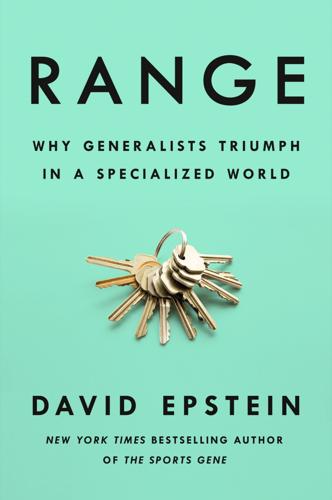
Range: Why Generalists Triumph in a Specialized World
by
David Epstein
Published 1 Mar 2019
Yokoi had no desire (or capability) to compete with electronics companies that were racing one another to invent some entirely new sliver of dazzling technology. Nor could Nintendo compete with Japan’s titans of traditional toys—Bandai, Epoch, and Takara—on their familiar turf. With that, and Drive Game, in mind, Yokoi embarked on an approach he called “lateral thinking with withered technology.” Lateral thinking is a term coined in the 1960s for the reimagining of information in new contexts, including the drawing together of seemingly disparate concepts or domains that can give old ideas new uses. By “withered technology,” Yokoi meant tech that was old enough to be extremely well understood and easily available, so it didn’t require a specialist’s knowledge.
…
Parish, Game Boy World 1989 (Norfolk, VA: CreateSpace, 2016); D. Sheff, Game Over: How Nintendo Conquered the World (New York: Vintage, 2011). “I didn’t want to leave Kyoto”: For source note on Yokoi’s quotes, see footnote on p. 192. “snow melts in sunlight”: Gorges with Yamazaki, The History of Nintendo, vol. 2, 1980–1991. “lateral thinking”: E. de Bono, Lateral Thinking: Creativity Step by Step (New York: HarperCollins, 2010). delicately embossed the screen: Yokoi’s often simple patents are a treasure trove of invention history. This patent (U.S. no. 4398804) and others can be found using Google Patents. 118.7 million units: B. Edwards, “Happy 20th b-day, Game Boy,” Ars Technica, April 21, 2009.
…
Tiger CHAPTER 1: The Cult of the Head Start CHAPTER 2: How the Wicked World Was Made CHAPTER 3: When Less of the Same Is More CHAPTER 4: Learning, Fast and Slow CHAPTER 5: Thinking Outside Experience CHAPTER 6: The Trouble with Too Much Grit CHAPTER 7: Flirting with Your Possible Selves CHAPTER 8: The Outsider Advantage CHAPTER 9: Lateral Thinking with Withered Technology CHAPTER 10: Fooled by Expertise CHAPTER 11: Learning to Drop Your Familiar Tools CHAPTER 12: Deliberate Amateurs CONCLUSION: Expanding Your Range ACKNOWLEDGMENTS NOTES INDEX ABOUT THE AUTHOR And he refused to specialize in anything, preferring to keep an eye on the overall estate rather than any of its parts. . . .
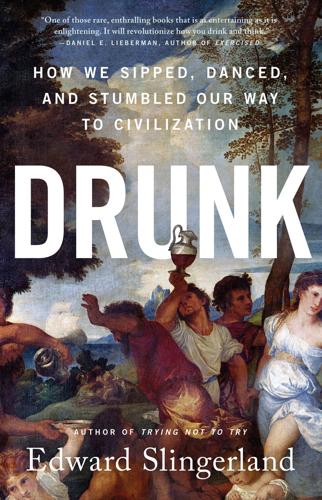
Drunk: How We Sipped, Danced, and Stumbled Our Way to Civilization
by
Edward Slingerland
Published 31 May 2021
Psychologists refer to this process, one that is aimed at producing an aha moment, as lateral thinking. Another task that requires lateral thinking is the Remote Associates Test (RAT). You are given three seemingly unrelated words, such as fox, man, and peep, and asked to think of a fourth word that unites them all. (See the endnotes for the answer.19) The Unusual Uses Test (UUT) similarly requires thinking outside the box: Given a common artifact, like a paperclip, the participant is asked, within a time limit, to come up with as many novel uses for it as possible (toothpick, earring, fishhook). Lateral thinking tasks are actually quite fun, like solving riddles, and can be adapted into enjoyable party games.
…
Both creativity and learning new associations require a relaxation of cognitive control that allows the mind to wander.23 An fMRI study of jazz pianists showed that the transition from playing scales or a completely written-out tune to freely improvising was reflected by a downregulation of the PFC.24 Other correlational evidence points in the same direction. For instance, adults with permanently damaged PFCs perform better on lateral-thinking tasks than healthy controls. And, thanks to the wonders of modern technology, at least one study provides some direct, causal evidence for the negative role of the PFC when it comes to lateral thinking. Experimenters had subjects perform a creativity task, measured their performance, and then temporarily knocked their PFC offline by zapping it with a powerful transcranial magnet.25 (Don’t try this at home.)
…
To help them, they were given hints that would be familiar to anyone who has tried meditation: Relax your mind, breathe deeply and regularly, let all thoughts and feelings come and go freely, feel your body relaxing into your posture. Shortly thereafter, the subjects who successfully raised their alpha activity outperformed their peers on a lateral thinking task. As the creative primate, humans are crucially dependent on lateral thinking. We require a continuous stream of novel insights and a constant reorganization of existing knowledge. Children, with their underdeveloped PFCs, are superstars in this regard. But as we’ve seen, the very thing that makes them so creative renders most of their creations useless, at least from the pragmatic perspective of goal-oriented adults.

Little Bets: How Breakthrough Ideas Emerge From Small Discoveries
by
Peter Sims
Published 18 Apr 2011
This book picks up on Csikzentmihalyi’s work on flow based on interviews with ninety-one recognized creative people, ranging from jazz musicians to physicists. de Bono, Edward. Lateral Thinking: Creativity Step by Step. New York: Harper & Row, 1970. Edward de Bono probably has done more to raise the profile of creative methods within the corporate world than anyone else over the past thirty years. Lateral Thinking is his cornerstone book, covering topics like suspending judgment, design, and visualization techniques. Lateral thinking, by definition, is about getting outside what de Bono calls vertical thinking or the notion that there is one path to a solution.
…
Lateral thinking, by definition, is about getting outside what de Bono calls vertical thinking or the notion that there is one path to a solution. De Bono helped popularize divergent and convergent thinking, buzzwords in creativity, since lateral thinking by definition suggests that one should generate many possibilities before narrowing in on one path. Galenson, David. Old Masters and Young Geniuses. Princeton, NJ: Princeton University Press, 2005. Galenson, whom I interviewed and whose work I referred to in this book, is a University of Chicago economist who is also an art lover who has done extensive research into how creators work. He examines various stages of creative development around art, poetry, and novel writing, and this book presents his resulting theories.
…
See Imposition of constraints Counterinsurgency methods, 27, 91–95, 103–105, 149–51, 155 Coyle, Daniel, The Talent Code, 163 Cranium, 156–58 Creativity, 7–13, 21, 51, 66, 87, 97, 107–109, 118, 121, 160–62, 197–98 further readings and resources on, 169–71 Csikszentmihalyi, Mihaly, 68, 87 Creativity: Flow and the Psychology of Discovery and Invention, 169 d.school, Stanford University, 12, 63, 134–35 Darden Graduate School of Business, University of Virginia, 10 Dean, Howard, 57 De Bono, Edward, Lateral Thinking: Creativity Step by Step, 169 Definition, 14 Dell, Michael, 110 Dell Computer, 110 Department of Defense (DoD), 86 Depression, 52 Design thinking, 12, 27–28 further readings and resources on, 171–72 Diffusion of ideas, 131–33 Digital animation, 29–32, 41–54, 59–62, 69–76, 105–106, 142–46, 148 Digital Project, 83 Disease, 9 Disney, 30, 32, 59, 60, 61, 75, 79, 146, 149, 159, 186–87 Disney, Lillian, 79 Disney, Walt, 79 Disney Concert Hall, Los Angeles, 77–83, 117 Diversity, 108, 117–30 Docter, Pete, 71–73, 75, 155 Doctrine approved solutions, 24–26 Donahoe, John, 120 Drucker, Peter, Innovation and Entrepreneurship, 167 Dweck, Carol, 36–41, 46–49, 116 Mindset: The New Psychology of Success, 163 Dyer, Jeffrey, 107, 108, 109–111, 114–15, 117–18 E.piphany, 102 Early adopters, 131–40, 146 eBay, 6, 19, 120 Economic crisis (2008), 153 Ecosystem, 136 Edison, Thomas, 7 Education, 14–15, 114–15, 160–61 Montessori, 115 Edwards, John, 125 Effort, 36–41 Eisner, Michael, 60–61 Elastic Compute Cloud (EC2), 7 Electronic Arts, 84 Electrosonic, 112, 113 Enron, 109 Entrepreneurship, 9–11, 28–29, 36, 89, 102–103, 148, 153–54 further readings and resources on, 172–73 See also specific entrepreneurs Evans & Sutherland, 44 Experimental innovation, 5, 7–17, 33, 35, 49, 65, 115, 158 conceptual innovation vs., 180–81 Extreme users, 133–34 Facebook, 57 Failing forward, 53 Failure, 13, 20–21, 25, 33, 35, 36, 90, 160 affordable loss principle, 28–33 growth mind-set and, 35–49 prototyping and, 52–64 Film, 29–32, 146 animated, 29–32, 41–45, 59–62, 69–76, 105–106, 142–46, 148–49, 150, 155, 158–59, 186–87 See also specific films Finding Nemo (film), 43, 52, 59, 60–62, 106, 159 Fixed mind-set, 36–49 Flexibility, 85, 142, 147, 151 Florida, Richard, 118 FM 5-0: The Operations Process, 28 fMRI imaging, 65–67 Ford, Henry, 15 Ford Motors, 25 Fried (Jason) and Hansson (David Heinemeier), Rework, 173 Fuji, 85 Further readings and resources, 163–78 Galenson, David, 7, 97–98, 180–81 Old Masters and Young Geniuses, 170, 180 Gates, Bill, 9 Gates Foundation, 9 Gehry, Frank, 13, 45–46, 51, 54–55, 65, 77–84, 87, 95, 117, 128, 153, 154, 158, 159, 161–62 imposition of constraints, 77–84 prototyping, 54–55, 63, 80, 81 General Electric, 21 General Motors, 15–16, 85 Georgescu, Peter, 12 Gergen, Christopher, 138 Life Entrepreneurs, 138 Germany, 24 Getzels, Jacob, 87 Gianforte (Greg) and Gibson (Marcus), Bootstrapping Your Business, 173 Gladwell, Malcolm, The Tipping Point, 133 Global market, 17 Global Open Innovation, 62 Google, 4–5, 7, 14, 35, 75, 78, 115, 156 Gordon, Bing, 84 Gore, Al, 125 GoTo.com, 4 Grameen Bank, 98, 102 Greene, Diane, 107 Greenspan, Alan, 153 Gregersen, Hal, 107, 108, 109–111, 114–15, 117–18 Growth mind-set, 35–49 Guerrilla warfare, 25–26 Guggenheim, Ralph, 145 Guggenheim Museum, Bilbao, 117 Gulf War (1991), 91 Hampes, William, 74 Hansson (David Heinemeier) and Fried (Jason), Rework, 173 Harvard Business Review, 6, 85, 107, 110 Harvard Business School, 107 Haskins, Casey, 22–26 HBO, 3 Heath, Chip, 138 Made to Stick, 138 Switch, 140 Hedge funds, 109 Hewlett, Bill, 9, 21–22, 28, 33, 120, 159 Hewlett-Packard, 9, 19–22, 28, 33, 88, 120, 159 Hickey, Chris, 104 Hill, Robert, 52 HiPPO, 75 Honda, 85 House, Chuck, 21, 33 Huber, Chet, 15–16 Humor, 73–76 stand-up comedy, 1–3, 12, 13, 32, 109, 128, 131, 133, 135, 140, 141, 151, 154–55 Ideas, diffusion of, 131–33 IDEO, 12, 63, 111 IEDs, 27 Illinois, 55–58 Immersion, 14, 97–116, 152 Imposition of constraints, 77–95, 193 architecture and, 77–84 military and, 91–95 software and, 83–91 Improvisation, 65–69 Incredibles, The (film), 42 India, 98–102 Inquisitiveness, 97–116 Insurgent warfare, 26–27, 91–95, 103–105, 149–51 Intangible factors, 20–21 Intelligence, and growth mind-set, 35–49 Internet, 4–7, 17, 57–58, 87, 89–91, 156 advertising, 4–5 Intuit, 91 Investment banking, 109 iPad, 132 Iraq War, 25–26, 27, 91–95, 103–105, 150 Iron Giant, The (film), 42 Iteration, 14 iTunes, 89 Jacoby, Ryan, 111 Jade, 112 Japan, 25, 85, 108 Jazz, 65–68 Jobs, Steve, 29, 30–32, 42, 43–44, 51, 62, 86, 107–108, 134, 135, 142–46, 148, 151 Johansson, Frans, The Medici Effect, 118, 173–74 Johns Hopkins University, 65 Johnson, Lyndon, 25 Jordan, Michael, 37, 47 Kahney, Leander, Inside Steve’s Brain, 107, 164 Kay, Alan, 31, 162 Kelley, David, 12, 63 Kelley, Tom, The Art of Innovation, 171–72 Kembel, George, 12 Kennedy, John F., 25 Khosla, Vinod, 10, 36 Kilduff, Daniel, 124, 125 Kill-and-capture strategy, 91 KLA Tencor, 19 Kleiner Perkins, 84 Klunkerz, The (documentary), 138 Kynikos Associates, 109 Lafley, A.

Presentation Zen Design: Simple Design Principles and Techniques to Enhance Your Presentations
by
Garr Reynolds
Published 14 Aug 2010
Suzuki, author and scholar 10. Japanese Aesthetic Principles to Consider Exposing ourselves to traditional Japanese aesthetic ideas—notions that may seem foreign to many of us—is a good exercise in lateral thinking, a term coined by Edward de Bono in 1967. “Lateral Thinking is for changing concepts and perception,” says de Bono. Thinking about harmony in design by exploring the tenets of the Zen aesthetic may not be an example of lateral thinking in the strict sense, but doing so is a good exercise in stretching our minds and really beginning to think differently about visuals and design in our everyday professional lives.

Super Thinking: The Big Book of Mental Models
by
Gabriel Weinberg
and
Lauren McCann
Published 17 Jun 2019
Posing what-if questions can nevertheless help you think more creatively, coming up with scenarios that diverge from your intuition. More generally, this technique is one of many associated with lateral thinking, a type of thinking that helps you move laterally from one idea to another, as opposed to critical thinking, which is more about judging an idea in front of you. Lateral thinking is thinking outside the box. Another helpful lateral-thinking technique involves adding some randomness when you are generating ideas. For example, you can choose an object at random from your surroundings or a noun from the dictionary and try to associate it in some way with your current idea list, laterally forming new offshoot ideas in the process.
…
Use systems thinking and scenario analysis to more systematically uncover them and assess their impact. For really complex systems or decision spaces, consider simulations to help you better assess what may happen under different scenarios. Watch out for blind spots that arise from groupthink. Consider divergent and lateral thinking techniques when working with groups, including seeking more diverse points of view. Strive to understand the global optimum in any system and look for decisions that move you closer to it. 7 Dealing with Conflict IN ADVERSARIAL SITUATIONS, nearly every one of your choices directly or indirectly affects other people, and these effects can play a large role in how a conflict turns out.
…
Department of, 97 just world hypothesis, 22 Kahneman, Daniel, 9, 30, 90 karoshi, 82 Kauffman Foundation, 122 keeping up with the Joneses, 210–11 key person insurance, 305 King, Martin Luther, Jr., 129, 225 KISS (Keep It Simple, Stupid), 10 knowledge, institutional, 257 knowns: known, 197 unknown, 198, 203 known unknowns, 197–98 Knox, Robert E., 91 Kodak, 302–3, 308–10, 312 Koenigswald, Gustav Heinrich Ralph von, 50 Kohl’s, 15 Kopelman, Josh, 301 Korea, 229, 231, 235, 238 Kristof, Nicholas, 254 Krokodil, 49 Kruger, Justin, 269 Kuhn, Thomas, 24 Kutcher, Ashton, 121 labor market, 283–84 laggards, 116–17 landlords, 178, 179, 182, 188 Laplace, Pierre-Simon, 132 large numbers, law of, 143–44 Latané, Bibb, 259 late majority, 116–17 lateral thinking, 201 law of diminishing returns, 81–83 law of diminishing utility, 81–82 law of inertia, 102–3, 105–8, 110, 112, 113, 119, 120, 129, 290, 296 law of large numbers, 143–44 law of small numbers, 143, 144 Lawson, Jerry, 289 lawsuits, 231 leadership, 248, 255, 260, 265, 271, 275, 276, 278–80 learned helplessness, 22–23 learning, 262, 269, 295 from past events, 271–72 learning curve, 269 Le Chatelier, Henri-Louis, 193 Le Chatelier’s principle, 193–94 left to their own devices, 275 Leibniz, Gottfried, 291 lemons into lemonade, 121 Lernaean Hydra, 51 Levav, Jonathan, 63 lever, 78 leverage, 78–80, 83, 115 high-leverage activities, 79–81, 83, 107, 113 leveraged buyout, 79 leveraging up, 78–79 Levitt, Steven, 44–45 Levitt, Theodore, 296 Lewis, Michael, 289 Lichtenstein, Sarah, 17 lightning, 145 liking, 216–17, 220 Lincoln, Abraham, 97 Lindy effect, 105, 106, 112 line in the sand, 238 LinkedIn, 7 littering, 41, 42 Lloyd, William, 37 loans, 180, 182–83 lobbyists, 216, 306 local optimum, 195–96 lock-in, 305 lock in your gains, 90 long-term negative scenarios, 60 loose versus tight, in organizational culture, 274 Lorenz, Edward, 121 loss, 91 loss aversion, 90–91 loss leader strategy, 236–37 lost at sea, 68 lottery, 85–86, 126, 145 low-context communication, 273–74 low-hanging fruit, 81 loyalists versus mercenaries, 276–77 luck, 128 making your own, 122 luck surface area, 122, 124, 128 Luft, Joseph, 196 LuLaRoe, 217 lung cancer, 133–34, 173 Lyautey, Hubert, 276 Lyft, ix, 288 Madoff, Bernie, 232 magnetic resonance imaging (MRI), 291 magnets, 194 maker’s schedule versus manager’s schedule, 277–78 Making of Economic Society, The (Heilbroner), 49 mammograms, 160–61 management debt, 56 manager’s schedule versus maker’s schedule, 277–78 managing to the person, 255 Manhattan Project, 195 Man in the High Castle, The (Dick), 201 manipulative insincerity, 264 man-month, 279 Mansfield, Peter, 291 manufacturer’s suggested retail price (MSRP), 15 margin of error, 154 markets, 42–43, 46–47, 106 failure in, 47–49 labor, 283–84 market norms versus social norms, 222–24 market power, 283–85, 312 product/market fit, 292–96, 302 secondary, 281–82 winner-take-most, 308 marriage: divorce, 231, 305 same-sex, 117, 118 Maslow, Abraham, 177, 270–71 Maslow’s hammer, xi, 177, 255, 297, 317 Maslow’s hierarchy of needs, 270–71 mathematics, ix–x, 3, 4, 132, 178 Singapore math, 23–24 matrices, 2 × 2, 125–26 consensus-contrarian, 285–86, 290 consequence-conviction, 265–66 Eisenhower Decision Matrix, 72–74, 89, 124, 125 of knowns and unknowns, 197–98 payoff, 212–15, 238 radical candor, 263–64 scatter plot on top of, 126 McCain, John, 241 mean, 146, 149, 151 regression to, 146, 286 standard deviation from, 149, 150–51, 154 variance from, 149 measles, 39, 40 measurable target, 49–50 median, 147 Medicare, 54–55 meetings, 113 weekly one-on-one, 262–63 Megginson, Leon, 101 mental models, vii–xii, 2, 3, 31, 35, 65, 131, 289, 315–17 mentorship, 23, 260, 262, 264, 265 mercenaries versus loyalists, 276–77 Merck, 283 merry-go-round, 108 meta-analysis, 172–73 Metcalfe, Robert, 118 Metcalfe’s law, 118 #MeToo movement, 113 metrics, 137 proxy, 139 Michaels, 15 Microsoft, 241 mid-mortems, 92 Miklaszewski, Jim, 196 Milgram, Stanley, 219, 220 military, 141, 229, 279, 294, 300 milkshakes, 297 Miller, Reggie, 246 Mills, Alan, 58 Mindset: The New Psychology of Success (Dweck), 266 mindset, fixed, 266–67, 272 mindset, growth, 266–67 minimum viable product (MVP), 7–8, 81, 294 mirroring, 217 mission, 276 mission statement, 68 MIT, 53, 85 moats, 302–5, 307–8, 310, 312 mode, 147 Moltke, Helmuth von, 7 momentum, 107–10, 119, 129 Monday morning quarterbacking, 271 Moneyball (Lewis), 289 monopolies, 283, 285 Monte Carlo fallacy, 144 Monte Carlo simulation, 195 Moore, Geoffrey, 311 moral hazard, 43–45, 47 most respectful interpretation (MRI), 19–20 moths, 99–101 Mountain Dew, 35 moving target, 136 multiple discovery, 291–92 multiplication, ix, xi multitasking, 70–72, 74, 76, 110 Munger, Charlie, viii, x–xi, 30, 286, 318 Murphy, Edward, 65 Murphy’s law, 64–65, 132 Musk, Elon, 5, 302 mutually assured destruction (MAD), 231 MVP (minimum viable product), 7–8, 81, 294 Mylan, 283 mythical man-month, 279 name-calling, 226 NASA, 4, 32, 33 Nash, John, 213 Nash equilibrium, 213–14, 226, 235 National Football League (NFL), 225–26 National Institutes of Health, 36 National Security Agency, 52 natural selection, 99–100, 102, 291, 295 nature versus nurture, 249–50 negative compounding, 85 negative externalities, 41–43, 47 negative returns, 82–83, 93 negotiations, 127–28 net benefit, 181–82, 184 Netflix, 69, 95, 203 net present value (NPV), 86, 181 network effects, 117–20, 308 neuroticism, 250 New Orleans, La., 41 Newport, Cal, 72 news headlines, 12–13, 221 newspapers, 106 Newsweek, 290 Newton, Isaac, 102, 291 New York Times, 27, 220, 254 Nielsen Holdings, 217 ninety-ninety rule, 89 Nintendo, 296 Nobel Prize, 32, 42, 220, 291, 306 nocebo effect, 137 nodes, 118, 119 No Fly List, 53–54 noise and signal, 311 nonresponse bias, 140, 142, 143 normal distribution (bell curve), 150–52, 153, 163–66, 191 North Korea, 229, 231, 238 north star, 68–70, 275 nothing in excess, 60 not ready for prime time, 242 “now what” questions, 291 NPR, 239 nuclear chain reaction, viii, 114, 120 nuclear industry, 305–6 nuclear option, 238 Nuclear Regulatory Commission (NRC), 305–6 nuclear weapons, 114, 118, 195, 209, 230–31, 233, 238 nudging, 13–14 null hypothesis, 163, 164 numbers, 130, 146 large, law of, 143–44 small, law of, 143, 144 see also data; statistics nurses, 284 Oakland Athletics, 289 Obama, Barack, 64, 241 objective versus subjective, in organizational culture, 274 obnoxious aggression, 264 observe, orient, decide, act (OODA), 294–95 observer effect, 52, 54 observer-expectancy bias, 136, 139 Ockham’s razor, 8–10 Odum, William E., 38 oil, 105–6 Olympics, 209, 246–48, 285 O’Neal, Shaquille, 246 one-hundred-year floods, 192 Onion, 211–12 On the Origin of Species by Means of Natural Selection (Darwin), 100 OODA loop, 294–95 openness to experience, 250 Operation Ceasefire, 232 opinion, diversity of, 205, 206 opioids, 36 opportunity cost, 76–77, 80, 83, 179, 182, 188, 305 of capital, 77, 179, 182 optimistic probability bias, 33 optimization, premature, 7 optimums, local and global, 195–96 optionality, preserving, 58–59 Oracle, 231, 291, 299 order, 124 balance between chaos and, 128 organizations: culture in, 107–8, 113, 273–80, 293 size and growth of, 278–79 teams in, see teams ostrich with its head in the sand, 55 out-group bias, 127 outliers, 148 Outliers (Gladwell), 261 overfitting, 10–11 overwork, 82 Paine, Thomas, 221–22 pain relievers, 36, 137 Pampered Chef, 217 Pangea, 24–25 paradigm shift, 24, 289 paradox of choice, 62–63 parallel processing, 96 paranoia, 308, 309, 311 Pareto, Vilfredo, 80 Pareto principle, 80–81 Pariser, Eli, 17 Parkinson, Cyril, 74–75, 89 Parkinson’s law, 89 Parkinson’s Law (Parkinson), 74–75 Parkinson’s law of triviality, 74, 89 passwords, 94, 97 past, 201, 271–72, 309–10 Pasteur, Louis, 26 path dependence, 57–59, 194 path of least resistance, 88 Patton, Bruce, 19 Pauling, Linus, 220 payoff matrix, 212–15, 238 PayPal, 72, 291, 296 peak, 105, 106, 112 peak oil, 105 Penny, Jonathon, 52 pent-up energy, 112 perfect, 89–90 as enemy of the good, 61, 89–90 personality traits, 249–50 person-month, 279 perspective, 11 persuasion, see influence models perverse incentives, 50–51, 54 Peter, Laurence, 256 Peter principle, 256, 257 Peterson, Tom, 108–9 Petrified Forest National Park, 217–18 Pew Research, 53 p-hacking, 169, 172 phishing, 97 phones, 116–17, 290 photography, 302–3, 308–10 physics, x, 114, 194, 293 quantum, 200–201 pick your battles, 238 Pinker, Steven, 144 Pirahã, x Pitbull, 36 pivoting, 295–96, 298–301, 308, 311, 312 placebo, 137 placebo effect, 137 Planck, Max, 24 Playskool, 111 Podesta, John, 97 point of no return, 244 Polaris, 67–68 polarity, 125–26 police, in organizations and projects, 253–54 politics, 70, 104 ads and statements in, 225–26 elections, 206, 218, 233, 241, 271, 293, 299 failure and, 47 influence in, 216 predictions in, 206 polls and surveys, 142–43, 152–54, 160 approval ratings, 152–54, 158 employee engagement, 140, 142 postmortems, 32, 92 Potemkin village, 228–29 potential energy, 112 power, 162 power drills, 296 power law distribution, 80–81 power vacuum, 259–60 practice, deliberate, 260–62, 264, 266 precautionary principle, 59–60 Predictably Irrational (Ariely), 14, 222–23 predictions and forecasts, 132, 173 market for, 205–7 superforecasters and, 206–7 PredictIt, 206 premature optimization, 7 premises, see principles pre-mortems, 92 present bias, 85, 87, 93, 113 preserving optionality, 58–59 pressure point, 112 prices, 188, 231, 299 arbitrage and, 282–83 bait and switch and, 228, 229 inflation in, 179–80, 182–83 loss leader strategy and, 236–37 manufacturer’s suggested retail, 15 monopolies and, 283 principal, 44–45 principal-agent problem, 44–45 principles (premises), 207 first, 4–7, 31, 207 prior, 159 prioritizing, 68 prisoners, 63, 232 prisoner’s dilemma, 212–14, 226, 234–35, 244 privacy, 55 probability, 132, 173, 194 bias, optimistic, 33 conditional, 156 probability distributions, 150, 151 bell curve (normal), 150–52, 153, 163–66, 191 Bernoulli, 152 central limit theorem and, 152–53, 163 fat-tailed, 191 power law, 80–81 sample, 152–53 pro-con lists, 175–78, 185, 189 procrastination, 83–85, 87, 89 product development, 294 product/market fit, 292–96, 302 promotions, 256, 275 proximate cause, 31, 117 proxy endpoint, 137 proxy metric, 139 psychology, 168 Psychology of Science, The (Maslow), 177 Ptolemy, Claudius, 8 publication bias, 170, 173 public goods, 39 punching above your weight, 242 p-values, 164, 165, 167–69, 172 Pygmalion effect, 267–68 Pyrrhus, King, 239 Qualcomm, 231 quantum physics, 200–201 quarantine, 234 questions: now what, 291 what if, 122, 201 why, 32, 33 why now, 291 quick and dirty, 234 quid pro quo, 215 Rabois, Keith, 72, 265 Rachleff, Andy, 285–86, 292–93 radical candor, 263–64 Radical Candor (Scott), 263 radiology, 291 randomized controlled experiment, 136 randomness, 201 rats, 51 Rawls, John, 21 Regan, Ronald, 183 real estate agents, 44–45 recessions, 121–22 reciprocity, 215–16, 220, 222, 229, 289 recommendations, 217 red line, 238 referrals, 217 reframe the problem, 96–97 refugee asylum cases, 144 regression to the mean, 146, 286 regret, 87 regulations, 183–84, 231–32 regulatory capture, 305–7 reinventing the wheel, 92 relationships, 53, 55, 63, 91, 111, 124, 159, 271, 296, 298 being locked into, 305 dating, 8–10, 95 replication crisis, 168–72 Republican Party, 104 reputation, 215 research: meta-analysis of, 172–73 publication bias and, 170, 173 systematic reviews of, 172, 173 see also experiments resonance, 293–94 response bias, 142, 143 responsibility, diffusion of, 259 restaurants, 297 menus at, 14, 62 RetailMeNot, 281 retaliation, 238 returns: diminishing, 81–83 negative, 82–83, 93 reversible decisions, 61–62 revolving door, 306 rewards, 275 Riccio, Jim, 306 rise to the occasion, 268 risk, 43, 46, 90, 288 cost-benefit analysis and, 180 de-risking, 6–7, 10, 294 moral hazard and, 43–45, 47 Road Ahead, The (Gates), 69 Roberts, Jason, 122 Roberts, John, 27 Rogers, Everett, 116 Rogers, William, 31 Rogers Commission Report, 31–33 roles, 256–58, 260, 271, 293 roly-poly toy, 111–12 root cause, 31–33, 234 roulette, 144 Rubicon River, 244 ruinous empathy, 264 Rumsfeld, Donald, 196–97, 247 Rumsfeld’s Rule, 247 Russia, 218, 241 Germany and, 70, 238–39 see also Soviet Union Sacred Heart University (SHU), 217, 218 sacrifice play, 239 Sagan, Carl, 220 sales, 81, 216–17 Salesforce, 299 same-sex marriage, 117, 118 Sample, Steven, 28 sample distribution, 152–53 sample size, 143, 160, 162, 163, 165–68, 172 Sánchez, Ricardo, 234 sanctions and fines, 232 Sanders, Bernie, 70, 182, 293 Sayre, Wallace, 74 Sayre’s law, 74 scarcity, 219, 220 scatter plot, 126 scenario analysis (scenario planning), 198–99, 201–3, 207 schools, see education and schools Schrödinger, Erwin, 200 Schrödinger’s cat, 200 Schultz, Howard, 296 Schwartz, Barry, 62–63 science, 133, 220 cargo cult, 315–16 Scientific Autobiography and other Papers (Planck), 24 scientific evidence, 139 scientific experiments, see experiments scientific method, 101–2, 294 scorched-earth tactics, 243 Scott, Kim, 263 S curves, 117, 120 secondary markets, 281–82 second law of thermodynamics, 124 secrets, 288–90, 292 Securities and Exchange Commission, U.S., 228 security, false sense of, 44 security services, 229 selection, adverse, 46–47 selection bias, 139–40, 143, 170 self-control, 87 self-fulfilling prophecies, 267 self-serving bias, 21, 272 Seligman, Martin, 22 Semmelweis, Ignaz, 25–26 Semmelweis reflex, 26 Seneca, Marcus, 60 sensitivity analysis, 181–82, 185, 188 dynamic, 195 Sequoia Capital, 291 Sessions, Roger, 8 sexual predators, 113 Shakespeare, William, 105 Sheets Energy Strips, 36 Shermer, Michael, 133 Shirky, Clay, 104 Shirky principle, 104, 112 Short History of Nearly Everything, A (Bryson), 50 short-termism, 55–56, 58, 60, 68, 85 side effects, 137 signal and noise, 311 significance, 167 statistical, 164–67, 170 Silicon Valley, 288, 289 simulations, 193–95 simultaneous invention, 291–92 Singapore math, 23–24 Sir David Attenborough, RSS, 35 Skeptics Society, 133 sleep meditation app, 162–68 slippery slope argument, 235 slow (high-concentration) thinking, 30, 33, 70–71 small numbers, law of, 143, 144 smartphones, 117, 290, 309, 310 smoking, 41, 42, 133–34, 139, 173 Snap, 299 Snowden, Edward, 52, 53 social engineering, 97 social equality, 117 social media, 81, 94, 113, 217–19, 241 Facebook, 18, 36, 94, 119, 219, 233, 247, 305, 308 Instagram, 220, 247, 291, 310 YouTube, 220, 291 social networks, 117 Dunbar’s number and, 278 social norms versus market norms, 222–24 social proof, 217–20, 229 societal change, 100–101 software, 56, 57 simulations, 192–94 solitaire, 195 solution space, 97 Somalia, 243 sophomore slump, 145–46 South Korea, 229, 231, 238 Soviet Union: Germany and, 70, 238–39 Gosplan in, 49 in Cold War, 209, 235 space exploration, 209 spacing effect, 262 Spain, 243–44 spam, 37, 161, 192–93, 234 specialists, 252–53 species, 120 spending, 38, 74–75 federal, 75–76 spillover effects, 41, 43 sports, 82–83 baseball, 83, 145–46, 289 football, 226, 243 Olympics, 209, 246–48, 285 Spotify, 299 spreadsheets, 179, 180, 182, 299 Srinivasan, Balaji, 301 standard deviation, 149, 150–51, 154 standard error, 154 standards, 93 Stanford Law School, x Starbucks, 296 startup business idea, 6–7 statistics, 130–32, 146, 173, 289, 297 base rate in, 157, 159, 160 base rate fallacy in, 157, 158, 170 Bayesian, 157–60 confidence intervals in, 154–56, 159 confidence level in, 154, 155, 161 frequentist, 158–60 p-hacking in, 169, 172 p-values in, 164, 165, 167–69, 172 standard deviation in, 149, 150–51, 154 standard error in, 154 statistical significance, 164–67, 170 summary, 146, 147 see also data; experiments; probability distributions Staubach, Roger, 243 Sternberg, Robert, 290 stock and flow diagrams, 192 Stone, Douglas, 19 stop the bleeding, 234 strategy, 107–8 exit, 242–43 loss leader, 236–37 pivoting and, 295–96, 298–301, 308, 311, 312 tactics versus, 256–57 strategy tax, 103–4, 112 Stiglitz, Joseph, 306 straw man, 225–26 Streisand, Barbra, 51 Streisand effect, 51, 52 Stroll, Cliff, 290 Structure of Scientific Revolutions, The (Kuhn), 24 subjective versus objective, in organizational culture, 274 suicide, 218 summary statistics, 146, 147 sunk-cost fallacy, 91 superforecasters, 206–7 Superforecasting (Tetlock), 206–7 super models, viii–xii super thinking, viii–ix, 3, 316, 318 surface area, 122 luck, 122, 124, 128 surgery, 136–37 Surowiecki, James, 203–5 surrogate endpoint, 137 surveys, see polls and surveys survivorship bias, 140–43, 170, 272 sustainable competitive advantage, 283, 285 switching costs, 305 systematic review, 172, 173 systems thinking, 192, 195, 198 tactics, 256–57 Tajfel, Henri, 127 take a step back, 298 Taleb, Nassim Nicholas, 2, 105 talk past each other, 225 Target, 236, 252 target, measurable, 49–50 taxes, 39, 40, 56, 104, 193–94 T cells, 194 teams, 246–48, 275 roles in, 256–58, 260 size of, 278 10x, 248, 249, 255, 260, 273, 280, 294 Tech, 83 technical debt, 56, 57 technologies, 289–90, 295 adoption curves of, 115 adoption life cycles of, 116–17, 129, 289, 290, 311–12 disruptive, 308, 310–11 telephone, 118–19 temperature: body, 146–50 thermostats and, 194 tennis, 2 10,000-Hour Rule, 261 10x individuals, 247–48 10x teams, 248, 249, 255, 260, 273, 280, 294 terrorism, 52, 234 Tesla, Inc., 300–301 testing culture, 50 Tetlock, Philip E., 206–7 Texas sharpshooter fallacy, 136 textbooks, 262 Thaler, Richard, 87 Theranos, 228 thermodynamics, 124 thermostats, 194 Thiel, Peter, 72, 288, 289 thinking: black-and-white, 126–28, 168, 272 convergent, 203 counterfactual, 201, 272, 309–10 critical, 201 divergent, 203 fast (low-concentration), 30, 70–71 gray, 28 inverse, 1–2, 291 lateral, 201 outside the box, 201 slow (high-concentration), 30, 33, 70–71 super, viii–ix, 3, 316, 318 systems, 192, 195, 198 writing and, 316 Thinking, Fast and Slow (Kahneman), 30 third story, 19, 92 thought experiment, 199–201 throwing good money after bad, 91 throwing more money at the problem, 94 tight versus loose, in organizational culture, 274 timeboxing, 75 time: management of, 38 as money, 77 work and, 89 tipping point, 115, 117, 119, 120 tit-for-tat, 214–15 Tōgō Heihachirō, 241 tolerance, 117 tools, 95 too much of a good thing, 60 top idea in your mind, 71, 72 toxic culture, 275 Toys “R” Us, 281 trade-offs, 77–78 traditions, 275 tragedy of the commons, 37–40, 43, 47, 49 transparency, 307 tribalism, 28 Trojan horse, 228 Truman Show, The, 229 Trump, Donald, 15, 206, 293 Trump: The Art of the Deal (Trump and Schwartz), 15 trust, 20, 124, 215, 217 trying too hard, 82 Tsushima, Battle of, 241 Tupperware, 217 TurboTax, 104 Turner, John, 127 turn lemons into lemonade, 121 Tversky, Amos, 9, 90 Twain, Mark, 106 Twitter, 233, 234, 296 two-front wars, 70 type I error, 161 type II error, 161 tyranny of small decisions, 38, 55 Tyson, Mike, 7 Uber, 231, 275, 288, 290 Ulam, Stanislaw, 195 ultimatum game, 224, 244 uncertainty, 2, 132, 173, 180, 182, 185 unforced error, 2, 10, 33 unicorn candidate, 257–58 unintended consequences, 35–36, 53–55, 57, 64–65, 192, 232 Union of Concerned Scientists (UCS), 306 unique value proposition, 211 University of Chicago, 144 unknown knowns, 198, 203 unknowns: known, 197–98 unknown, 196–98, 203 urgency, false, 74 used car market, 46–47 U.S.
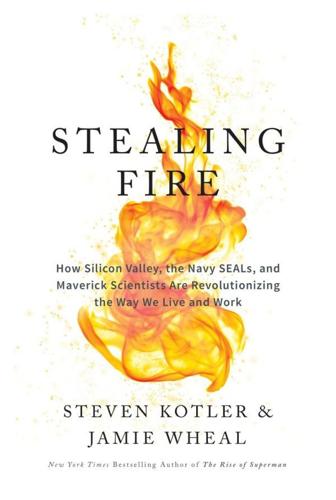
Stealing Fire: How Silicon Valley, the Navy SEALs, and Maverick Scientists Are Revolutionizing the Way We Live and Work
by
Steven Kotler
and
Jamie Wheal
Published 21 Feb 2017
It is my impression that drug-seeking and drug-taking behavior, on the part of both humans and animals, enjoys an intimate connection with . . . depatterning.” In more contemporary terms, both Siegel and Samorini have argued that animals consume psychoactive plants because they promote “lateral thinking,” or problem solving through indirect and creative approaches. Lateral thinking involves big intuitive leaps between ideas. These are outside-the-box insights far more than iterative improvements, and much more difficult to achieve during normal waking consciousness. With our self forever standing guard over our ideas, crazy schemes and hare-brained notions tend to get filtered out long before they can become useful.
…
As we move even deeper into ecstasis, the brain can release endorphins and anandamide.30 They both decrease pain, removing the diversion of physical distress from the equation, letting us pay even more attention to what’s going on. Anandamide also plays another important role here,31 boosting “lateral thinking,” which is our ability to make far-flung connections between disparate ideas. Post-its, Slinkys, Silly Putty, Super Glue, and a host of other breakthroughs all came when an inventor made a sideways leap, applying an overlooked tool in a novel way. In part, that’s anandamide at work. And, if we go really deep, our brainwaves shift once again, pushing us toward quasi-hypnotic theta, a wave we normally produce only during REM sleep that enhances both relaxation and intuition.
…
See creativity intellectual community: spreading of ecstatic culture by, 168–70 intelligence community and Burning Man, 191–92 “spooks” of, 187–93 See also CIA; FBI International Business Times: Downer comments in, 116 International Foundation for Advanced Study, 49 intoxication, 115–19 Intoxication (Siegel), 116 Iraq War, 89, 191, 193 Ismail, Salim, 21 isolation tanks, 26–27, 79 It’s Not About Now, 203–5, 208 It’s Not About You, 202–3, 208 Jacobsen, Annie, 182 James, E.L., 85 James, William, 44 Japan: Fukushima disaster in, 165 jar analogy, 95 Jeep: marketing of, 196 Jerusalem Syndrome, 202–3 Joan of Arc, 54–55 Jobs, Steve, 50 Johnson, Samuel, 137 Johnson, Steven, 141 Jones, Android, 142–43, 144, 145, 150, 157, 198 Jones, Shaun, 103 Journal of Occupational Therapy: and Rogers PTSD study, 89 Journal of the American Medical Association: meditation study report in, 112 Jung, Carl, 168 Kabbalism, 109 Kardaras, Nicholas, 196–97 Kegan, Robert, 38–39, 92, 93, 175 Kelly, Kevin, 198 Kerouac, Jack, 77, 189 Kesey, Ken, 66, 188–89, 192 ketamine, 26, 207–8 Kidman, Nicole, 96, 97 Kill House, Navy SEALs, 14, 15, 25 kinetic training gear, 150–52 kitesurfing, 138, 171, 172, 173 Korean War, 182 Kornfield, Jack, 203 Kotler, Steven Ellie (AI) and, 100 The Rise of Superman by, 5, 25, 135, 136, 150 Kripal, Jeff, 79 Kurzweil, Ray, 177 kykeon, 2, 3, 74, 188 Lafley, A.G., 47 The Lancet: Nutt studies in, 63 Landmark, 80 Lanier, Jaron, 103 Las Vegas, Nevada Consumer Electronics Show in, 157, 173 Downtown Project in, 161, 163, 210 Lascaux caves: Jones art at, 143 lateral thinking, 45, 117–18 Law of the Instrument, 111 Lawrence, D.H., 168 leadership, “emergent,” 105–6 learning accelerated, 27 and revising tactics and conventions, 219–22 and solving wicked problems, 50 Leary, Mark, 37, 38 Leary, Timothy, 33, 68 Leonard, Adam, 27–28 Lilly, John, 26, 27, 183–85, 186, 187, 193, 200, 207–8, 217 Lilly, Toni, 207, 208 Lincoln, Abraham, 212 Lindstrom, Martin, 194, 197 Loftus, Elizabeth, 41 longitudinal research, 92 LSD, 3, 26, 49, 62, 63, 66, 121, 122, 125, 176, 187–89 Ludwig, Hans, 209 Luhan, Mabel Dodge, 168 lysergic acid (LSA), 3 Mad Men (TV show), 77–78 Magic Leap (company), 145 magic mushrooms, 62, 116 Mai, Susi, 171–72 Main Street: dissemination of innovation on, 174–78 MaiTai Global, 171–73, 174 Manchester Guardian newspaper, 63, 125 Manson, Charles, 67 Mao Tse Tung, 69 MAPS (nonprofit research), 123 Marcinko, Richard, 14–15 Marcus Aurelius, 206 marijuana, 29, 62, 116, 119, 133, 176 Marine Corps, U.S., 22, 191 marketing: and dangers/misuse of ecstasis, 181, 182, 193–99, 200 Markoff, John, 18 Maroon 5 band, 52 Martin, Jeffery, 148 Martin, Roger, 47, 92 Maslow, Abraham, 43, 92–93, 111, 113 The Master Switch (Wu), 185, 186, 187, 199 The Matrix (movie), 36 “May the Force Be With You,” 191 McKinsey (consultants), 49 MDMA (drug), 61, 62, 88–89, 121, 124, 176, 211 media and Altered States Economy, 30 See also specific organization meditation and altered states to altered traits, 92 as archaic technique of ecstasy, 57 brain and, 20 and Carhart-Harris research, 125, 126 and categories of ecstasis, 23–24 and Ecstasis Equation, 212 as ecstatic technique, 24–25 enlightenment engineering and, 146–47, 148 in everyday lives, 175 and Google, 27–28 hedonic calendaring and, 214 human potential movement and, 79 and military, 5 neurobiology and, 108, 109, 112 neurofeedback and, 25 neurotheology and, 108, 109 “orgasmic,” 82, 83, 200 Pale of the Body and, 57, 60 pharmacology and, 128 psychology and, 90 and PTSD, 89 and sex, 85 and solving wicked problems, 47–48 and stealing kykeon, 5 STER and, 36 technology and, 136 and Trojan Warrior Project, 190 See also mindfulness melatonin, 129 memory, 41, 44 menticide.
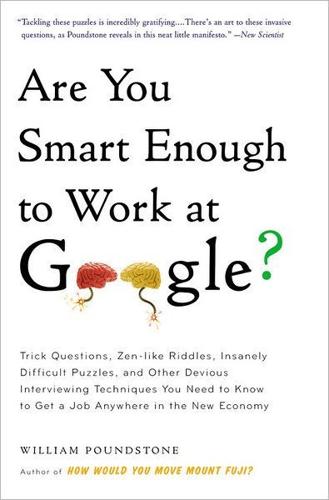
Are You Smart Enough to Work at Google?: Trick Questions, Zen-Like Riddles, Insanely Difficult Puzzles, and Other Devious Interviewing Techniques You ... Know to Get a Job Anywhere in the New Economy
by
William Poundstone
Published 4 Jan 2012
They can’t be adjacent—at best, they’d be kitty-corner to each other—and there’s no way the remaining domino can cover them. The best way to deal with these questions is to be aware of the commonly used ones. There’s a finite number, most of them venerable. Martin Gardner mentioned this one in his Scientific American column in 1957. Lateral Thinking Puzzles Like a crazy uncle making the same joke at every Thanksgiving dinner, some interviewers can’t resist tossing these in. These questions hinge on verbal ambiguity and mainly test whether you’ve heard them before. Here’s one: There are three women in bathing suits. Two are sad, and one is happy.
…
Two are sad, and one is happy. The sad women are smiling. The happy woman is crying. Explain. The interviewers who use questions like this probably consider them to be fun. This demonstrates the relativity of fun. The intended answer to the question above is, “They’re beauty contestants.” Lateral thinking puzzles are short and don’t seem to contain enough information to answer. That should tip you off. Tests of Divergent Thinking These are much like classic psychological tests for creativity. They are open-ended challenges that encourage brainstorming. There is no “right answer” to deduce. The goal is to toss out as many good ideas as you can, with extra credit for good original ideas.
…
Cost per window: 50 cents. Twenty million windows times 50 cents is $10 million. This question is used at Amazon and Google. Just so you don’t miss the joke, such as it is, Windows is another company’s registered trademark. ? A man pushed his car to a hotel and lost his fortune. What happened? (Lateral thinking puzzle.) He was playing Monopoly. ? You get on a ski lift at the bottom of the mountain and take it all the way up to the top. What fraction of the lift’s chairs do you pass? (Classic logic puzzle.) You pass all the ski lift’s chairs (except, of course, your own). The lift is like a loop of string on a pulley.

Rebel Ideas: The Power of Diverse Thinking
by
Matthew Syed
Published 9 Sep 2019
‘Whether it is a simple code, or something as complex as the Enigma cipher which the Bletchley codebreakers were working on, the trick is making links between letters and words,’ Smith said. ‘Crosswords are the same sort of lateral-thinking exercise.’17 Shortly before her death in 2013, Mavis Batey, who helped to crack the Italian Enigma, which would prove crucial to Britain winning the Battle of Matapan, gave an interview which showcased her capacity for lateral thinking. ‘My daughter worked in the Bodleian Library,’ she said, ‘and one day, she mentioned she had been working on “J” floor. “J”, I said, “10 floors down”. And she looked at me oddly and asked how I could have instantly known that.’
…
We sat at individual tables in front of a platform of invigilators including the editor, Mr Garvin and the timekeeper.’10 In the event, four of the contestants solved the puzzle in time and although Sedgewick was a word short when the bell rang, he impressed observers with his ingenuity and lateral thinking. The contestants were then treated to hospitality courtesy of the Daily Telegraph. ‘We were given tea in the chairman’s dining room, and dispersed with the memory of a pleasant way of spending a Saturday afternoon,’ Sedgewick said. It wasn’t until several weeks later that he received a letter in the post.

Think Like a Rocket Scientist: Simple Strategies You Can Use to Make Giant Leaps in Work and Life
by
Ozan Varol
Published 13 Apr 2020
James Carville and Paul Begala, Buck Up, Suck Up… and Come Back When You Foul Up: 12 Winning Secrets from the War Room (New York: Simon & Schuster, 2003), 89–90. 13. Abraham Maslow, quoted in Jim Whitt, Road Signs for Success (Stillwater, OK: Lariat Press, 1993), 61. 14. Seth Godin, The Icarus Deception: How High Will You Fly? (New York: Portfolio/Penguin, 2012). 15. Shane Snow, Smartcuts: The Breakthrough Power of Lateral Thinking (New York: HarperBusiness, 2014), 180, Kindle. 16. Pascal-Emmanuel Gobry, “Facebook Investor Wants Flying Cars, Not 140 Characters,” Business Insider, July 301, 2011, www.businessinsider.com/founders-fund-the-future-2011-7. 17. Jennifer Reingold, “Hondas in Space,” Fast Company, October 5, 2005, www.fastcompany.com/74516/hondas-space-2. 18.
…
Jeffrey Kluger, “On TIME’s Podcast ‘Countdown:’ The Flight That Nearly Took Neil Armstrong’s Life,” Time, July 31, 2017, http://time.com/4880012/neil-armstrong-apollo-gemini-nasa. 6. FailCon, “About FailCon,” http://thefailcon.com/about.html; FuckUp Nights, https://fuckupnights.com. 7. Shane Snow, Smartcuts: The Breakthrough Power of Lateral Thinking (New York: HarperBusiness, 2014), Kindle. 8. Gene Kranz, Failure Is Not an Option: Mission Control From Mercury to Apollo 13 and Beyond (New York: Simon & Schuster, 2009), 12. 9. Jennifer Reingold, “Hondas in Space,” Fast Company, February 1, 2005, www.fastcompany.com/52065/hondas-space. 10.
…
,” American Magazine, January 1921. 31. T. H. White, The Once and Future King (New York: Penguin Group, 2011). 32. The discussion on the Falcon 1 is based on the following sources: Tim Fernholz, Rocket Billionaires: Elon Musk, Jeff Bezos, and the New Space Race (Boston: Houghton Mifflin Harcourt, 2018); Snow, Lateral Thinking; Chris Bergin, “Falcon I Flight: Preliminary Assessment Positive for SpaceX,” Spaceflight.com, March 24, 2007, www.nasaspaceflight.com/2007/03/falcon-i-flight-preliminary-assessment-positive-for-spacex; Tim Fernholz, “What It Took for Elon Musk’s SpaceX to Disrupt Boeing, Leapfrog NASA, and Become a Serious Space Company,” Quartz, October 21, 2014, https://qz.com/281619/what-it-took-for-elon-musks-spacex-to-disrupt-boeing-leapfrog-nasa-and-become-a-serious-space-company; Max Chafkin, “SpaceX’s Secret Weapon Is Gwynne Shotwell,” Bloomberg Quint, July 26, 2018, www.bloombergquint.com/businessweek/she-launches-spaceships-sells-rockets-and-deals-with-elon-musk; Elon Musk, “Falcon 1, Flight 3 Mission Summary,” SpaceX, August 6, 2008, www.spacex.com/news/2013/02/11/falcon-1-flight-3-mission-summary; Dolly Singh, “What Is It Like to Work with Elon Musk?

The Rise of Superman: Decoding the Science of Ultimate Human Performance
by
Steven Kotler
Published 4 Mar 2014
When the explicit system (mostly on the left side of the brain) handles a problem, the neurons involved are very close to one another. This much proximity leads to linear connections, logical deductions, and all the other keystones of standard reasoning. When the implicit system is at work, its reach is much broader—far-flung corners of the brain are talking to one another. This is known to experts as “lateral thinking” or, to the business executives who so crave this talent: “thinking outside the box.” It means that novel stimuli can combine with random thoughts and obscure memories and the result is something utterly new. Creativity has a brain wave signature as well: alpha waves pulsing out of the brain’s right hemisphere.
…
Anandamide is an endogenous cannabinoid, and similarly feels like the psychoactive effect found in marijuana. Known to show up in exercise-induced flow states (and suspected in other kinds), this chemical elevates mood, relieves pain, dilates blood vessels and bronchial tubes (aiding respiration), and amplifies lateral thinking (our ability to link disparate ideas together). More critically, anandamide also inhibits our ability to feel fear, even, possibly, according to research done at Duke, facilitates the extinction of long-term fear memories. Lastly, at the tail end of a flow state, it also appears (more research needs to be done) that the brain releases serotonin, the neurochemical now associated with SSRIs like Prozac.
…
These five chemicals are flow’s mighty cocktail. Alone, each packs a punch, together a wallop. Consider the chain of events that takes us from pattern recognition through future prediction. Norepinephrine tightens focus (data acquisition); dopamine jacks pattern recognition (data processing); anandamide accelerates lateral thinking (widens the database searched by the pattern recognition system). The results, as basketball legend Bill Russell explains in his biography Second Wind, really do feel psychic: Every so often a Celtic game would heat up so that it would become more than a physical or even mental game, and would be magical.

Obliquity: Why Our Goals Are Best Achieved Indirectly
by
John Kay
Published 30 Apr 2010
In a knockout competition every player, except the eventual winner, is defeated once and once only, so the number of matches is one less than the number of players. Iteration and experience lead us to the best principles of analysis. The oblique solution involves recasting the problem—often described as lateral thinking—and then it becomes direct. The traditional job of the artist is to represent his subject—the view from the Grand Canal, the passion of Christ, the wife of an affluent patron. But the skill of the artist, like the talent of the poet, lies in the originality with which this goal is interpreted.
…
General Electric (GE) Generally Accepted Accounting Principles (GAAP) genetics Germany Getty, John Paul “Getty kouros” Gilmartin, Ray Gladwell, Malcolm Glaxo God Goldman Sachs gold standard Golf Is Not a Game of Perfect (Rotella) Gombrich, Ernst Goodhart’s law Google government graphic design Great Britain Great Society greed Green, Hetty gross domestic product (GDP) Guinness World Records Hahn, Frank halo effects Hammer, Michael Hanson Trust Harvard Business School Hayek, Friedrich von health care hedge funds “hedgehogs” Heights of Abraham Heller, Robert heroin addicts hindsight historical analysis Hitler, Adolf Hobbes, Thomas Honda Hopkins, Gerard Manley How the Mighty Fall (Collins) human development index (HDI) Hume, David Huxley, Aldous hypertension IBM Iceland ICI imagination, failure of IMD immunization income levels “incompletely theorized agreement” incremental change India industrialization infinite series information technology insider trading intelligence reports intermediate goals International Financial Reporting Standards (IFRS) intuition iPods Iraq war Irish potato famine iteration Jacobs, Jane Japan Jencks, Charles Jenkins, Roy Jobs, Steve job security Johnson, Lyndon B. Johnson, Robert Johnson & Johnson JPMorgan Chase judgment junk bonds juries Kasparov, Garry Keats, John Kelvin, William Thomson, Lord Kennedy, John F. Keynes, John Maynard Khan, Genghis Khmer Rouge Klein, Gary Kubrick, Stanley lactose lateral thinking leadership Le Corbusier Lehman Brothers Lenin, V. I. leprosy Levitt, Theodore Lewis, Michael Liar’s Poker (Lewis) life expectancy Lincoln, Abraham Lindblom, Charles literacy rate Litton Industries Lives of the Painters (Vasari) loans lobsters local goals logic London Business School London Underground Long-Term Capital Management McDonnell Douglas Machiavelli, Niccolò MacIntyre, Alasdair McKeen, John McNamara, Robert Maginot Line Malaya Mallory, George Malthusianism management management consultants man-and-dog problem manuals maps market capitalization market economies market fundamentalism market research market segments Marks, Simon Marks & Spencer marriage Marxism mass production materialism mathematics Mean Business (Dunlap) Merck Merck, George Merton, Robert C.
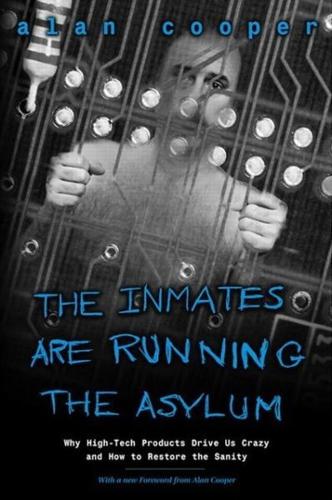
The Inmates Are Running the Asylum
by
Alan Cooper
Published 24 Feb 2004
Of course, sometimes those limits are real, and we cannot get around them, but there is great value in trying anyway. Even if we cannot finesse a constraint, our journey down the dead-end path might shed light on some previously hidden opportunity. This process is based on the "lateral thinking" work of Edward de Bono.[1] [1] Edward de Bono, Lateral Thinking, Creativity Step by Step, 1970, Harper & Row, New York, New York, ISBN: 0-06-090325-2. Programmers are princes of the practical. Their pragmatism leaves them little patience for improbable thinking. However, this strength can also be a weakness because sometimes a practical process can't solve the problem.
…
We must provide for all scenarios, but we need to design only for those that are important or that will occur frequently. Personas, goals, and scenarios are the heavy hitters in our design corner. Before moving on to a scenario case study, I'd like to mention a few other useful design concepts: inflecting the interface, perpetual intermediates, vocabulary, brainstorming, and lateral thinking. Inflecting the Interface You can always make an interaction easier, simply by removing functions and making the product less powerful. Occasionally that is an appropriate tactic, but not usually. The more-difficult design problem demands ease of use without sacrificing functions and power.
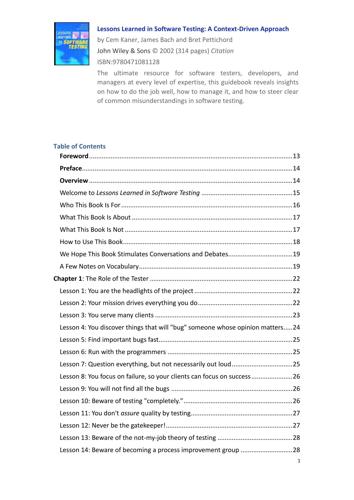
Lessons-Learned-in-Software-Testing-A-Context-Driven-Approach
by
Anson-QA
It involves forward, backward, and lateral thinking: Forward thinking. Work from what you know to what you don't know; what you see toward what you haven't yet seen. Seek ramifications and side effects. Example: I see a print menu item. I'll click on it and see what happens. Backward thinking. Work from what you suspect or imagine back toward what you know, trying to confirm or refute your conjectures. Example: I wonder if there's a way to print this document? I'll look through the menus and see whether there's a print item. (Solow 1990) Lateral thinking. Let your work be distracted by ideas that pop into your head, exploring tangents then returning to the main thread (de Bono 1970).
…
Software Engineering Professionalism Web site. Available at http://www.construx.com/profession/home.htm. -D- 237 Daconta, Michael C., Eric Monk, J. Paul Keller, and Keith Bohnenberger. 2000. Java Pitfalls: Time-Saving Solutions and Workarounds to Improve Programs. New York: John Wiley & Sons. de Bono, Edward. 1970. Lateral Thinking: Creativity Step by Step. New York: Harper and Row. DeMarco, Tom. 1997. The Deadline. New York: Dorset House Publishing. DeMarco, Tom and Timothy Lister. 1999. Peopleware: Productive Projects and Teams, 2nd edition. New York: Dorset House Publishing. Deming, W. Edwards. 1986. Out of the Crisis.
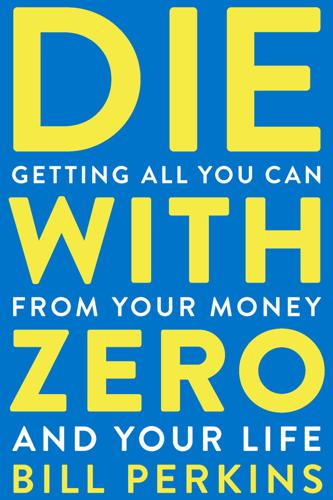
Die With Zero: Getting All You Can From Your Money and Your Life
by
Bill Perkins
Published 27 Jul 2020
Of those experiences you thought about earlier, think about which ones would be appropriate to invest in today, this month, or this year. If you’re resisting having them now, consider the risk of not having them now. Think about the people you’d like to have experiences with—and picture the memory dividends you stand to gain from having those experiences sooner rather than later. Think about how you can actively enhance your memory dividends. Would it help you to take more photos of your experiences? To plan reunions with people you’ve shared good times with in the past? Compile a video or a photo album? 3 Why Die with Zero? Rule No. 3: Aim to die with zero. Staying on autopilot is easy; that’s why we use it.
…
But if you want to be even more optimal—if you want to squeeze out every available bit of your life energy—the app can help. To find out more about the app and how it can help, please check out the appendix. Recommendations Think about your current physical health: What life experiences can you have now that you might not be able to have later? Think of one way in which you can invest your time or your money to improve your health and thereby improve all of your future life experiences. Learn about how to improve your eating habits to improve your health. Of the many books on this subject, the one I know well and always recommend is Eat to Live, by Joel Fuhrman, M.D.

Peopleware: Productive Projects and Teams
by
Tom Demarco
and
Timothy Lister
Published 2 Jan 1987
If it all comes up roses, you’ll feel fine, but next year you’ll be sweating it out again. That’s pretty close to how team formation works. Back to brainstorming mode: We began looking for “Six Things You Can Do to Make Team Formation Possible.” It was still hard. At last, in desperation, we tried a trick called inversion, described in Edward deBono’s Lateral Thinking. When you’re stuck trying to solve a problem, deBono suggests that rather than looking for ways to achieve your goal, look for ways to achieve the exact opposite of your goal. This can have the effect of clearing away the brain’s cobwebs that keep you from being creative. So instead of looking for ways to make team formation possible, we began to think of ways to make it impossible.
…
S., 93 “Fourteen Points”, 157 Fragmentation of time as team obstacle, 147 time wasting from, 196–197 Free electrons, 232–233 Frustrations from flow interruptions, 62 Fujitsu nonstandardization at, 181 team veto power, 23 Fun on the job, 221 brainstorming, 228 Coding War Games, 226–227 corrective actions, 235–237 cottage-industry phenomenon, 231–232 fellows, gurus, and intrapreneurs, 232–233 life counseling, 233–234 order from chaos, 223–224 pilot projects, 224–225 training, trips, conferences, celebrations, and retreats, 228–229 Functional consistency, 225 Furniture police, 37–40 FYIs e-mail, 200–201 meeting, 189–190 G Generational divide, 113–115 Getaway ploys, 163–164 Gilb, Tom, 58 Gilb’s Law, 58 Glitz, 74–75 Goals, team vs. corporate, 133–136 “Good enough” products, 168 Group interaction space, 88 Gurus, 232–233 H Hawthorne Effect nonstandard approaches for, 181 in pilot projects, 224 Hawthorne Western Electric Company, 181 Heterogeneity in jelled teams, 172 Hewlett-Packard community building at, 123 quality standards, 22–23 Hidden costs of turnover, 118–119 Hiding out, 54–55 High-Tech Illusion description, 5 self-healing systems, 180–181 Hiring aptitude tests, 105 auditions, 105–107, 165 diversity in, 109–111 introduction, 103–104 portfolios, 104–105 uniformity in, 94–95 Hitachi Software retraining at, 123 team veto power, 23 Homogeneous work groups, 172 Hornblower factor, 93–97 Hotels, 85 Human capital as expense, 125–127 Humiliation from change, 208–209 Hysterical optimism, management by, 134–136 I IBM, Santa Teresa facility, 51–52 Ideal workplace, 79–80 indoor and outdoor space, 87 organic order, 80–82 patterns, 82–84 public space, 87–88 tailored work space, 84–85 windows, 84–86 Identity in jelled teams, 136–137, 169–171 Immersion period for flow, 62–63 Improvement from change, 206 Incompatible multitasking, 71 Inconsistent products, 225 Individual differences in Coding War Games, 44–45 Individuality of employees, 10 Indoor and outdoor space pattern, 87 Industrial Revolution, 14 Innovation, leadership for, 101 Insecurity of management, 96 Inspirational posters, 151–152 Insubordination in skunkworks projects, 164 Interchangeable view of employees, 9–10 Internal competition in teams, 155–158 Interrupt-consciousness, 64 Interruptions flow factor, 62–64 from fragmentation, 197 getaways for, 164 telephones, 67–71 Intimacy gradient, 87 Intrapreneurs, 232–233 Inversion thinking, 144 Investment vs. expense, 126 in human capital, 127–130 time wasting issues, 197 Iterative design, 8 J Japanese companies quantity and productivity, 21–22 team veto power, 23 Jeffery, Ross, 27 Jelled teams Black Team, 139–141 breaking up, 171 chemistry, 167–172 vs. cliques, 137 competition, 155–158 concept, 133–134 cult of quality, 168–169 eliteness, 136–137, 169–171 getaways, 163–164 goals, 134–136 natural authority in, 165–166 network model of behavior, 171–172 obstacles, 143–152 reassurance in, 169 rule breaking, 164 signs, 136–137 team building, 159–160 voice in team member selection, 165 Joel, Billy, 14 Johnson, Jerry, 205 Johnson, Lyndon, 121 Joint ownership of product by teams, 137 Jones, Capers on scheduling, 28 on systems development costs, 146 Jugglers, hiring, 103–104 Just-passing-through mentality, 120 K Kay, Alan, 113 Kennedy, John, 121 Ketchledge, Ray, 122 Kronborg castle, 236 L Laetrile, 31 Languages changes, false hope from, 33 as Coding War Games factor, 45 Laptops at meetings, 188 Lateral Thinking (deBono), 144 Lawrence, Michael, 27 Leadership, 99 for innovation, 101 jelled teams, 171–172 as service, 100 talk:do ratio, 101–102 as work-extraction mechanism, 99 Learning, organizational. See Organizational learning Library borrowing of e-publications, 184 Life counseling, 233–234 Lister, Timothy, 183 Logic in Philosophy, 218 Loman, Willy (character), 102 Long-term perspective for turnover, 119 Loss of key people, productivity losses from, 17 Low turnover in jelled teams, 136 Loyalty free electrons, 233 and turnover, 120 M Machiavelli, Niccolo, 204 Maginot Line, 211 “Make a cheeseburger, sell a cheeseburger” mentality, 7–11 Malicious compliance, 179 Management corporate entropy, 96–97 definitions, 8–9 dress codes, 95–96 Hornblower factor, 93–97 by hysterical optimism, 134–136 leadership, 99–102 Management by Objectives (MBO), 157 Management Team, learning from, 214–215 Managing Transitions (Bridges), 206 Mao Tse-tung, 181 Matsubara, T., 22 Mazzucchelli, Lou, 168 MBO (Management by Objectives), 157 McCue, Gerald, 51–52, 61 McMenamin, Steve, 203, 232 Mean Time Between Failures, 20–21 Measurement flow time, 63–66 productivity, 57–60 Meetings attendance limitations, 190 ceremonies, 189–190 cures for, 191 early overstaffing, 194–196 hygiene, 189 neuro-sclerosis from, 187 open-space networking, 190–191 for reassurance, 194 stand-up, 188 status, 194 technologically enhanced, 188 Mentality of permanence, 122–123 Merit reviews as team obstacle, 157 Meta-plans, 81 Metaphysics in Philosophy, 218 Methodologies convergence of method, 179–180 high-tech illusion, 180–181 Methodology systems covert meaning, 176–177 malicious compliance, 179 problems with, 177–179 Middle management, learning from, 214–215 “Militantly Opposed” employees in change, 205 Miller, Arthur, 102 Mills, Harlan, 46 Mistrust as team obstacle, 144–145 Mitigation planning, 185 Modular cubicles, 84 Modular methods, 1 Morgan Motorcars Limited, 69 Motivation Methodologies, 179 scheduling effects on, 28 Motivational accessories, 99, 152 Moves, turnover from, 120–122 Multiple assignments, time wasting from, 197 Multitasking, incompatible, 71 Mushet, Michael L., 233 Music in workplace, 75–76 Mutual coordination, 200 N Names of teams, 136 Natural authority in teams, 165–166 Natural light, 39 Natural order, 81 Need-to-know test for e-mail, 200, 202 Negroponte, Nicholas, 213 network model of team behavior, 171–172 Networking, open-space, 190–191 Neuro-sclerosis, 187 New employee costs, 117–119 New South Wales, 27–29 New Status Quo phase in Satir Change Model, 208 Newton’s Law vs.
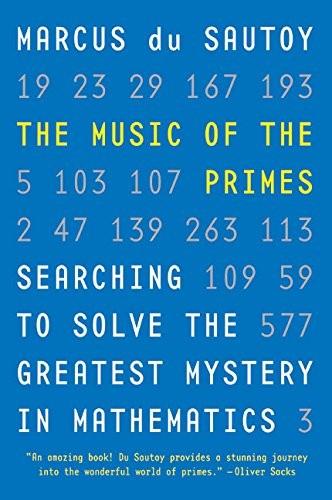
The Music of the Primes
by
Marcus Du Sautoy
Published 26 Apr 2004
There is nothing special here about 100. Replace it by N and you get the formula . The picture overleaf illustrates the argument for the triangle with 10 rows instead of 100. Instead of directly attacking his teacher’s problem, Gauss had found a different angle from which to view the calculation. Lateral thinking, turning the problem upside down or inside out to see it from a new perspective, is an immensely important theme in mathematical discovery and is one reason why people who can think like the young Gauss make good mathematicians. The second challenge sequence, 1, 1, 2, 3, 5, 8, 13, …, consists of the so-called Fibonacci numbers.
…
One has to find the right viewpoint from which to look for patterns. π is an important number not because its decimal expansion contains hidden messages. Its importance becomes apparent when it is examined from a different perspective. The same was true of the primes. Armed with his table of primes and his knack for lateral thinking, Gauss was on the lookout for the right angle and viewpoint from which to stare at the primes so that some previously hidden order might emerge from behind the façade of chaos. Proof, the mathematician’s travelogue Although finding patterns and structure in the mathematical world is one part of what a mathematician does, the other part is proving that a pattern will persist.
…
Abel, Niels Henrik 66, 223 Adams, Douglas 283 Adleman, Leonard 11, 228–32, 229, 236, 238, 240, 249 Agrawal, Manindra 245 American Mathematical Society 224, 301, 304 Analytical Engine (Babbage) 190 Apollonius 61 Appel, Kenneth 211, 212 Arago, François 45 Archimedes 52, 61 Armengaud, Joel 208 Aronofsky, Darren 28 astronomy 208 AT&T 12, 219–23, 254, 270, 273, 280, 281, 311 Atkins, Derek 239 atoms 264–9, 277, 278 axioms, consistent 179–80, 181 Babbage, Charles 189–90, 191 Babylonians 67 Baker, Alan 16, 256, 258 Bamberger, Louis 160 Barnes, Ernest 126–7 Bell Laboratories 219, 238 Berndt, Bruce 146 Berry, Sir Michael 84, 278–80, 283, 285–6, 307, 311 Bertrand, Joseph 164 Bertrand’s Postulate 164, 169–70 Bessel-Hagen, Erich 151, 154 ‘Bible code’ 271, 275 Birch, Bryan 250–52 Birch-Swinnerton-Dyer Conjecture 246, 250–51, 252 Bletchley Park, Milton Keynes, Buckinghamshire 174, 175, 190, 191, 192, 204, 205, 206, 226, 311 Bloomsbury publishing house 15–16 Bohr, Harald 117, 118, 119, 121–2, 123, 156, 159 Bohr, Niels 117 Bois-Reymond, Emil du 113 Boiteux, Marcel 299 Bolyai, János 110 Bombieri, Enrico 8, 13, 19, 193, 218, 231, 307 faith in the Hypothesis 10, 214–15, 219 Fields Medal 16, 308 joke email announces the Riemann Hypothesis proved 2,3,4,9,12–14, 19, 102, 285, 309 studies the Reimann Hypothesis as a teenager 2–3, 5 Bonne-Nouvelle military prison, Rouen 289, 294, 297, 298 Born, Max 267 Bourbaki group 292, 299, 300–301 Brent, Richard 217 Brewster, Edwin Tenney 176 Brunswick, Carl Wilhelm Ferdinand, Duke of 22, 51, 57 BSI (German Security Agency) 231, 240, 250 Cameron, Michael 209 Cantor, Georg 185–6, 201, 202 Carr, George 132, 133 Carroll, Lewis 82, 283 Cartan, Elie 289, 290, 295–6, 297 Cartan, Henri 297 Castelnuovo, Guido 296 Catherine the Great 41, 42, 43 Cauchy, Augustin-Louis 65–6, 70–71, 72, 75, 81, 84, 103, 113, 194, 289, 291 Central Limit Theorem 176, 177 Ceres 19, 20, 49, 54, 57 Certicom 249, 252–3 Changeux, Jean-Pierre 7 chaos theory 276, 280 Chebyshev, Pafnuty 104, 164, 168 Chinese 22–3 Chladni, Ernst 265, 266 Choquet, Gustave 288 Chowla, Saravadam 170, 171, 263 Church, Alonzo 187 Churchill, Sir Winston 175 Class Number Conjecture 257–8 Clay, Landon T. 14–17, 33, 242, 246, 252 clock calculator 20–22, 29, 30, 74, 76, 168, 232–5, 238, 239, 240, 249, 295 Cohen, Paul 16, 201–2, 282, 304, 308 Cold War 199 Cole, Frank Nelson 224–5, 236, 244 computers 193, 203, 204–23, 311 Connes, Alain 3, 4, 7, 14, 16, 288–9, 305–9, 311 Conrey, Brian 173, 281, 283–5 Cray computers 207, 208, 220–21, 270 Cray Research 207, 208, 209 Critical line 99 cryptography 224–54 d’Alembert, Jean Le Rond 111 Davenport, Harold 126 Davis, Martin 198 de la Vallée-Poussin, Charles 106, 117, 127, 128, 168, 172, 311 De Morgan, Augustus 43 Decision Problem (Hilbert) 184, 186, 187, 188, 197 Dedekind, Richard 73, 106, 151, 153 Deligne, Pierre 16, 146 Descartes, René 62, 70, 111 Deuring, Max 258 Diaconis, Persi 271–5, 273 Diderot, Denis 42–3 Dieudonné, Jean 292 Difference Engine (Babbage) 189 Diffie, Whit 226–9 Diophantus 29 Lejeune-Dirichlet, Rebecka 75 Dirichlet, Peter Gustav Lejeune 64, 65, 73, 75, 76, 81, 82, 83, 100, 102, 106, 116, 134, 150, 155, 168–9 Dirichlet’s Theorem 81, 168–9 Doxiadis, Apostolos 15 Drazin, Philip 286 Dyson, Freeman 262–4, 267, 269, 275, 312 e-business 11, 74, 241, 246, 253 ECC Central 249, 250 Eddington, Arthur 110, 128 Egypt/Egyptians 67, 94 Einstein, Albert 2, 74, 161, 162, 166, 179, 307 Theory of Relativity 100, 289 electromagnetism 73–4 Electronic Frontier Foundation 209 electrons 265, 267, 268, 277 elliptic curves 246, 249, 251–2, 253 Encke, Johann 55, 56, 72 Enigma code 175, 190–91, 192, 205, 206, 225, 226, 242 equations 107, 113, 114, 193, 197–201, 295, 296 Eratosthenes 23, 239 erbium 264 Erdos, Paul 162–5, 168–71, 173, 176, 209, 219, 238, 245, 262, 311–12 Euclid 36–8, 37, 58, 61, 76, 81, 102, 109, 110, 111, 163, 178, 204, 205, 209, 243, 292, 301, 310 algorithm 16 Euler, Leonhard 41–5, 42, 57, 71–2, 77, 79–80, 86–9, 93, 97, 102, 104,105, 106, 113, 133, 135, 150, 162, 200, 223, 233, 235, 266 Euler’s product 17, 80–81, 89 Faber & Faber 15–16 Faber-Bloomsbury Goldbach prize 15–16 factorising numbers 236–8, 257–8, 259, 261 Felkel, Antonio 47 Feller, William 272 Fermat, Pierre de 5, 22, 29, 39–41, 44, 68, 76, 101, 122, 133, 136, 154, 168, 223, 231, 232, 233, 238, 292 Factorisation Method 238–9 Last Theorem 5, 12–16, 29, 33, 34, 44, 101, 113–14, 115, 118, 119, 136, 171, 193, 228, 233, 248, 251, 282, 289, 296, 298, 308 Little Theorem 8–9, 232, 233, 235, 238, 244 Feynman, Richard 262, 263, 285 Fibonacci, Leonardo 25–6 Fibonacci numbers 25, 26, 27, 142, 204, 206 Fields, John 16 Fields Medals 16, 146, 172, 202, 246, 289, 302 First World War 144, 145, 148, 155, 292 Five Hysterical Girls Theorem, The (off-Broadway show) 224 Flannery, Sarah 246–8, 249 Four-Colour Problem 210–12, 210 Fourier, Joseph 60, 93–6, 291 Fourier series 17 fourth dimension 84, 85 fractions 67 Frederick Barbarossa, Emperor 1–2, 115 Frederick the Great 41 French mathematical tradition 69–70, 72, 108 French Revolution 17, 53, 60, 94, 119, 291 Frenicle de Bessy, Bernard 233 Frey, Gerhard 204 Fry, John 281, 284 Fry Electronics 281, 282 Fuld, Caroline Bamberger 160 functions 71–2 Gage, Paul 207, 208 Galileo Galilei 269 Gandhi, Mahatma M.K. 293 Gardner, Martin 230–31, 236 Gauss, Carl Friedrich (main references) 21, 26, 52 background and childhood 20 Class Number Conjecture 257–8 clock calculators 20–22, 29, 30, 74, 232, 233, 234, 249, 295 death 74 director of Göttingen Observatory 57–8 discovery of Ceres’ path 19–20, 24, 49, 54, 64 discovery of a pattern in primes 47–51, 57 failure to disseminate his discoveries 20, 52–3 geometry 109–10, 202 and Germain 193–4 imaginary numbers 69, 71, 84, 85, 221, 257–8, 260–61 lateral thinking 25 logarithms 46–7, 55, 62, 72, 74, 91, 206 methods outstrip Legendre’s 56–7 patronage 22, 51–2 prime motivation 52 Prime Number Conjecture (later Theorem) 49, 53–4, 54, 57, 82, 83, 89, 90, 91, 97, 100, 103–6, 117, 134, 138, 142, 164–8, 170–73, 176, 243, 262, 270, 281, 291, 295, 308, 310–13 second conjecture 57, 128–30 stresses the value of proof 51 triangular numbers 25, 26, 26, 29, 32, 52 and Weber 73–4 Dirichlet succeeds 75 Gaussia 75 Gaussian integers 17 geometry 4, 61, 62, 67, 70, 74, 84, 87–8, 100, 109–13,178, 180, 202, 282, 289, 300, 306–7, 313 algebraic 296, 298, 302, 305, 306 Cartesian 111 non-commutative 288–9, 305, 309 Germain, Sophie 193 Germain primes 193 German Mathematical Society 108 Germany: educational revolution 60, 72 hyperinflation 118 Nazi 156 Ghosh, Amit 283 Gödel, Kurt 1, 2, 177, 178–84, 179, 187, 196, 197, 201, 256, 257, 263, 302, 312 Incompleteness Theorem 181, 182, 184, 186, 190 Gödel numbering 17, 181 Goethe, Johann Wolfgang von 59 Goldbach, Christian 44 Goldbach’s Conjecture 15–16, 31, 115, 141, 143, 158, 181, 182, 183, 256 golden ratio 27 ‘golden shield’ 253 Gonek, Steve 284, 285 Göttingen 62–4, 106, 118–9 Göttingen Library 73, 151, 154, 286–7 Göttingen Observatory 57 ‘Göttingen Seven’ 74 Gowers, Timothy 246 Graff, Michael 239 Grand Prix des Sciences Mathématiques (Paris Academy) 95, 104–5, 108, 116 Great Internet Mersenne Prime Search (GIMPS) 208 Greeks 20, 23, 29, 32, 34–5, 36, 41, 51, 61, 67, 68, 81, 84, 105, 106–7, 109, 110, 169, 178, 181, 194, 224 Greene, Graham 34 Griffith, C.L.T. 135 Grothendieck, Alexandre 16, 298, 299–306, 300, 303, 308 Guthrie, Francis 210, 211 Hadamard, Jacques 105, 106, 117, 127, 128, 134, 168, 172, 291, 311 Hajratwala, Nayan 209 Haken, Wolfgang 211, 212 Hardy, G.H. 11, 17, 30–31, 33, 38–9, 78, 119–23, 124, 153, 162–3, 165, 175, 212–13, 301, 313 on the difficulty of the primes 132 and Landau 155 and Littlewood 123–8, 132, 137–8, 143, 147, 152, 158–9, 170, 177, 256, 259, 260, 283 and Ramanujan 136–47, 158, 162 and Riemann Hypothesis 120, 121–2, 125–6, 150, 188, 312 and Skewes Number 129 and Turing 187, 188, 190 on uselessness of mathematics in real world 222–3, 250 Hardy-Littlewood Circle Method 17, 143 harmonic series 79, 80 Hasse, Helmut 251 Hawking, Stephen 84, 180 Hecke, Erich 258 height function 253 Heilbronn, Hans 128, 258 Heisenberg, Werner 267 Uncertainty Principle 180, 305 Hellman, Martin 227–8, 228, 229 Hermite, Charles 103, 104–5 Heuser, Ansgar 231, 240 Hewlett-Packard 12, 280, 281, 311 Hilbert, David 102, 106–16, 107, 108–9, 118, 125, 128, 148, 153, 155–6, 175, 191, 193, 291 brings best mathematicians to Göttingen 118, 119 death 156 Decision Problem 184, 186, 187, 188, 197 equations 107, 114, 193, 197–8, 199 geometry 109, 110–11, 178, 180 and Gödel 178, 179, 180, 182 and Hardy 119–20 lecture to International Congress of Mathematicians 1, 2, 112–15, 183–4 and a new approach 14–15, 112 and Noether 194 and Riemann Hypothesis 1–2, 17, 106, 114, 115, 243, 312 sets twenty-three problems 1–2, 113–15, 282 and Siegel 149, 152 tenth problem 114, 183, 197–9 Hilbert space 16 Hill, M.J.M. 135, 136 Hindu mathematicians 68 Hitler, Adolf 155, 160, 251, 291, 293 Hodges, Andrew 190 Humboldt, Alexander von 64, 75 Humboldt, Wilhelm von 59, 60, 64, 237 hydrogen 268 Hyperion (a satellite of Saturn) 24 imaginary numbers 66–72, 70, 81, 82, 84, 85, 86, 88, 103, 113, 115, 119, 221, 251, 257–8, 259, 261, 266, 267, 286, 287, 289, 300 infinities 185–6 Ingham, Albert 188, 283 Institut des Hautes Etudes Scientifiques, Paris 299, 303 International Congress of Mathematicians 1, 2, 3, 16, 17, 112, 115, 172, 183–4, 208 Internet 11–12, 74, 225–32, 247 irrational numbers 6, 67, 68, 68 Ishango bone 22 Iyer, Ganapathy 136 Iyer, Narayana 139 Jacobi, Carl 59–60, 75, 139 Jacquard weaving looms 189–90 James, Henry 34 Jordan, Camille 123 Kabalah 240 Kac, Mark 165 Kant, Imannuel 112 Katz, Nick 308 Kayal, Neeraj 245 Keating, Jon 283, 284, 285–7 Kelvin, Lord 95 Kingsley, Ben 240 Klein, Felix 108, 150, 153 Klondike (Idiot’s Delight) card game 274–5, 274 Koblitz, Neal 248–9, 250, 253 Königsberg (later Kaliningrad) 43, 106, 108, 178 Krieger, Samuel I. 196 Kulik, Jakub 56 Kummer, Ernst 150 Lagrange, Joseph-Louis 65, 301 Landau, Edmund 116–18, 117, 128, 132, 137, 143, 148–9, 152–5, 301 Landau, Leopold 148 Landau, Lev 268–9, 270 Lascar, Larry 240 Legendre, Adrien-Marie 53, 54, 56–7, 60, 62, 95, 132, 261–2 Lehmer, Derrick H. 196, 204, 206, 207, 215 Lehmer, D.N. 196, 204, 205–6 Leibniz, Gottfried 77–8, 119 Lenstra, Arjen 239 Lenstra, Hendrik 218, 237 Levinson, Norman 172–3 Leyland, Paul 239 Lindeberg, J.W. 176, 177 Linnik, Yu.

All Tomorrow's Parties
by
William Gibson
Published 2 Jan 1999
What he needed, he thought, was something he could do that they weren't expecting. Something that put the shoe on the other foot, or anyway he should lose them, whoever they were. Then maybe he could raise Laney and get Laney's take on who they might be. He'd had an instructor in Knoxville who'd liked to talk about lateral thinking. Which in a way wasn't that far off what Durius meant when 186 he talked about serious users getting lateral, out on the sidewalk outside Lucky Dragon. Just losing it. What it took, sometimes, was just your basic jack move, something nobody, maybe even you, was expecting. To his right now, he saw he was passing a stretch of wall that was actually canvas, like a sail or an old tent, stretched tight over lumber and maybe half an inch thick with however many coats of paint it had had since it was put up here.
…
187 He started along the walkway, feeling a rising sense of triumph: he'd done it. Lost 'em. Wherever he was, up here, he'd be able to find his way back out, and down, and then he'd see how it went. But he had the projector and he'd lost them and he hadn't gotten his ass shot for interrupting somebody's poker game. "Lateral thinking," he said, congratulating himself, as he reached the end of the walkway and rounded a corner. He felt the rib crack as the weight lifter hit him and knew that the black glove, like the ones he'd trained with in Nashville, was weighted with lead. It sent him back against the opposite wall, his head slamming against that, and his whole left side refused to move when he tried.

Frequently Asked Questions in Quantitative Finance
by
Paul Wilmott
Published 3 Jan 2007
Turnover In a dark room there is a table, and on this table there are 52 cards, 19 face up, 33 face down. Your task is to divide the cards into two groups, such that in each group there must be the same number of face up cards. You can’t switch on a light, ask a friend for help, all the usual disalloweds. Is this even possible? (Thanks to golftango and Bruno Dupire.) Solution An elegant lateral thinking puzzle, with a simple solution. Move any 19 cards to one side and turn them all over. Think about it! The use of an odd number, 19 in this case, can be seen as either a clue or as a red herring suggesting that the task is impossible. Muddy faces A group of children are playing and some of them get mud on their foreheads.
…
Brainteasers There are several different types of brainteasers you might get asked, all designed to test how your mind works under pressure, and to try and gauge how smart you are, rather than how much you have learned.• Straightforward calculation. Example: How many trailing zeros are there in 100 factorial? • Lateral thinking. Example: Several coworkers would like to know their average salary. How can they calculate it, without disclosing their own salaries? • Open to discussion. Example: What’s the probability that a quadratic function has two real roots? • Off the wall. Example: How many manhole covers are there within the M25?
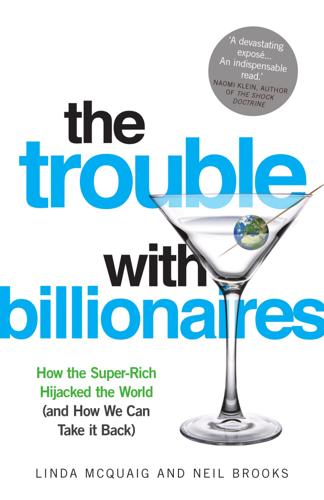
The Trouble With Billionaires
by
Linda McQuaig
Published 1 May 2013
Hindery, whose contribution was to found a cable television sports network (a clear example of a government-granted monopoly, by the way), put it like this: ‘I think there are people, including myself at certain times in my career, who because of their uniqueness warrant whatever the market will bear.’9 Similarly, Lew Frankfort, chairman and chief executive of the high-end handbag company Coach, argues that today’s extraordinary pay packages can be justified because of the extraordinary skills required by the individuals running corporations in the ‘technological age’. As he told The New York Times in 2007, ‘To be successful, you now needed vision, lateral thinking, courage, and an ability to see things, not the way they were but how they might be.’ Sanford I. Weill, long a towering figure on Wall Street, is also impressed with the contributions of billionaires like himself: ‘People can look at the last twenty-five years and say that this is an incredibly unique period of time.
…
Today, the stupendous economic gains made possible by the technological advances of the computer age have been almost entirely captured and retained by a tiny elite, with little of the wealth flowing back to society through the tax system. This seems grossly unfair. It also appears to have led some of the lucky few to develop a false sense of their own contribution. We take issue, for instance, with Lew Frankfort, the CEO of Coach, who argued that today’s billionaires deserve their fortune because they had the ‘vision, lateral thinking, courage and an ability to see things’ that was necessary to succeed in the ‘technological age’. We think he’s got things backwards. The enormous rewards at the top haven’t come about because today’s elite has been particularly far-sighted, visionary or courageous in the technological age. Rather, the technological age has produced spectacular breakthroughs, and the elite has been adroit at seizing a particularly large portion of the resulting economic gains for itself, and lobbying to ensure that the tax system retrieves little back for society.
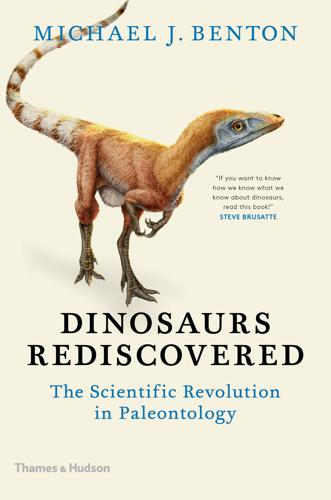
Dinosaurs Rediscovered
by
Michael J. Benton
Published 14 Sep 2019
One by one the speculations about evolution, locomotion, feeding, growth, reproduction, physiology, and, finally, colour have fallen to the drive of transformation. A new breed of dinosaur palaeobiologist replaced the older ones, and they have applied a hard eye to the old speculations. Smart lateral thinking, new fossils, and new methods of computation have stormed the field. Beginnings Like so many, I became fascinated with dinosaurs when I was young. When I was seven, I was given a classic little book, Fossils, a Guide to Prehistoric Life, by Frank Rhodes, Herbert Zim, and Paul Shaffer.
…
At the same time, the Yale team, led by Jakob Vinther, published their reconstruction of an even more gaudy dinosaur, Anchiornis from the Jurassic of China, which sported black and white stripes on its wings and tail, and a lovely ginger crest on top of its head, as well as specklings of black and ginger feathers on its cheeks. What does this all mean, though? Determining the colour of a dinosaur may be a bit of smart lateral thinking, perhaps a clever parlour trick, but can it tell us anything useful? Did dinosaurs indulge in sexual selection? Identifying the colour of dinosaur feathers revolutionized our appreciation of the complexity of dinosaurian behaviour. Birds today have feathers for three main reasons – insulation, signalling, and flight.
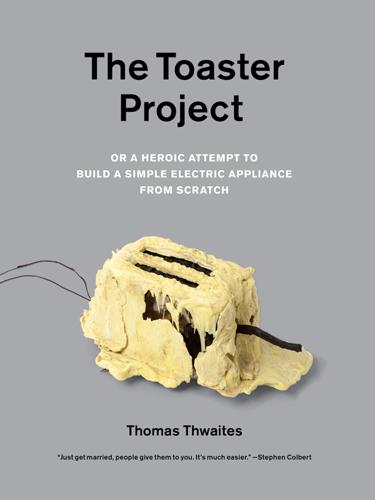
The Toaster Project: Or a Heroic Attempt to Build a Simple Electric Appliance From Scratch
by
Thomas Thwaites
Published 27 Sep 2011
I leave the two halves of the mould apart, hoping it will help my toaster case set evenly. Over the next couple of days a strong vinegar smell percolates through the house, and I watch with mounting unease as my plastic cracks up as it dries. Another failure. London to Manchester, 173 miles This situation requires some lateral thinking. In the discipline of geology, a debate is currently raging over whether or not to declare the beginning of a new epoch—the Anthropocene—a geological age of humanity’s own making. This would be quite a big deal in geological circles, as epochs don’t begin every year—generally more like every few million.

Comedy Writing Secrets
by
Mel Helitzer
and
Mark Shatz
Published 14 Sep 2005
Since it appears that exaggeration is the logical antithesis of realism, it may seem ludicrous to have both within the framework of one piece of humor. But good humor is a paradox—the unexpected juxtaposition of the reasonable next to the unreasonable—and that creates surprise. Think of the combination of realism and exaggeration as an exercise in lateral thinking, a technique commonly used by business gurus to solve The Recipe for Humor 51 problems and generate new ideas. It's defined as an interruption in the habitual thought process, a leap sideways out of ingrained patterns. Comedy has been doing this for thousands of years. Supreme Court Justice Sandra O'Connor went with the other justices to a restaurant for lunch.
…
K Katz, Mark, 42, 218 Kaufman, George S., 196-197 Kean, Edmund, 94 Keaton, Buster, 243 Keillor, Garrison, 157, 234, 235-236 Keith-Spiegel, Patricia, 21 Kelley, Steve, 277 Kennedy, John F., 218 KISS approach, 212 Klein, Robert, 231 L Landers, Ann, 253 Lang, William, 152 Larry the Cable Guy, 222 Larson, Gary, 272 lateral thinking, 51-52 LaughLab, 32 laughter, as instinct, 26-27, 29 Leacock, Stephen, 52 Leary, Denis, 232, 242 Leno, Jay, 4, 15, 226 Leonard, Jack E., 243 Letterman, David, 4,12, 41, 134, 204, 225-226, 251 Lewis, Jerry, 239 Lewis, Joe E., 231 Lewis, Richard, 230 Liebman, Wendy, 229 Linkletter, Art, 98, 322 listing, 115-122 live performance, 222-223, 239-251, 330 localizing humor, 207, 208-209 Luckovich, Mike, 277 M MacDonald, Dwight, 187 malaprops, 62, 70-72 Index 339 Mankoff, Bob, 270, 278 MAP, 13-15, 37, 225-226, 238, 317-318 shock humor and, 194 in speech-writing, 206-212 Martin, Steve, 12, 224, 231, 241 Marx Brothers, 182 Marx, Groucho, 241, 242 masks of comedy, 226-238 material generating, 16-17, 20, 61 organizing and tracking, 16-17 originality of, 4-5, 261, 289-290 targeting to performer and audience, 13-14, 15, 37 testing, 74, 200, 225-226, 328-329 McMahon, Ed, 215 McSweeney's Internet Tendency, 263 Meara, Anne, 309-310 Meir, Golda, 203 Mencken, H.L., 37 Miller, Dennis, 232 Mindess, Harvey, 25 misdirection, 22, 125-126 money, as source of hostility, 43, 45-46 Monty Python, 177, 315 Morley, John, 4, 200 Mostel, Zero, 182 O obscenity, 34, 43-44, 67-68, 69, 186-195, 246, 261, 316 Oliphant, Pat, 277 Olivier, Sir Laurence, 54 one-liners, 64, 254, 256-258. 268, 269, 280 Onion, The, 263 online humor, 263-264, 324-326 Orben, Robert, 110, 208, 220 overstatement, 166, 167, 175176, 254, 258, 271-272 See also exaggeration. oxymorons, 62, 73 P paired elements, 138-149, 280, 284 in aphorisms, 138, 147-148 numbers, 146-147 omitting second element of, 140 names funny, 182-184 nick-, 292-293 Nast, Thomas, 275 National Lampoon, 44 Nelson, Bob, 160-161 Nelson, Roy Paul, 254 Nessen, Ron, 197 New Yorker, The, 261, 268- phrases, 138-140 reverses in, 139, 140 sentences, 138-140 take-offs in, 139, 142 words, 141-145 paradox, as humor, 5l Parker, Dorothy, 52 parody, 4 Paulos, John Allen, 100 pauses, 55, 97, 175, 304 Peanuts, 274 Perelman, S.J., 62, 104, 269, 270, 273, 278 newsletters, 313-314 nihilistic humor, 44, 264 174, 182 performance, live, 222-223, 239-251, 330 N 340 non sequiturs, 100-101, 174 nonsense, exaggeration as, 170-171 Noonan, Peggy, 220 numbers exaggerating, 172-173 funny, 186 paired, 146-147 understating, 174-175 Comedy Writing Secrets performer, matching audience and material to, 13-14, 15, 37 See also MAP, persona.

How Doctors Think
by
Jerome Groopman
Published 15 Jan 2007
Although "thinking outside the box" has become a hackneyed phrase, it still embodies the truth that sometimes "lateral thinking" that breaks out of the ordinary is vital. That "box" is the MRI scan, a revered technology that strongly constrains a doctor's thinking. Creativity and imagination, rather than adherence to the obvious, are needed in situations where the data and clinical findings do not all fit neatly together. Dr. Karen Delgado, the specialist in endocrinology and metabolism, is well recognized in her city for her lateral thinking, making diagnoses that require such creativity and imagination. When I asked her how she learned to think this way, she said she wasn't sure, but that when she was an intern she liked to play a mind game.
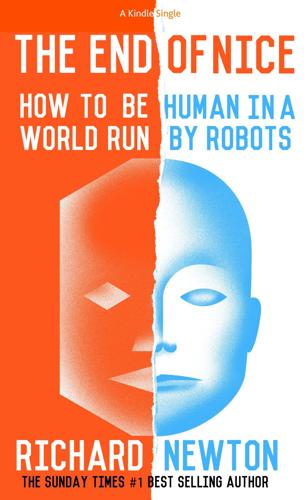
The End of Nice: How to Be Human in a World Run by Robots (Kindle Single)
by
Richard Newton
Published 11 Apr 2015
After all, he had faked an identity as a lawyer, doctor, US Bureau of Prisons agent, teaching assistant at Brigham Young University and, infamously, as a civil airline pilot. He’d also forged cheques totalling $2.5m. Inventing these multiple personalities, faking uniforms, cheques, official documents, all required prodigious feats of imagination, innovation and lateral thinking. Social Risks Many of the leading examples of Anti-Nice behaviour in the creative and entrepreneurial fields have disagreeable traits. It’s not that they feel the need to be obnoxious or unpleasant, so much as they are prepared to take “social risks”. Nice culture frowns on this; we are genetically and culturally built to be social animals (excellent sheep – in the phrase popularized by William Deresiewicz) that fit in and seek approval.

Pattern Recognition
by
William Gibson
Published 2 Jan 2003
I'm not sure that you ever are." Bigend smiles, then, a smile she hasn't seen before, less teeth and perhaps more genuine. It is a smile she suspects is meant to indicate that she has made it across at least the first moat of his persona, has become to some extent an insider. That she knows a realer Bigend: lateral-thinking imp of the perverse, thirty-something boy genius, seeker after truth (or at least functionality) in the markets of this young century. This is the Bigend that invariably emerges in the articles, no doubt after he's gotten to the journalist with this smile and his other tools. "I want you to find him." ' , Him.
…
He's buying Dorotea's allegiance with the one thing that literally no one else can offer her: a potentially fast-track position in Blue Ant. And as Cayce recognizes this, she's suddenly very curious as to what it is that Dorotea knows. "Then tell me," she says, facing Dorotea, pointedly ignoring Boone, what Hubertus imagines I'll find so very interesting." "I like your jacket," Dorotea says. "Is it new?" And Cayce will later think that Franco, just then, had come very close to not being the only one to risk having had nasal cartilage driven into his forebrain, but Dorotea is out of immediate reach and Cayce refuses to rise to the bait. Dorotea smiles. "Three weeks ago," Dorotea begins, "I took a call in Frankfurt from someone in Cypress.
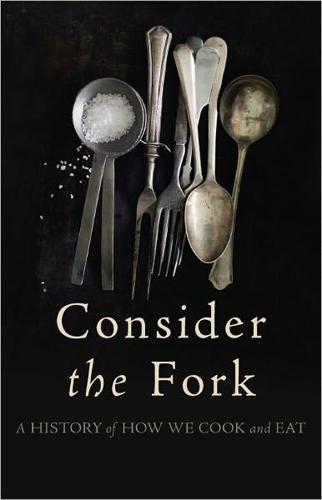
Consider the Fork: A History of How We Cook and Eat
by
Bee Wilson
Published 14 Sep 2012
Both these problems—the tedious cleanup and the limited size—were solved in one fell swoop by the immersion, or stick blender, patented as the Bamix in Switzerland in 1950, but not generally used in the home in the United Kingdom or the United States before the late 1980s. I consider this one of the greatest kitchen tools: it was a virtuoso piece of lateral thinking to bring the blender to the pot rather than the other way around. My handheld blender gets used most days, whether for emulsifying a vinaigrette, making banana smoothies, creating a ginger-garlic puree for Indian cooking, or rendering a tomato-butter pasta sauce silky smooth. It is a marvel.
…
In designing a peeler that Betsey wouldn’t find difficult to grip, Farber realized he could also make a tool that would be easy for everyone to hold. He approached the design firm Smart Design with his idea, and in 1990, after many prototypes were tried and rejected, the OXO vegetable peeler was unveiled at a gourmet show in San Francisco. The OXO peeler represents a great piece of lateral thinking. You might assume that the way to build a better peeler would be to focus on the blade. Farber saw that the key for the cook using it was really the handle. The OXO’s blade is super sharp, and angled like the old carbon-steel swivel peelers. What makes it different, however, is the soft, chunky, slightly ugly, black handle.

Pure Invention: How Japan's Pop Culture Conquered the World
by
Matt Alt
Published 14 Apr 2020
And so too did another little gadget called the Game Boy. * * * — NINTENDO TOOK ITS sweet time creating a successor to the Famicom. Never a company at the forefront of technological innovation, it chose instead to follow a path established by Gunpei Yokoi, who espoused a design philosophy he termed “lateral thinking with withered technology.” In plain English, it meant that when Nintendo developed a new product, they stuck with cheap and proven off-the-shelf components instead of gambling untold sums on creating cutting-edge new ones themselves. This seemingly retrograde mindset, completely at odds with the envelope-pushing attitudes of most tech companies, crystallized in the product for which Yokoi would be most remembered.
…
Echoing Nintendo of America’s initial reaction: Michael Katz, “Interview: Michael Katz (2006-04-28) by Sega-16,” Segaretro.com, April 4, 2006, https://segaretro.org/Interview:_Michael_Katz_(2006-04-28)_by_Sega-16. Sega did everything they could: Sheff, Game Over, 445. Never a company at the forefront of technological innovation: Gunpei Yokoi, Monotsukuri no Inobeshon Kareta Gijutsu no Suihei Shiko to ha Nanika? (Creation and Innovation: What Is “Lateral Thinking with Withered Technology”?) (Tokyo: P-Vine Books, 2012). “We called it the Lameboy”: Personal interview with Rebecca Heineman, April 3, 2019. One specimen, carried into Kuwait: Cameron Sherrill, “This Game Boy Survived a Bombing in the Gulf War,” Esquire, April 21, 2019, https://www.esquire.com/lifestyle/a27183316/nintendo-game-boy-survived-gulf-war/.
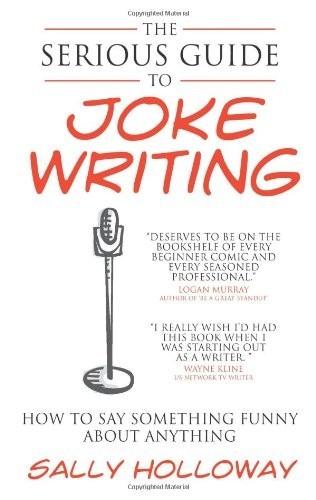
The Serious Guide to Joke Writing: How to Say Something Funny About Anything
by
Sally Holloway
Published 2 Nov 2010
If jokes were that easy to write we wouldn’t laugh so hard at them. A joke writing brain is just one step ahead of all the other brains that we want to understand and admire our joke. It can’t be outside anyone’s grasp, unless you don’t understand jokes in the first place. Jokes are exaggeration, lateral thinking, twisting words, applying one situation to another, taking things out of context, mimicking, slapstick, observation and any combination of the above. Ideas enlarge the mind, and once the mind has been stretched, it never goes back to its original size. Robert Mankoff What’s more we all make jokes naturally to a greater or lesser extent.

Simple Matters: Living With Less and Ending Up With More
by
Erin Boyle
Published 12 Jan 2016
Do you already have a table that you don’t want to part with? Is the Formica table one that will serve you as the place for family dinners, afternoon homework sessions, and late-night present wrapping? If it is, then keep it. If it’s not, and especially if it’s something that you plan to “save for later,” think twice about keeping it in your home. This lamp was made out of a crystal candlestick sometime in the last century. It was in my childhood bedroom growing up and in my grandmother’s home before that. This telephone table is an example of a piece of family furniture that was passed down.

This Is How You Lose the Time War
by
Amal El-Mohtar
and
Max Gladstone
Published 15 Jul 2019
It sniffs the air, inclines its head in Red’s direction. Blue tears out its throat. Her teeth are very sharp. She has four rows of them. Her double-banked eyes see beautifully in the dark. Her six legs end in tearing points, rip the voiceless creature into hot, pulsing meat. It gets its own in—good for the story she’ll have to tell, she’ll later think, when she can recover thought, when she can act again from something besides pure, obliterating need—and she bleeds in her wolf shape but makes no sound, nothing to distract Red from the absence of epiphany, the hollowing that left a space for another, the moment when she became Blue’s. Blue eats the carcass, all but its teeth and venom sack.

Tackling TypeScript
by
Dr. Axel Rauschmayer
Published 14 Apr 2020
: number | string, }; function func(arg: MyType) { if (typeof arg.prop === 'string') { // %inferred-type: string arg.prop; // (A) [].forEach((x) => { // %inferred-type: string | number | undefined arg.prop; // (B) }); // %inferred-type: string arg.prop; arg = {}; // %inferred-type: string | number | undefined arg.prop; // (C) } } Let’s take a look at several locations in the previous code: Line A: We narrowed the type of arg.prop via a type guard. Line B: Callbacks may be executed much later (think of asynchronous code), which is why TypeScript undoes narrowing inside callbacks. Line C: The preceding assignment also undid narrowing. 23.2.6 Narrowing Array element types 23.2.6.1 The Array method .every() does not narrow If we use .every() to check that all Array elements are non-nullish, TypeScript does not narrow the type of mixedValues (line A): const mixedValues: ReadonlyArray<undefined|null|number> = [1, undefined, 2, null]; if (mixedValues.every(isNotNullish)) { // %inferred-type: readonly (number | null | undefined)[] mixedValues; // (A) } Note that mixedValues has to be read-only.

The History and Uncertain Future of Handwriting
by
Anne Trubek
Published 5 Sep 2016
On his lap rested a scribal kit, an exalted, sometimes religious object; one was placed in King Tut’s tomb that contained two inkwells, one red, one black, and a vessel for water used to wet the ink. The black ink was made from carbon, the red ink from an iron oxide. The boy used the red ink—as would the Christians centuries later (think “red-letter day”)—only for important words and headings. His ink choice also had religious resonances; he would switch from black to red, a color associated with danger, to write the word “evil,” for example. To write—or, perhaps more precisely, to paint—the boy took up a long, thin hollowed-out tool made out of the reeds that grew in the fields around him.
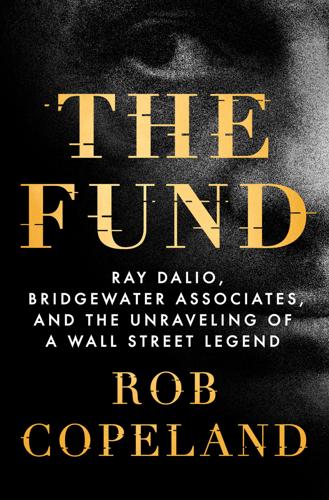
The Fund: Ray Dalio, Bridgewater Associates, and the Unraveling of a Wall Street Legend
by
Rob Copeland
Published 7 Nov 2023
Ferrucci and his team tried the same with the Book of the Future. He laid out a list of the attributes in the Dot Collector and looked them up in the dictionary. “What does creativity actually mean?” he asked. The answer, from Merriam-Webster: “the ability to create.” He looked up another attribute, lateral thinking. The definition was “a method for solving problems by making unusual or unexpected connections between ideas.” Ferrucci tried again with another attribute, links open-minded questions, and another, and another. Hours, days, and weeks passed by in futility. Ferrucci’s team was no closer to separating various attributes that seemed to bleed into one another.
…
“One that’s common is that it’s a cult.” A few knowing chuckles rose from the well-heeled crowd. “Why isn’t it a cult?” Kegan asked. “It’s the opposite of a cult. It’s independent thinking. It’s you knowing that you have the right and obligation to make sense of everything. It is a culture.” Dalio added later, “Think of it as similar to a legal system.” Back at headquarters, Rubinstein was beginning to wonder aloud if there was a system at all. The hedge fund was spending tens of millions of dollars on developing The Principles ratings systems, but when Rubinstein tried to investigate what it actually did, he was simply told that it measured “believability.”

Alex's Adventures in Numberland
by
Alex Bellos
Published 3 Apr 2011
Searching for an answer, the architects on the project looked abroad, and consulted Piet Hein, a man once described as the third-most famous person in Denmark (after the physicist Niels Bohr and the writer Karen Blixen). Piet Hein was the inventor of the grook, a style of short aphoristic poem that he published in Denmark during the Second World War as a form of passive resistance against Nazi occupation. He was also a painter and mathematician, so possessed the right combination of artistic sensibilities, lateral thinking and scientific understanding to give fresh ideas to Scandinavian planning problems. Piet Hein’s solution was to find a shape that was halfway between an ellipse and a rectangle, using simple mathematics. To achieve this, he used the method described on the previous page. He adjusted the exponent in the equation for the ellipse to get a shape that would fit inside the rectangular plaza at Sergels Torg.
…
‘The fact is that our lives are largely spent in solving puzzles; for what is a puzzle but a perplexing question? And from our childhood upwards we are perpetually asking questions or trying to answer them.’ Puzzles are also a wonderfully concise way of conveying the ‘wow’ factor of maths. Often they require lateral thinking, or rely on counter-intuitive truths. The sense of achievement gained from solving a puzzle is an addictive pleasure; the sense of failure from not solving one almost unbearably frustrating. Publishers realized pretty quickly that fun maths had a market. Amusing and Entertaining Problems that Can Be Had with Numbers (very useful for inquisitive people of all kinds who use arithmetic) by Claude Gaspard Bachet came out in France in 1612.

The Aquatic Ape Hypothesis
by
Elaine Morgan
Published 3 Jan 2011
Bodelier and colleagues in 1993 researched the differences in content between chimpanzee and human tears and reported: In human tear fluid, relatively high concentrations of proteins like immunoglobin A, lactoferrin, tear specific prealbumin, and lysozyme are found, beside high activity of the tear specific enzymes peroxidase and amylase… The species comparisons performed until now indicate that human tears remain unique in the high content of lactoferrin.40 All of these data may be coincidental. There may be other explanations for them which have not been considered. They are included to stress the point that the question remains unresolved, that it may require some lateral thinking to find the solution and that an aquatic connection offers a possible pathway regardless of whether the water was saline or fresh. The connection between water and sweat is plainer. It accepts the Newman hypothesis that the hominids became hairless in the same habitat where they became bipedal—in the forest.
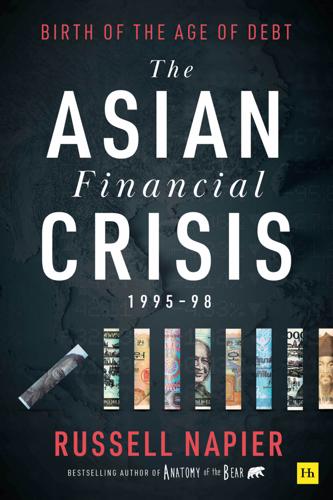
The Asian Financial Crisis 1995–98: Birth of the Age of Debt
by
Russell Napier
Published 19 Jul 2021
The jockey’s name was Mick Kinane. Sir Cliff, the King and Singapore 7 August 1997, Singapore It is often said that Singapore is boring and that there is a general lack of lateral thinking. The very success of the economy and its constant ability to reinvent itself is sufficient testimony that such assumptions are incorrect. On a recent visit to Singapore I picked up another piece of evidence which attests to that long history of lateral thinking. In November 1961, Cliff Richard (now Sir Cliff) and The Shadows played their first concert in Singapore. This was soon followed by Cliff’s cinematic masterpiece, The Young Ones.
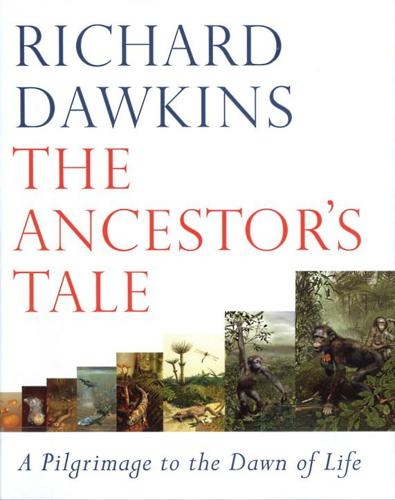
The Ancestor's Tale: A Pilgrimage to the Dawn of Evolution
by
Richard Dawkins
Published 1 Jan 2004
They assumed, in spite of the plausibility of the Asian apes themselves, that our ancestral line must lie in Africa right through the Miocene and concluded that, for some reason, our African ancestors had not fossilised after the early burgeoning of proconsulid apes in the early Miocene. That's where things stood until 1998, when an ingenious piece of lateral thinking appeared in a paper called 'Primate evolution -- in and out of Africa' by Caro-Beth Stewart and Todd R. Disotell. This tale, of back and forth traffic between Africa and Asia, will be told by the orang utan. Its conclusion will be that Concestor 3 probably lived in Asia after all. But never mind, for the moment, where it lived.
…
As an aside, this suggestion of Darwin illustrates an important general point about evolution. The bear seen by Hearne was evidently an enterprising individual, feeding in an unusual way for its species. I suspect that major new departures in evolution often start in just such a way, with a piece of lateral thinking by an individual who discovers a new and useful trick, and learns to perfect it. If the habit is then imitated by others, including perhaps the individual's own children, there will be a new selection pressure set up. Natural selection will favour genetic predispositions to be good at learning the new trick, and much will follow.
…
The wheel may be one of those cases where the engineering solution can be seen in plain view, yet be unattainable in evolution because it lies on the other side of a deep valley: unevolvable by large animals but within the reach of bacteria because of their small size. In an imaginative piece of lateral thinking, Philip Pullman, in his epic of childhood fiction His Dark Materials, solves the problem for big animals in a completely unexpected but very biological way. He invents a species of benevolent, trunked animal, the mulefa, who have evolved symbiotically with a species of gigantic tree that sheds hard, circular, wheel-like seed pods.

The Start-Up of You: Adapt to the Future, Invest in Yourself, and Transform Your Career
by
Reid Hoffman
and
Ben Casnocha
Published 14 Feb 2012
If you were to share a cab ride with a person of unusual wealth, it’s natural to think about trying to convince her to donate or invest in one of your causes. We’re not suggesting you be so saintly that a self-interested thought never crosses your mind. What we’re saying is you should let go of those easy thoughts and think about how you can help first. (And only later think about what help you can ask for in return.) A study on negotiation found that a key difference between skilled negotiators and average negotiators was the time spent searching for shared interests, asking questions of the other person, and forging common ground. The effective negotiators spent more time doing these things—thinking about ways the other person would truly benefit as opposed to just trying to drive a hard bargain out of pure self-interest.7 Do the same.
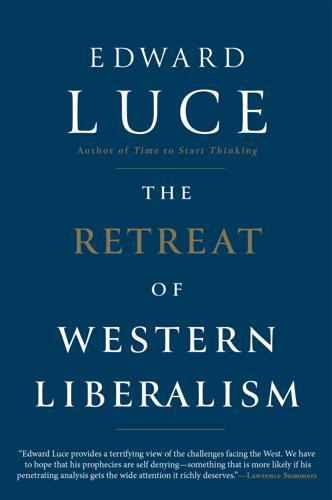
The Retreat of Western Liberalism
by
Edward Luce
Published 20 Apr 2017
America’s per-capita rate of triadic patent applications – those that are filed in the US, Europe and Japan, which screens out the frivolous ones – has fallen by a quarter since 2000.25 The fastest-growing units in the big Western companies are the legal and public relations departments. Big companies devote the bulk of their earnings to buying back shares and boosting dividend payments. They no longer invest anything like what they used to in research and development. The future loses out. Tyler Cowen, who is perhaps the most lateral-thinking economist I know, talks of the rise of America’s ‘complacent classes’ – the creep of a risk-averse and conformist mindset. In a supposed age of hyper-individualism, eccentricity is penalised. Software screens out job applicants before they have a chance to show their faces. Matchmaking algorithms do the same for our love lives.

The BetterPhoto Guide to Digital Photography
by
Jim Miotke
Published 9 Feb 2011
Additionally, if you shoot in the raw file format, you can choose white balance after the fact, when you are processing your images on the computer. This gives you even more flexibility when it comes to dealing with color casts. In fact, most photographers who shoot raw don’t even think about white balance while shooting, because they know they can adjust it later. THINK OF WHITE BALANCE AS A FILTER If you’re an ex-film photographer, you might find it easier to think of white balance in the same way you’d think of filters. When shooting an indoor scene lit by tungsten light, slide-film photographers must use special film or special corrective filters. If not, the images will come back from the photo lab with a color cast.

The Power of Now: A Guide to Spiritual Enlightenment
by
Eckhart Tolle
Published 1 Jan 1997
Without it, we would just be another species of animal. The predominance of mind is no more than a stage in the evolution of consciousness. We need to go on to the next stage now as a matter of urgency; otherwise, we will be destroyed by the mind, which has grown into a monster. I will talk about this in more detail later. Thinking and consciousness are not synonymous. Thinking is only a small aspect of consciousness. Thought cannot exist without consciousness, but consciousness does not need thought. Enlightenment means rising above thought, not falling back to a level below thought, the level of an animal or a plant.
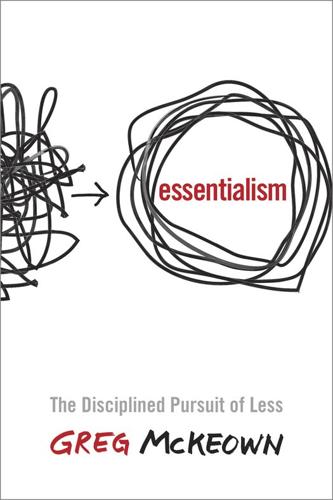
Essentialism: The Disciplined Pursuit of Less
by
Greg McKeown
Published 14 Apr 2014
Czeisler, “Sleep Deficit: The Performance Killer,” interview by Bronwyn Fryer, Harvard Business Review, October 2006, http://hbr.org/2006/10/sleep-deficit-the-performance-killer. 3. Ullrich Wagner et al., “Sleep Inspires Insight,” Nature 427 (January 22, 2004): 352–55. An additional study further supports the idea: Michael Hopkin, “Sleep Boosts Lateral Thinking,” Nature online, January 22, 2004, www.nature.com/news/2004/040122/full/news040119-10.html. 4. Nancy Ann Jeffrey, “Sleep Is the New Status Symbol For Successful Entrepreneurs,” Wall Street Journal, April 2, 1999, http://online.wsj.com/article/SB923008887262090895.html. 5. Erin Callan, “Is There Life After Work?

Calypso
by
David Sedaris
Published 28 May 2018
When you’re in the state that my sister was in, and that most people are in when they take their own lives, you’re not thinking of anything beyond your own pain. Thus the plastic bag—the maximizer, as it were—the thing a person reaches for after their first attempt at an overdose fails and they wake up sick a day later thinking, I can’t even kill myself right. It’s hard to find a bag without writing on it—the name of a store, most often. LOWE’S, it might read. SAFEWAY. TRUE VALUE. Does a person go through a number of them before making a selection, or, as I suspect, will any bag do, regardless of the ironic statement it might make?
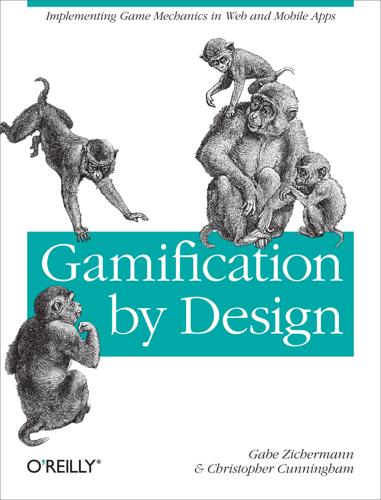
Gamification by Design: Implementing Game Mechanics in Web and Mobile Apps
by
Gabe Zichermann
and
Christopher Cunningham
Published 14 Aug 2011
When it comes to intrinsic versus extrinsic motivation in a gamified or motivational design context, there are three schools of thought: In Daniel H. Pink’s book Drive (Riverhead Trade), he attests that cash is a weak reward for getting players to complete complex tasks. The research he rounds up shows how an extrinsic motivator like cash doesn’t work when people are given lateral-thinking tasks. In other words, when cash is introduced as a motivator, people’s performance on creative or complex tasks drops. Thus, he contends that cash rewards are bad for incentivizing creative thought. While we agree that cash is not always motivational and in some cases is actually demotivational, other extrinsic rewards can be astoundingly motivational for players.
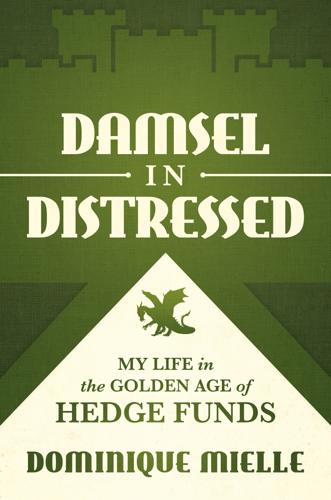
Damsel in Distressed: My Life in the Golden Age of Hedge Funds
by
Dominique Mielle
Published 6 Sep 2021
Although I have the patience of a mosquito, I could already see the arc bending toward one day being able to take ownership of my positions. The goal was not only to have an opinion on an idea that the partners had assigned to me, but to have an idea they had not thought of themselves. These came about through some combination of lateral thinking about another investment, discussions with companies, lawyers, investors or sell-side analysts, business articles, political events, industry conferences, you name it. I wanted it badly. My mind was constantly on alert for the next trade, the big one I would sell to the partners so they would bet on me.
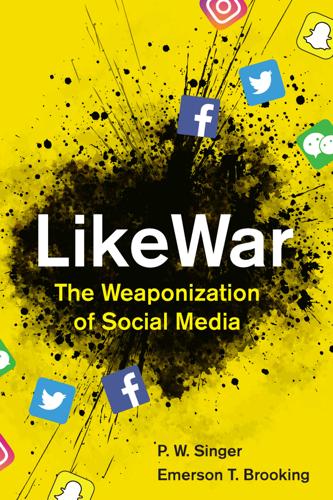
Likewar: The Weaponization of Social Media
by
Peter Warren Singer
and
Emerson T. Brooking
Published 15 Mar 2018
That would be great, of course, but it is unlikely to happen and still wouldn’t solve most problems. Instead, if we want to stop being manipulated, we must change how we navigate the new media environment. In our daily lives, all of us must recognize that the intent of most online content is to subtly influence and manipulate. In response, we should practice a technique called “lateral thinking.” In a study of information consumption patterns, Stanford University researchers gauged three groups—college undergraduates, history PhDs, and professional fact-checkers—on how they evaluated the accuracy of online information. Surprisingly, both the undergraduates and the PhDs scored low. While certainly intelligent, they approached the information “vertically.”
…
See ISIS isolation, 170 Israel, 193–200, 237 Israeli Defense Forces (IDF), 185, 193–200 J Jackson, Janet, 218–19 Jackson, Michael, 1–2 Jenkins, Brian, 150 Jewish Internet Defense Force, 198 Jihad, Janna, 197–98 Jihadi Design, 151 Jingwang (web-cleansing) app, 101 Jobs, Steve, 47 “Johnny Appleseed,” 83–84 Johnson, Lyndon B., 34, 209 Joint Readiness Training Center, 259–60 Joint Special Operations Command (JSOC), 79–80 Jones, Alex, 128 journalists, 91–92 censorship of, 90, 91, 92 discrediting of, 15, 114 disintermediation, 54–55 murder of, 69–70 photographs, 62–63 Russia and, 105–6 social media and, 135 vs. spies, 75 Twitter, 49 validation vs. information, 134 junk news, 131 See also fake news K Kardashians, 155 Karim, Jawed, 218 Kashmir, 171, 242 Kennedy, John F., 33 Kennedy, Ted, 142 Kerry, John, 142 keyword filtering, 97, 253 KGB, 103, 104, 107 Khan, Robert, 35 Kübler-Ross, Elisabeth, five stages of grief, 240 Kushner, Jared, 176 L La Muete, 169 Lamloum, Imed, 201 Lana (news agency), 201 lateral thinking, 271 leaders, 218–57 accidental nature of, 219–23 censorship, 233–44 content moderation, 244–48 neural networks, 248–55 regulation and, 223–32 Leigh, Robert D., 33 Lewis, Michael, 77 Lewis-Kraus, Gideon, 249 Licklider, J.C.R., 25–27, 35, 169, 182 “like” symbol, military operations, 10–11 likes, 139 LikeWar, 22, 193, 217 evolution from netwar, 186 hidden, 202 and memes, 189 organization for, 196 public-facing, 201 rules of, 21–22, 261 techniques, 154 Linehan, Adam, 66 LinkedIn, 45–46, 114 LiveJournal, 44 lone wolves, 9, 153, 170, 189, 198, 237 Lookalike Audiences, 177 Lords of War (arms dealers), 76–77 Lotan, Gilad, 199 Louisiana Maneuvers, 259–60 Luther, Martin, 28 Lyrebird, 253 Lysiak, Hilde Kate, 68 M “Macaca” moment, 55–57 Macedonia, 118–21, 240 machine-driven communication tools (MADCOMs), 252, 255–56 Madden, Kevin, 173–74 Maduro, Nicolas, 115 MAGA3X, 192 Maginot Line, 7 Magra Salvatrucha (MS-13), 14, 136 Manjoo, Farhad, 49 Mao Zedong, 100 Marconi, Guglielmo, 31–32, 50 “Marketing Pornography on the Information Superhighway: A Survey of 917,410 Images, Descriptions, Short Stories, and Animations Downloaded 8.5 Million Times by Consumers in over 2000 Cities in Forty Countries, Provinces, and Territories” (Rimm), 223–24 Marshall Plan, 157–58 mass line, 100–101 massively multiplayer online role-playing games (MMORPGs), 44 masters.

The Breakup Monologues: The Unexpected Joy of Heartbreak
by
Rosie Wilby
Published 26 May 2021
Unimpressed by the few remaining sad fir cones and prim doilies left over by the other teams, Paul says, ‘I’ll give them a table decoration.’ He strips naked and poses for a photo Adonis-like on the elegant long table with only a strategically placed silver tankard for decency. He’s hardly the most lithe male specimen, bless him. Girlfriend has never seen me laugh so hard. Our team get bonus points for lateral thinking but miss out on the overall score by a fine margin to…Dale’s team. Damn.5 A decade on from the rejection I felt at never being introduced to Secretive Ex-Girlfriend’s parents, this inclusion in the joyful camaraderie of Girlfriend’s extended family is all the sweeter. As we watch one of Dale’s two huge strapping teenage sons from his first marriage bend down to pick up the tiny daughter from his third, it makes sense to me why, even in the face of divorce, people would want to make a huge effort to keep all their loved ones together in some way.
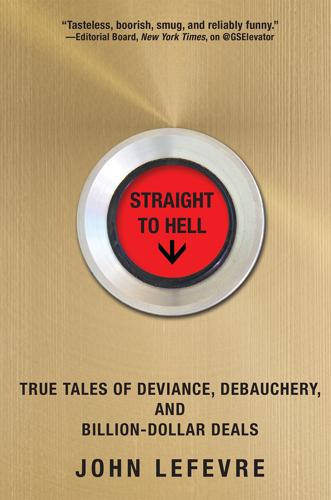
Straight to Hell: True Tales of Deviance, Debauchery, and Billion-Dollar Deals
by
John Lefevre
Published 4 Nov 2014
We could revise the price guidance higher to reflect the deterioration in market conditions and diminished risk appetite, but there is no chance the client will agree to that. A $50 million order from the Duke is a welcome respite. But deep down, I know his order doesn’t mean shit. The Duke’s modus operandi is to jump into deals he thinks are going to be hot and then flip them back to some other trading desk a couple of days later, thinking we won’t find out about it. He doesn’t understand credit and is a classic example of the axiom “Don’t confuse brains with a bull market.” He usually comes into deals early with a grossly inflated order. Then, if he doesn’t get a good allocation, he throws a temper tantrum. “Hey, doo, I came in early to support the deal.

We Are Bellingcat: Global Crime, Online Sleuths, and the Bold Future of News
by
Eliot Higgins
Published 2 Mar 2021
As they progressed, the Investigation Team’s techniques sharpened. Social-media searching is a subfield of online investigation. Among the best is Henk van Ess, a Dutch trainer who is constantly finding ways to dredge up valuable clues from Facebook, Twitter and beyond. Most of his tips are technical, but several employ lateral thinking. For instance, if seeking tweets from eyewitnesses to a disaster, one should not just search the relevant hashtags – in a crisis, people are too shocked to worry about tagging posts. Instead, you think up pertinent keywords that someone might type in haste. Another insight of Henk’s is that users of Facebook who click ‘love’ on a post rather than simply ‘like’ tend to have open personalities: they probably have not locked down their privacy settings.

Radical Cities: Across Latin America in Search of a New Architecture
by
Justin McGuirk
Published 15 Feb 2014
Yet there is no shortage of idealism: it is simply not dogmatic. I prefer to think of them not as pragmatic idealists (compromisers) but as idealistic pragmatists. Pragmatism, as a means to idealistic ends, requires more imagination. It means that, where necessary, methods must adapt themselves to the prevailing conditions, that flexibility and lateral thinking are prerequisites, that there is no orthodox answer. Modernism had a proud tradition of revolt, of categorical rejection of the past. The activists are not so contrary. They may even be a little nostalgic for the utopian efforts of the modernists, but they would never advocate such authoritarian visions as a suitable way forward.

What Doctors Feel: How Emotions Affect the Practice of Medicine
by
Danielle Ofri
Published 3 Jun 2013
A few days wouldn’t make a difference. So I said, ‘Congratulations—enjoy your beautiful baby girl.’” Eva watched the parents snuggle their baby, gazing into her eyes with the pure, unadulterated adoration a newborn evokes. It was a pristine moment, and it only comes around once. There would be time for other emotions later. Thinking again of the baby dying in the closet, Eva felt at peace with her decision to withhold her suspicions for the moment. A week later, Eva called the pediatrician to see how things had worked out. It turned out that chromosomal testing did confirm Down syndrome. Eva felt her heart catch. Life would certainly be difficult for the child and her parents.
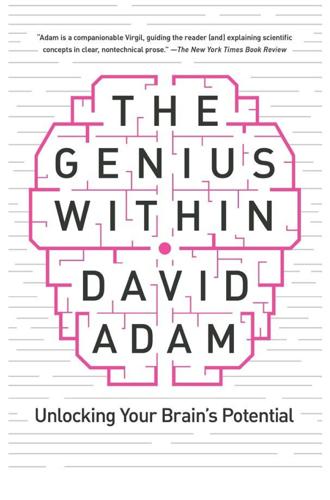
The Genius Within: Unlocking Your Brain's Potential
by
David Adam
Published 6 Feb 2018
In 2012, Snyder turned to electrical stimulation, and this time he used the different electrodes to both inhibit the left side and activate the right side of the volunteer brains. He reported a similar improvement – this time in the ability of people to solve a classic puzzle that requires a bit of lateral thinking. It’s called the nine dot problem, and it asks simply that you connect all nine dots using just four straight lines, without lifting your pen up or retracing a line. Try it: (SPOILER ALERT. The solution is at the top of the next page.) The only way to solve the puzzle is to extend the lines beyond the boundary of the square.
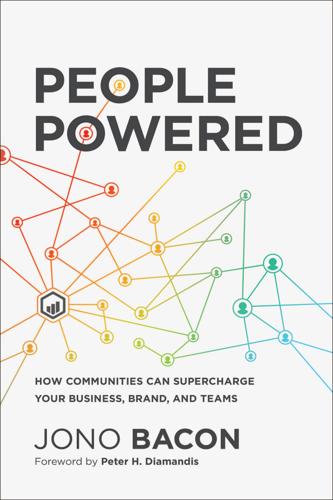
People Powered: How Communities Can Supercharge Your Business, Brand, and Teams
by
Jono Bacon
Published 12 Nov 2019
Rewards. Now list rewards that would be interesting. For example, Content Creators who write articles love to see their work printed and framed, and Support people love to see their guidance featured on blog posts and articles. Most personas love T-shirts, mugs, and other swag. As we will discuss later, think carefully here about the logistics of shipping rewards. For example, T-shirts can be a pain as you need to have different cuts and sizes in stock. Where They Live. Now, let’s not get creepy here, I don’t mean their physical address, but where do they spend their time? What websites do they visit?
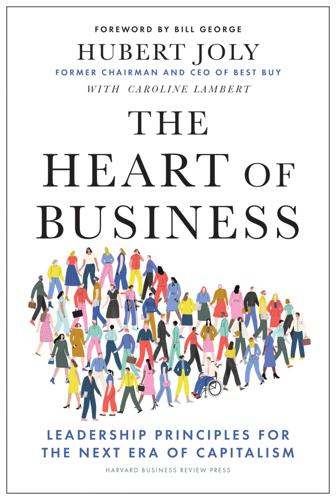
The Heart of Business: Leadership Principles for the Next Era of Capitalism
by
Hubert Joly
Published 14 Jun 2021
Financial incentives are outdated as they were designed for a different type of work Frederick Taylor based his approach of scientific management on the premise that, as work was a tedious and unenjoyable means to an end (see chapter 2), the only way to motivate an otherwise unmotivated workforce was money. Indeed, the narrowing of focus that incentives bring about, though terrible for innovation and lateral thinking, helps speed up simple tasks. Taylor’s perspective greatly shaped remuneration and broader management practices for much of the twentieth century. Long-term strategic planning, developed in the 1960s and 1970s, is rooted in a similar view of the world: that workers need carrots and sticks to execute a strategy designed by smart executives with the help of expert staffers, and then translated into a plan, cascading goals, aligned financial incentives, and a system of control and compliance that measures how well people perform against these goals.
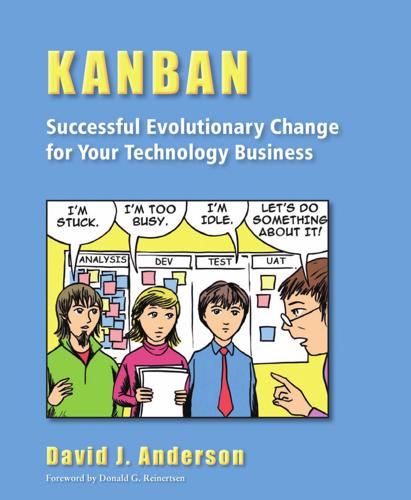
Kanban: Successful Evolutionary Change for Your Technology Business
by
David J. Anderson
Published 6 Apr 2010
Larger requests, those exceeding 15 days of development or testing, had to be submitted to a major project initiative and go through the formal program management office (PMO) portfolio management governance process. We will revisit these issues shortly. Limit Work-in-Progress Note: This is a policy choice. One change request per developer at any given time is a policy. It can be modified later. Thinking of a process as a set of policies is a key element of the Kanban Method. The other change Dragos decided to make was to limit work-in-progress and pull work from an input queue as current work was completed. He chose to limit WIP in development to one request per developer and to use a similar rule for testers.

Your Life in My Hands: A Junior Doctor's Story
by
Rachel Clarke
Published 14 Sep 2017
A patient and her family who were desperately fearful, needing all the support and sensitivity that we could muster. The expertise of three different specialist teams, all brought to bear on the case, plus state-of-the-art imaging and blood work. A diagnostic process not driven blindly, according to protocol, but using clinical acumen, lateral thinking and teamwork. A result – a diagnosis – derived as quickly as any gleaming private institution could offer, despite the dilapidation and quaint mid-century shabbiness of the ward. Too often in these straitened times, the NHS falls short of excellence, but when the system works well, as on this occasion, it can still be second to none.
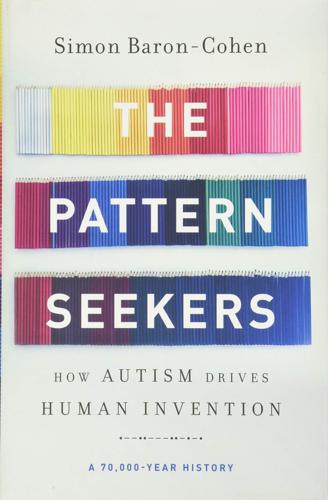
The Pattern Seekers: How Autism Drives Human Invention
by
Simon Baron-Cohen
Published 14 Aug 2020
10 HP Enterprise’s neurodiverse teams are 30 percent more productive in software testing and debugging than teams of “neurotypical” employees.11 Key to the success of these programs is the training and support given to autistic employees to ensure that they can manage the social aspects of the workplace—enough support that employees, such as SAP’s Carrie Hall, feel confident to proudly identify themselves as autistic to their colleagues.12 The idea that autistic people think in a refreshingly different way as a result of their if-and-then pattern-seeking was beautifully borne out in a study of creativity and lateral thinking that used a classic test: “How many uses can you think of for a brick and a paper clip?”13 Most people give predictable “simple” answers, such as using a paper clip to reset their iPhone. In contrast, most autistic people gave unexpected, less predictable, more “complex” answers, such as using a paper clip as a weight for the front of a paper airplane or heating up a paper clip to suture a wound.

The Idea of Decline in Western History
by
Arthur Herman
Published 8 Jan 1997
Spengler developed an admiration for the Norwegian dramatist Henrik Ibsen, whose plays (A Doll’s House, Ghosts, and Pillars of the Community) both shocked and fascinated the bourgeois audiences they vilified. Richard Wagner was another hero along with Ernst Haeckel, whose vision of man’s history as part of an organic totality deeply influenced Spengler’s later thinking.10 The other role model was Friedrich Nietzsche. Spengler devoured Nietzsche’s works as a high school student and found in them what the young novelist Thomas Mann had also found, a sense of “self-transcendence.” The student Spengler also absorbed the philosopher’s pessimism. In 1901, the year Spengler completed his degree at the University of Halle, a collection of Nietzsche’s notebooks appeared as The Will to Power.
…
Life in that world is “absurd” (the term Sartre would make famous) because modern man has made it so. His reason has destroyed God and all intrinsic purpose just as Nietzsche, another of Sartre’s heroes, had warned. Man’s encounter with that empty absurdity produces a sense of “nausea,” the title of Sartre’s 1938 novel that laid the foundations for his later thinking. Sartre’s nausea is reminiscent of Heidegger’s “giddy whirl” and, of course, Nietzsche’s Zarathustra: “This nausea suffocates me…. We have tried to get away from the rabble … the shopkeeper’s stench … Nausea! Nausea! Nausea!” However, it also contained an echo of Gautier and the French Romantics, with their fear of the ennui produced by modern life.
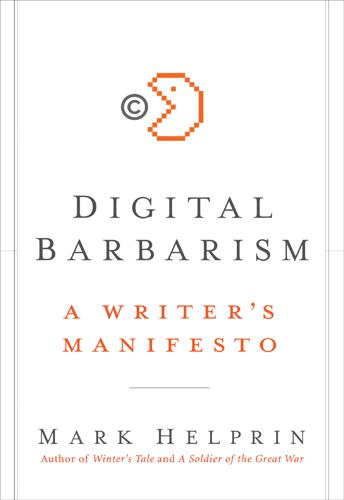
Digital Barbarism: A Writer's Manifesto
by
Mark Helprin
Published 19 Apr 2009
“If you were, then you might have to steal someone’s corn, but at least you’d know that you had no choice—having asked for some in the first place, having tried to plant your own, having looked for work, having suffered until you were pushed. None of these things applies to you.” “I’ll pay you,” I said, in one of my lowest moments. By now, I was ashamed. “No you won’t. It doesn’t work that way. When a thief is caught it doesn’t change things if he offers to pay. ‘Sorry I robbed your bank. Here’s the money. See you later.’ Think of what the world would be like if that were true.” “You want me to throw it back?” I asked sheepishly, holding up the ear of corn as if it were a fish. “And then get out of here.” “Do you own the side of the road?” I asked, voice cracking in defeat. “Yes, I do.” The rest of the day, bicycling toward Nebraska and a night camping on grasslands beneath a sky miraculously heavy with stars, I thought of rejoinders.
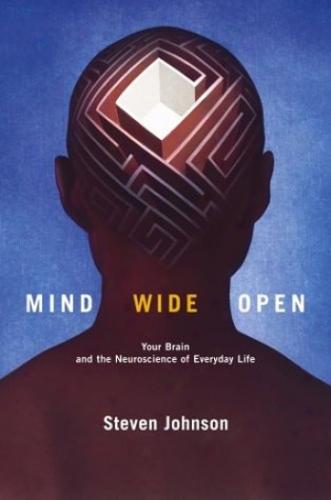
Mind Wide Open: Your Brain and the Neuroscience of Everyday Life
by
Steven Johnson
Published 2 Jan 1999
The long-range neural wiring might explain why that hemisphere is inclined to come up with broad, many-faceted, but rather vague concepts. It might also help the right brain to integrate sensory and emotional stimuli (as is required to apprehend art) and to make the sort of unlikely connections that provide the basis of much humour. ‘Lateral thinking’ would be helped, too, by the neural arrangement in the right brain-the sideways extension of axons even makes the phrase literal rather than figurative. The left brain, by contrast, is more densely woven. The close-packed, tightly connected neurons are better equipped to do intense, detailed work that depends on close and quick cooperation between similarly dedicated brain cells.”
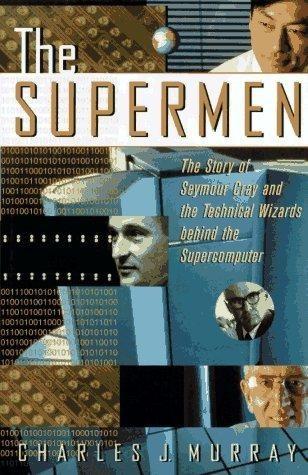
The Supermen: The Story of Seymour Cray and the Technical Wizards Behind the Supercomputer
by
Charles J. Murray
Published 18 Jan 1997
Chen's new company, which seemed to be forever on the brink of introducing the world's fastest computer, had watched investors suddenly scatter when it had run out of funding. The engineers at Chen's firm had been confident-absolutely con- vinced-that nothing in the world could touch the performance of their pending machine. One year later, Thinking Machines and Kendall Square Re- search, firms that had pioneered the use of microprocessors in supercomputing, suddenly found themselves out in the cold. DARPA, the government agency that had provided them seed money, had changed its name and veered away from its commit- ment to massive parallelism.

Happy Valley: The Story of the English in Kenya
by
Nicholas Best
Published 9 Aug 2013
This was unfair to the Nigerians, but it was true that their eating habits were not entirely normal. One company, ravenous with hunger, fell upon a road bridge tied together with strips of rawhide and ate the lot, whereupon the wooden spars collapsed into the river below and floated away. This news would undoubtedly have interested General Dealy, the campaign’s chief engineer officer. A lateral-thinking man, he liked nothing better than to turn a problem on its head and look at it from a fresh angle. Having built himself a lovely trestle bridge, he lacked only a river to fit it. Some were too wide, others too narrow. The bridge accompanied him all round East Africa, blocking roads, getting stuck in the mud, losing its way in the bush and visiting each river in turn, hoping to find a suitable home.
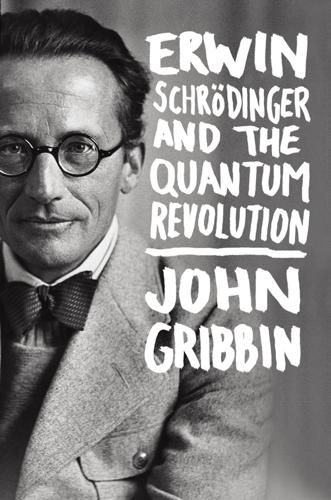
Erwin Schrodinger and the Quantum Revolution
by
John Gribbin
Published 1 Mar 2012
In the midst of all this turmoil, he found consolation in philosophy, flinging himself into a study of Wittgenstein, Schopenhauer, and through Schopenhauer Eastern, and in particular Indian, philosophy. He was particularly fascinated by the Vedanta, a school of Hindu philosophy which teaches that there is only one reality. These philosophical ideas would strongly influence Schrödinger’s later thinking about quantum physics. The situation in Vienna began to improve after Herbert Hoover, then head of the American Relief Administration and later to become US President, visited the city in January 1919. Alarmed by the prospect of a Communist revolution being triggered by the appalling conditions, he arranged for the first American aid to be sent to Vienna, and the blockade of Austria was lifted at last on 22 March—although it continued to be applied to Germany, where the kind of revolution Hoover feared very nearly did happen.
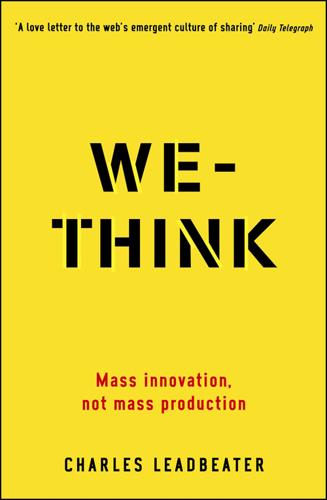
We-Think: Mass Innovation, Not Mass Production
by
Charles Leadbeater
Published 9 Dec 2010
WikiHistory counter.li.org/ english.ohmynews.com/ www.fark.com www.ige.com www.plastic.com portal.eatonweb.com www.slashdot.org www.technorati.com/about www.worldofwarcraft.com INDEX 42 Entertainment 10, 11 A ABC 173 academia, academics 6, 27, 48, 59 Acquisti, Alessandro 210 Adam, James 95 adaptation 109, 110, 121 advertising 104, 105, 129, 173, 180, 219 Aegwynn US Alliance server 99 Afghanistan 237 Africa broadband connections 189 mobile phones 185, 207 science 196 use of Wikipedia 18 Aids 193, 206, 237 al-Qaeda 237 Alka-Seltzer 105 Allen, Paul 46 Altair BASIC 46 Amadeu, Sérgio 202 amateurism 105 Amazon 86 America Speaks 184 American Chemical Society 159 anarchy cultural 5 Wikipedia 16 Anderson, Chris: The Long Tail 216 Apache program 68 Apple 42, 103, 104, 135, 182 iPhone 134 iPods 46 Arendt, Hannah 174, 176 Argentina 203 Arrayo, Gloria 186 Arseblog 29, 30 Arsenal Football Club 29, 30 Arsenal.com 29 arXiv 160 Asia access to the web 5, 190 attitude to open-source 203 and democracy 189 mobile phones 166, 185 and open-source design communities 166–7 Ask a Ninja 57, 219 assembly line 93, 130 assets 224 astronomy 155, 162–3 authority 110, 115, 233 authorship and folk culture 57, 58 and mapping of the human genome 62 Azerbaijan 190 B bacteria, custom-made 164 Baker, Steve 148 Banco do Brazil 201 Bangladesh 205–6 banking 115, 205–6 Barber, Benjamin: Strong Democracy 174 Barbie, Klaus 17 Barbie dolls 17 Barefoot College 205 barefoot thinking 205–6 Barthes, Roland 45 Batchelor, Charles 95 Bath University 137 BBC 4, 17, 127, 142 news website 15 beach, public 49, 50, 51 Beach, The (think-tank) xi Bebo 34, 85, 86 Bedell, Geraldine x, xii–xiii Beekeepers 11, 15 Benkler, Yochai 174 The Wealth of Networks 194 Berger, Jorn 33 Bermuda principles 160 Billimoria, Jeroo 206 BioBrick Foundation 164 biology 163 open-source 165 synthetic 164–5 BioMedCentral 159 biotechnology 154, 163–4, 196–7, 199 black fever (visceral leishmaniasis) 200 Blackburn Rovers Football Club 29 Blades, Joan 188 Blizzard Entertainment 100 Bloc 8406 191 Blogger.com 33 blogs, blogging 1, 3, 20, 29–35, 57, 59, 74, 75, 78, 86, 115, 159, 170, 171, 176, 179, 181–2, 183, 191, 192, 214, 219, 229 BMW 140 Bohr, Neils 93 bookshops 2 Boulton, Matthew 54–5 Bowyer, Adrian 139, 140, 232 Boyd, Danah 213, 214 Bradley, Bill 180 Brand, Stewart 39–40, 43, 63 brands 104, 109 Brazil 201–2 Brenner, Sydney 62–5, 70, 77, 118, 231 Brief History of Time, A (Hawking) 163 Brindley, Lynne 141, 142, 144–5 British Library, London 141, 142, 144, 145 British Medical Journal 159 British National Party 169 Brooks, Fred 77–8 Brooks Hall, San Francisco 38 BT 112 bugs, software 70, 72, 165 bulletin boards 34, 40, 68, 77 Burma 190, 191 Bush, President George W. 18, 33–4, 180, 183 business services 130, 132, 166 C C. elegans (Caenorhabditis elegans) 62–5 Cambia 197 Cambridge University Press 159 camcorders 11 Campbell, Anne 176 Cancer Genome Atlas 160 capital 224 capitalism 224 commune 121, 125 managerial 24 modern 91, 121 social dimension of 90 Carlson, Rob 164 Carnegie Mellon University 210 cars manufacture 135–6 sharing 153 CBS 173 Center for Bits and Atoms, MIT 139 CERN (European Organization for Nuclear Research) 30–31, 159 Chan, Timothy 106, 107 chat rooms 165 Chavez, President Hugo 203 Cheney, Dick 180 Chevrolet 105 Chicago: Full Circle council project 184 China based on privileged access to information 236 creative and cultural sectors 129–30 hackers 234 Internet connection 190, 204 makes available genetic data 199 motor-cycle production 136–7 online games market 106 open-access scientific data 159–60 open-source designs 141 politics 171, 192 power struggle in 235 spending on R & D 96, 159 web censorship 190–91 Chinese Communist Party 171, 235 Chongquing, China 136 Cisco 190 Citibank 207 Citizendium 14 climate change 170, 239 Clinton, Bill 174, 188 Clinton, Senator Hillary 181, 182, 183 CNN 15 co-operatives 121, 122, 123, 188 co-ordination 109, 110–11 coffee houses, London 95 Coke 109–10, 239 Cold War 169, 235 Coles, Polly xiii collaboration 9, 22, 31, 32, 36, 67, 79–80, 81, 82 collaborative innovation 65, 70, 75 and commerce 227 computer game 99, 100 Cornish tin-mining 55 and healthcare 150 and the library of the future 145 new technologies for 227–8 open 126, 128 peer 239 public services 145, 146, 152, 153 scientific 154, 155–6 We-Think 21, 23, 24, 146 Collis, Charles 134 Columbia University 212 commerce 25, 38, 48, 52, 57, 98, 227 commons 49, 50, 51–3, 79, 80, 124, 191, 226 communes 39–40, 46, 90, 121, 122, 128 communication(s) 130, 168, 174, 206, 239 mobile 186 Communism, collapse of 6 communities collaborative 117 and commerce 48 and commons 52 conversational 63 Cornish tin-mining 55 creative 70, 95 diverse 79–80 egalitarian 27, 48, 59, 63, 64 hacker 232 healthcare 151, 152 independence of 23 of innovation 54 libertarian, voluntaristic 45 Linux 65, 227 and loss of market for local newspapers 3 meritocratic 63 open-source 45, 68, 75, 80, 83, 95–6, 102, 109, 110, 111 open-source design 166–7 of scientists 53, 228 self-governing 59, 79, 80, 97, 104, 232 sharing and developing ideas 25 web 21, 23 worm-genome researchers 62–5 community councils 77, 80, 82 Community Memory project 42–3 companies computer-games 128 employee-owned 121, 122 shareholder-owned 122, 123, 125 see also corporations; organisations computer games 60, 127, 218 children and 147 created by groups on the web 7, 23, 87 modularity 78 multi-player 7, 204 success of World of Warcraft 98–9 tools for creating content 74 and We-Think 23 computer-aided design 134 computers democratising how information is accessed 139 distrust of 39 Goa School Computers Project 200–201 laptop 5, 36, 82, 155 mini- 135 personal 39, 46, 203 punch-cards 38 and science 154, 155 viruses 3, 4 connect 67, 75–9 Connectiva 201 consumer spending 131 consumers 98–108 consumer innovators 101–3 consumption constraints 25–6 engaging 89 fans 103–4 freedom 218 and innovation risk 100–101 participant 98–108 urban 124 contribute 67, 70, 71, 72, 73, 74–5 conversation 53, 54, 63, 69, 77, 93, 95, 113, 118, 174 Copernicus, Nicolaus 162 copyright 124, 157, 196 core 66, 67, 68–9, 70 Cornell University 233 ‘Cornish’ engines 55–6, 136, 229 Cornish tin-mining industry 54–6, 63, 125, 136 corporations centralisation of power 110 closed 128 and collaborative approaches to work 109 the cost of corporate efficiency 89–90 difficulty in making money from the web 7 hierarchies 88, 110 industrial-era 88 leadership 115, 117–19 loss of stability 122 restructuring and downsizing 88–9 see also companies; organisations counter-culture (1960s) 6, 27, 39, 45, 46, 59 Counts, David 183 Craigslist 3, 40, 118, 128, 218 Creative Commons 124 creative sector 129–30 creativity 1–2, 3, 5, 6, 9, 67, 82–3 collaborative 7, 20, 58, 86, 154 collective 39, 57–8 consumers 89 corporate 91–2 emergence of 93, 96 enabled by the web 1–2, 3, 5, 19, 26, 218–21, 222, 227 freedom to create 218–21 and interaction 119 and open innovation 93 origin of 112–13 social 5, 7, 58, 59, 82, 83, 86 tools for 218, 219 Crick, Francis 52, 62, 76 crime 153, 169, 183 criminality 1, 3 crowds 23, 61, 70, 72, 77 Crowdspirit 134 cultural élite 2 cultural sector 129–30 culture academic 38 anti-industrial 27, 28 basis of 4 collaborative 135 consumerist 172 corrosion of 4 cultural anarchy 5 folk 6, 27, 56–9, 220, 226 hippie 38 individual participation 6 political 171 popular 102 post-industrial 27, 28 pre-industrial 27, 28 We-Think 28, 59, 62, 169, 194, 230, 232–3, 238 Web 2.0 45 web-inflected 27 Western 239 wiki 14 work 114 YouTube cultural revolution 3 Cunningham, Ward 35–6 cyber cafés 107, 190, 192, 201, 204 Cyworld 34, 85, 86 D Dali, Salvador 105 Darby, Newman 102 Darpa 164 David, Paul 53 de Soto, Hernando 224–5 The Mystery of Capital 224 de Vellis, Phil 182 Dean, Howard 176–7, 178, 180, 185 Dean Corps 177 Debian 66 Debord, Guy 45, 46 decentralisation 7, 13, 39, 46, 59, 78, 226, 232 decision-making 78, 82, 84, 115, 173, 174 del.i.cious 86 democracy 1, 3, 5, 6, 7, 16, 24, 170–74, 175, 176–92 basis of 174 conversational democracy at a national level 184 ‘craftsmen of democracy’ 174 Dean campaign 178 democratic advances 184 depends on public sovereignty 172 formal 195 geek 65 Homebrew 176 public debate 170, 171 and We-Think 170, 221, 239 Department for International Development (DFID) 207 Descartes, René 19–20 design 166 modular 136–7 open-source 133–5, 140, 141, 162–3, 166–7 developing world Fab Labs in 166 government attitudes to the Internet 190 impact of the web on 166 mobile phones 185–6 and open-access publishing 166 and open-source design communities 166–7 and open-source software 200–203 research and development 196 and We-Think’s style of organisation 204 diabetes 150 Digg 33 discussion forums 77 diversity 9, 23, 72, 76, 77, 79–80, 112, 121 division of labour 111 DNA description of the double helix (Watson and Crick) 52, 62, 76 DNA-sequencing 164–5 Dobson, John 102, 162–3 Doritos 105 dot.com boom 106 Dupral 68 Dyson (household-goods company) 134 Dyson, Freeman 163, 164 E E-Lagda.com 186 Eaton, Brigitte 33 Eatonweb 33 eBay 40, 44, 102, 128, 152, 165, 216–18, 221, 229, 235 Ebola virus 165 Eccles, Nigel xi economies of scale 137 economy digital 124, 131, 216 gift 91, 226 global 192 global knowledge 239 of ideas 6 individual participation 6 industrial 122 market 91, 221 a mass innovation economy 7 networked 227 of things 6 UK 129, 130 and We-Think 129 Edison, Thomas 72, 93, 95 EditMe 36 education 130, 146–50, 167, 183, 194, 239 among the poorest people in the world 2, 193 civic 174 a more convivial system 44 Edwards, John 181 efficiency 109, 110 Einstein, Albert: theory of relativity 52 elderly, care of 170 Electronic Arts 105, 106, 128, 177 Electronic Frontier Foundation 40 electronics 93, 135 Eli Lilly (drugs company) 77 Ellis, Mark: The Coffee House: a social history 95 enclosures 124 Encyclopaedia Britannica, The 15–18, 126 encyclopaedias 1, 4, 7, 12–19, 21, 23, 36, 53, 60, 61, 79, 161, 231 Encyclopedia of Life (EOL) 161, 226 Endy, Drew 164, 165 energy 166, 232, 238 Engelbart, Doug 38–9, 59 engineering 133, 166 Environmental Protection Agency 152 epic poems 58, 60 equality 2, 24, 192–7, 198, 199–208 eScholarship repository, University of California 160 Estonia 184, 234 Estrada, President Joseph 186 ETA (Basque terrorist group) 187 European Union (EU) 130 Evans, Lilly x Evolt 68, 108 F Fab Labs 139, 166, 232 fabricators 139 Facebook 2, 34–5, 53, 142, 152, 191, 193, 210 factories 7, 8, 24 families, and education 147 Fanton, Jonathan 161 Fark 33 Feinstein, Diane 176 Felsenstein, Lee 42, 43, 44 fertilisers 123 Field Museum of Natural History, Harvard University 161 file-sharing 51, 58, 135, 144, 233 film 2, 3, 4, 47, 86, 129, 216, 218, 220–21 film industry 56 filters, collaborative 36, 86 financial services 130, 132 Financial Times 118 First International Computer (FIC), Inc. 136, 141 flash mobbing 10, 11 Flickr 34, 85, 86, 210, 218–19 Food and Drug Administration (US) 92 Ford, Henry 24, 93, 96 Fortune 500 company list 122 Frank, Ze (Hosea Jan Frank) 57, 219 freedom 1, 2, 6, 24, 208, 209, 210–21, 226 French, Gordon 41, 42 friendly societies 188 Friends Reunited 34 friendship 5, 233 combinatorial 95 Friendster 34, 35 fundamentalists 232 G Gaia Online 35 Galileo Galilei 154 gambling 169 GarageBand software 57, 135, 148 Gates, Bill 46, 47, 51, 227 Gates Foundation 160 geeks 27, 29–36, 37, 38, 48, 59, 65, 179 gene-sequencing machines, automated 64 genetic engineering 164, 196–7, 235 Georgia: ’colour revolution’ 187 Gershenfeld, Neil 139–40, 166, 232 GetFrank 108 Ghana, Fab Lab in 139 Gil, Gilberto 202 Gjertsen, Lasse 56, 218 Gland Pharma 200 global warming 238 globalisation 202, 228, 239 Gloriad 155 GM 135 Goa School Computers Project 200–201 Goffman, Erving 103–4 Goldcorp Inc. 132–3, 153 Golden Toad 40 GoLoco scheme 153 Google x, 1, 29, 32, 33, 47, 66, 97, 104, 113–14, 128, 141, 142, 144, 212 Google Earth 161 Gore, Al 64 governments in developing countries 190 difficulty in controlling the web 7 GPS systems 11 Grameen Bank 205–6, 208 ‘grey’ sciences 163 grid computing 155 Gross, Ralph 210 group-think 23, 210–11 groups 230–31 of clever people with the same outlook and skills 72 decision-making 78 diverse 72, 80, 231 and tools 76–7 Guthrie, Woody 58 H Habermas, Jurgen 174 hackers 48, 74, 104, 140, 232, 234 Hale, Victoria 199 Halo 2 science fiction computer game 8 Hamilton, Alexander 17–18 Hampton, Keith 183–4 Hanson, Matt xi health 130, 132, 146, 150–52, 167, 183, 239 Heisenberg, Werner 93 Henry, Thierry 29 Hewlett Packard 47 hierarchies 88, 110, 115 hippies 27, 48, 59, 61 HIV 193 Homebrew Computer Club 42, 46–7, 51, 227 Homebrew Mobile Phone Club 136 Homer Iliad 58 Odyssey 58 Homer-Dixon, Thomas: The Upside of Down 238–9 Hubble, Edwin 162 Human Genome Project 62, 64, 78, 155, 160, 161, 226 human rights 206 Hurricane Katrina 184 Hyde, Lewis: The Gift 226 hypertext 35, 39 I I Love Bees game 8, 10–12, 15–16, 19, 20, 69, 231 IBM 47, 66, 97 System/360 computer 77 idea-sharing 37, 94, 237, 239 as the biggest change the web will bring about 6 with colleagues 27 and consumer innovators 103 dual character of 226 gamers 106 Laboratory of Molecular Biology 63 through websites and bulletin boards 68 tools 222 We-Think-style approach to 97 and the web’s underlying culture 7 ideas combining 77 and creative thinking 87 from creative conversations 93, 95 gifts of 226 growth of 222, 239 and the new breed of leaders 117–18 ratifying 84 separating good from bad 84, 86 testing 74 the web’s growing domination 1 identity sense of 229 thieves 213–14 Illich, Ivan 43–5, 48 Deschooling Society 43, 44, 150 Disabling Professions 43 The Limits to Medicine 43, 152 Tools for Conviviality 44 independence 9, 72, 231 India Barefoot College 205 creative and cultural sectors 129–30 Fab Lab in 139 Internet connection 190, 204 mobile phones 207 and One World Health 200 spending on R & D 96 telephone service for street children 206 individuality 210, 211, 215, 216, 233 industrialisation 48, 150, 188 information barriers falling fast 2 computers democratise how it is accessed 139 effect of We-Think 129 large quantities on the web 31–2 libraries 141, 142, 143, 145 looking for 8 privileged access to 236 sharing 94, 136 the web’s growing domination 1 Wikipedia 19 Innocentive 77 innovation 5, 6, 91–3, 94, 95–8, 109 among the poorest people in the world 2 biological 194 collaborative 65, 70, 75, 90, 119, 146, 195 collective 170, 238 and competition/co-operation mix 137 Cornish mine engines 54–6 corporate 89, 109, 110 and creative conversations 93, 95 creative interaction with customers 113 cumulative 125, 238 decentralised 78 and distributed testing 74 and diverse thinking 79 and education 147 independent but interconnected 78 and interaction 119 and Linux 66 local 139 a mass innovation economy 7 medical 194 open 93, 96–7, 125, 195 in open-source communities 95–6 and patents 124 pipeline model 92, 93, 97 R & D 92, 96 risks of 100–101 social 170, 238 successful 69 user-driven 101 and We-Think 89, 93, 95, 125, 126 the web 2, 5, 7, 225 Institute for One World Health 199–200 Institute for Politics, Democracy & the Internet (IPDI) 179 Institute of Fiscal Studies 131 institutions convivial 44 industrial-era 234 and knowledge 103 and professionals 3, 5 public 142, 145 Instructables site 134 Intel 97 intellectual property 75, 122, 124, 125, 234 law 124–5 intelligence, collective bloggers 33 getting the mix right 23 Google’s search system 32 I Love Bees and Wikipedia examples 8, 10–19 milked by Google 47 the need to collaborate 32 self-organisation of 8 and social-networking sites 35 the web’s potential 3, 5 International Polar Year (IPY) 156, 226 Internet broadband connection 178, 189, 192 combined with personal computers (mid-1990s) 39 cyber cafés 107, 190, 192, 201, 204 Dean campaign 177 in developing countries 190 draws young people into politics 179, 180 an early demonstration (1968) 38 and Linux 66 news source 178–9 open-source software 68 openness 233 and political funding 180 pro-am astronomers 163 used by groups with a grievance 168 in Vietnam 189–90, 191 investment 119, 121, 133, 135 Iran 190, 191 Iraq war 18, 134, 191 Israel 18 Ito, Joi 99 J Japan politics 171 technology 171 JBoss 68 Jefferson, Richard 197, 199 Jodrell Bank Observatory, Macclesfield, Cheshire 162 JotSpot 36 journalism 3, 74, 115, 170–71 Junker, Margrethe 206 K Kampala, Uganda 206 Kazaa music file-sharing system 144 Keen, Andrew 208 The Cult of the Amateur 208 Kelly, Kevin 211 Kennedy, John F. 176 Kenya 207 Kepler, Johannes 162 Kerry, John 180 Khun, Thomas 69 knowledge access to 194, 196 agricultural 194 barriers falling fast 2 collaborative approach to 14, 69 encyclopaedia 79 expanding 94 gifts of 226 individual donation of 25 and institutions 103 and networking 193 and pro-ams 103 professional, authoritative sources of 222 sharing 27, 44, 63, 70, 199 spread by the web 2, 3 Wikipedia 16, 18, 19, 195 Korean War 203 Kotecki, James (’EmergencyCheese’) 182 Kraus, Joe 36 Kravitz, Ben 13 Kuresi, John 95 Kyrgyzstan: ’colour revolution’ 187 L Laboratory of Molecular Biology, Cambridge 62–3, 77 labour movement 188 language 52–3 Lanier, Jaron 16, 210–11, 213 laptop computers 5, 36, 82, 155 lateral thinking 113 leadership 89, 115, 116, 117–19 Lean, Joel 55 Lean’s Engine Reporter 55, 63, 77 Lee, Tim Berners 30–31 Lego: Mindstorms products 97, 104, 140 Lewandowska, Marysia 220, 221 libraries 2, 141–2, 143, 144–5, 227 life-insurance industry (US) 123 limited liability 121 Linked.In 35 Linux 65–6, 68, 70, 74, 80, 85, 86, 97, 98, 126, 127, 128, 136, 201, 203, 227 Lipson Community College, Plymouth 148 literacy 194 media 236 Lloyd, Edward 95 SMS messaging (texting)"/>London coffee houses 95 terrorist bombings (July 2005) 17 Lott, Trent 181–2 Lula da Silva, President Luiz Inacio 201 M M-PESA 207, 208 MacArthur Foundation 161 McCain, John 180 MacDonald’s 239 McGonigal, Jane 11, 69 McHenry, Robert 17 McKewan, Rob 132–3, 153 McLuhan, Marshall: Understanding the Media 45 Madrid bombings (March 2004) 186–7 Make magazine 165 management authoritative style of 117 and creative conversation 118 hierarchies 110 manufacturing 130, 132, 133–7, 138, 139–41, 166, 232 niche 139 Marcuse, Herbert 43 Marin 101 Mark, Paul xi market research 101 market(s) 77, 90, 93, 102, 123, 216, 226–7 Marsburg virus 165 Marx, Karl 224 mass production 7, 8, 24, 56, 96, 227, 232, 238 Massachusetts Institute of Technology (MIT) 139, 164, 233 Matsushita 135 media 129, 130, 156, 172, 173, 182, 211 literacy 236 Meetup 179, 185 Menlo Park laboratory, New Jersey 95 Merholz, Peter 33 meritocracy 16, 63 Microsoft 46, 47, 51, 56, 75, 109–10, 126, 127, 144, 202, 203, 204, 239 Office 201 Windows 200 Windows XP 66 Middle East 170, 189, 190, 192 Milovich, Dimitry 102 ‘minihompy’ (mini homepage) 204 Minnesota Mining and Materials 121 mobile phones 5 in Africa 185, 207 in Asia 166, 185 camera phones 74, 115, 210 children and 147 in developing-world markets 207–8 with digital cameras 36 flash mobs 10 I Love Bees 11 in India 207 open-source 136, 203 politics 185–9 SMS messaging (texting) 101–2, 185, 187, 214, 215 mobs 23, 61 flash 10, 11 modularity 77, 84 Moore, Fred 41–2, 43, 46, 47, 59, 227 More, Thomas: Utopia 208 Morris, Dick 174 Morris, Robert Tappan 233 Mosaic 33 motivation 109–12, 148 Mount Wilson Observatory, California 162 mountain bikes 101 MoveOn 188–9 Mowbray, Miranda xi music 1, 3, 4, 47, 51, 52, 57, 102, 135, 144, 218, 219, 221 publishing 130 social networking test 212–13 mutual societies 90, 121 MySpace 34, 44, 57, 85, 86, 152, 187, 193, 214, 219 MySQL 68 N National Football League (US) 105 National Health Service (NHS) 150, 151 National Public Radio (NPR) 188 Natural History Museum, London 161 Nature magazine 17 NBC 173 neo-Nazis 168 Netflix 216, 218 Netherlands 238 networking by geeks 27 post-industrial networks 27 social 2–7, 20, 23, 34–5, 36, 53, 57, 86, 95, 147, 149, 153, 159, 171, 183–4, 187, 193, 208, 210, 212, 213–15, 230, 233 New Economy 40 New Orleans 184 New York Magazine 214 New York Review of Books 164 New York Stock Exchange 95 New York Times 15, 182, 191 New Yorker magazine 149 Newmark, Craig 118 news services 60, 61, 171, 173, 178–9 newspapers 2, 3, 30, 32, 34, 171, 172, 173 Newton, Sir Isaac 25, 154 niche markets 216 Nixon, Richard 176 NLS (Online System) 39 Nokia 97, 104, 119, 140 non-profits 123 Nooteboom, Bart 74 Noronha, Alwyn 200–201 Norris, Pippa 189 North Africa, and democracy 189 Nosamo 35, 186 Noyes, Dorothy 58 Nupedia 13, 14 Nussbaum, Emily 214–15 O Obama, Barack 181, 191 Ofcom (Office of Communications) 31 OhmyNews 34, 87, 204, 231 oil companies 115 Oldenburg, Henry 25, 53–4, 156 Ollila, Jorma 119 Online System (NLS) 39 Open Architecture Network (OAN) 133–4 Open Net Initiative 190 Open Office programme 201 Open Prosthetics 134 Open Source Foundation 97 OpenMoko project 136 OpenWiki 36 O’Reilly, Tim 31 organisation commons as a system of organisation 51 pre-industrial ideas of 27, 48 social 20, 64, 165 We-Think’s organisational recipe 21 collaboration 21, 23 participation 21, 23 recognition 21 Organisation for Economic Co-operation and Development (OECD) 196 organisations civic 189 open/collaborative vs. closed/hierarchical models 89, 126, 127, 128 public 152 successful 228 see also companies; corporations Orwell, George: 1984 182 Ostrom, Elinor 51–2, 80 ownership 6, 119, 120, 121–6, 127, 128, 225 Oxford University 234 P paedophiles 3, 168, 213–14 Page, Scott xi, 72 Pakistan 237 Palace of Fine Arts, San Francisco 40 parallel universes 7 participation 23, 216, 223, 230, 232 consumers 98, 100 public services 145, 146, 150, 152, 153 a We-Think ingredient 21, 24 Partido Populaire (PP) (Spain) 187 patents 55, 56, 92, 97, 102, 124, 154, 196, 197, 199 Paul, Ron 185 Pawson, Dave x–xi Pax, Salam 57 peasants 27, 48, 59 peer recognition 54, 106, 111, 156, 228–9 peer review 53, 54, 156, 165, 236 peer-to-peer activity 53–4, 135, 148, 151 People’s Computer Company 41 People’s Democratic Party (Vietnam) 191 performance art/artists 2, 10 performance management 110 Perl 68 Peruvian Congress 202 Pew Internet & American Life 31, 179 pharmaceutical industry 92–3, 195–6, 197, 199, 200 Phelps, Edmund 114–15, 220 Philippines: mobile phones 185–6 Philips, Weston 105 photographs, sharing of 34, 75, 86, 218–19 Pitas.com 33 Plastic 33 Playahead 35 podcasts 142 Poland 220–21 polar research 156 politics bloggers able to act as public watchdog 181–2, 183 decline in political engagement 171–2 democratic 173 donations 179 funding 180–81 and journalism 170–71 and mobile phones 185–9 online 183 the online political class 179 and online social networks 35, 86 political advocates of the web 173–4 racist groups on the web 169 and television 173, 183 ultra-local 183, 184 US presidential elections 173, 179 videos 182 the web enters mainstream politics 176 young people drawn into politics by the Internet 179 Popper, Karl 155 Popular Science magazine 102 pornography 169, 214 Post-it notes 121 Potter, Seb 108–9 Powell, Debbie ix power and networking 193 technological 236 of the We-Think culture 230 of the web 24–5, 185, 233 PowerPoint presentations 140, 142, 219 privacy 210, 211 private property 224, 225 Procter and Gamble (P & G) 96–7, 98 productivity 112, 119, 121, 151, 227, 232 agricultural 124 professionals, and institutions 3, 5 property rights 224 public administration 130 Public Broadcasting Service 188 Public Intellectual Property Research for Agriculture initiative 199 Public Library of Science 159 public services 132, 141–2, 143, 144–53, 183 public spending 146 publishing 130, 166 science 156–7, 159–60 Putnam, Robert 173, 184 Python 68 Q quantum mechanics 93 ‘quick-web’ 35 R racism 169, 181–2 radio 173, 176 RapRep (Rapid Replicator) machines 137, 138, 139, 140, 141, 232 Rawls, John: A Theory of Justice 194 Raymond, Eric 64 recognition 21, 223 peer 54, 106, 111, 156 record industry 56, 102 recycling 111 Red Hat 66, 227 Red Lake, Ontario 132, 133 research 166 market 101 pharmaceutical 195–6 research and development (R & D) 92, 96, 119, 196 scientific 154–7, 159–65 retailing 130, 132 Rio Grande do Sul, Brazil 201 Roh Moo-hyun, President of South Korea 35, 186 Roosevelt, Franklin 176 Roy, Bunker 205 Royal Botanic Gardens, Kew, Surrey 161 Royal Society 54 Philosophical Transactions 25, 156 Ryze.com 34 S Sacca, Chris 113, 114 Safaricom 207 St Louis world fair (1904) 75–6 Samsung xi, 203 Sanger, Larry 13, 14, 16 Sanger Centre, Cambridge 155 Sao Paolo, Brazil 201 SARS virus 165 Sass, Larry 139 satellite phones 11 Saudi Arabia 190 scanners 11 Schumacher, E.
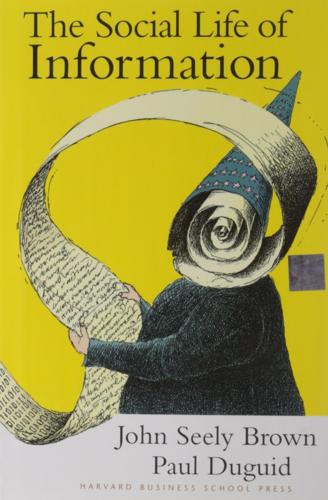
Social Life of Information
by
John Seely Brown
and
Paul Duguid
Published 2 Feb 2000
The first story followed the firm into its new offices.18 The second, five years later, watched its retreat to a more conventional way of working.19 The agency is well known for producing Apple advertisements, including the famous 1984 Superbowl ad, which portrayed Apple as champions of individualism, and the later "Think Different" campaign. The new offices of the early nineties (in Los Angeles and New York) suggested that Chiat/Day, too, could both champion individualism and think differently. Page 71 The exterior design of the Los Angeles building (by the architect Frank Gehry) expressed the forward-looking approach directlyit resembled a pair of binoculars.
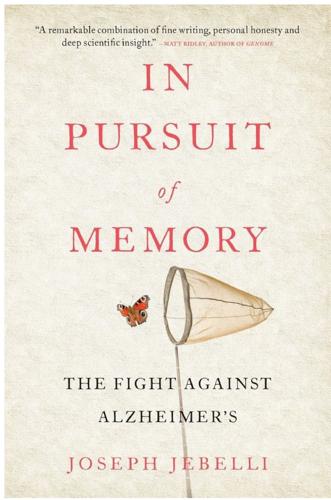
In Pursuit of Memory: The Fight Against Alzheimer's
by
Joseph Jebelli
Published 30 Oct 2017
The scientist watching couldn’t believe her luck, for this drug was already approved in humans. For the past thirteen years it had been used not for Alzheimer’s, but for skin cancer. In 2010, as the Alzheimer’s vaccination yielded unexpected insights, other researchers decided to do a little lateral thinking of their own. Among them were the American neuroscientist Tom Curran and the French biologist Yves Christen, who convened a meeting on 26 April in Paris. The topic under discussion was a remarkable tale of yin and yang: how Alzheimer’s and cancer are actually two sides of the same coin. The audience, having just started to dissect the biology of dementia, suddenly found themselves squaring an unexpected circle.
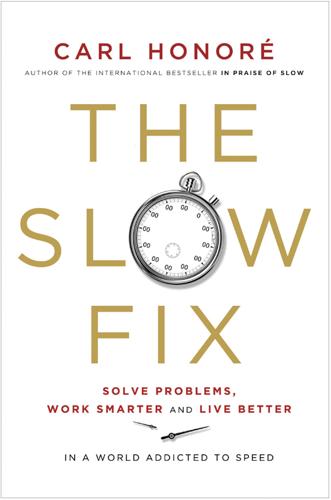
The Slow Fix: Solve Problems, Work Smarter, and Live Better in a World Addicted to Speed
by
Carl Honore
Published 29 Jan 2013
Before tackling the problem, half the participants were asked to imagine themselves as the prisoner, while the other half were asked to imagine that the prisoner was someone else. The answer to the puzzle was not exactly rocket science – the prisoner split the rope lengthwise and then tied the two halves together to give him enough length to reach the ground in one piece. But it took some creative, lateral thinking. And this is where things get interesting. Of those who imagined themselves as the prisoner, only 48 per cent solved the problem. Of those who imagined the prisoner was someone else, 66 per cent cracked it. Conclusion: we are more creative when solving other people’s problems. Nor was this a fluke result.

DIY Investor: How to Take Control of Your Investments & Plan for a Financially Secure Future
by
Andy Bell
Published 12 Sep 2013
He mentioned that his security guards were spending most of the day buying and selling shares, a far more profitable venture than working for him. The following morning at market opening I sold all of my technology shares, only hours before the market went into freefall. Genius? Well it might have been had I not bought all the shares back a week later thinking I had ridden the storm. The shake out of the dot-com bubble took a while – the Techmark 100, the index of the UK’s largest technology stocks, fell steadily, in the way that a brick falls steadily, between March 2000 and early 2003, losing about 90 per cent of its value. Every decade or so sees a stock market crash or major correction and you should always bear this in mind when you are investing.
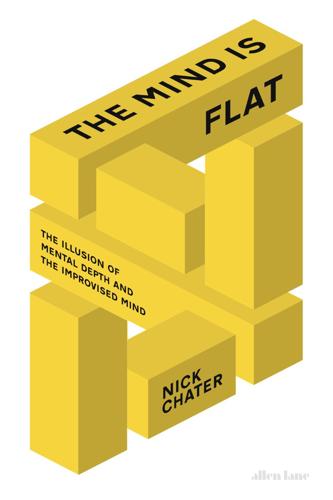
The Mind Is Flat: The Illusion of Mental Depth and the Improvised Mind
by
Nick Chater
Published 28 Mar 2018
Presumably, riding a bicycle was once a metaphorical extension of riding a horse, but in a world in which bicycles are plentiful and horses are few, any such link has been lost. Indeed, our entire language (including this very sentence) is a graveyard of dead or half-dead metaphors. Found faces and metaphors have a lot in common. Like found faces, metaphors embody three characteristics. First, a metaphor requires non-obvious, lateral thinking (another metaphor, of course), to link together two apparently unrelated domains (cheese-graters versus faces; real objects being hidden, buried, brought to the surface, and thoughts being ‘hidden’, ‘buried’, or ‘brought to the surface’). Second, metaphor, by its very nature, requires the transformation of past experience into present experience: between, say, resolving outstanding issues in a project and ‘tying up loose ends’ of string or rope.

Meantime: The Brilliant 'Unputdownable Crime Novel' From Frankie Boyle
by
Frankie Boyle
Published 20 Jul 2022
I put on my court suit, and a pair of heavy brown shoes that didn’t quite fit me and may have been left in the flat by someone else. I had lost my tie. I briefly considered that Donnie had stolen my tie to use as a tourniquet and was mainlining heroin. I’d talked with Donnie about how to get into the perfect state for the interview: a hit or two of grass (for lateral thinking), some opium (to relax me), some Adderall (a US thing that is used for treating ADHD), and an ecstasy to make me a bit more engaging. I took it all as dispassionately as a scientist, and still felt little more than a rising panic. I had a belt of Scotch and threw a few Valium on as a garnish, and by the time I had to leave I felt a qualified optimism.
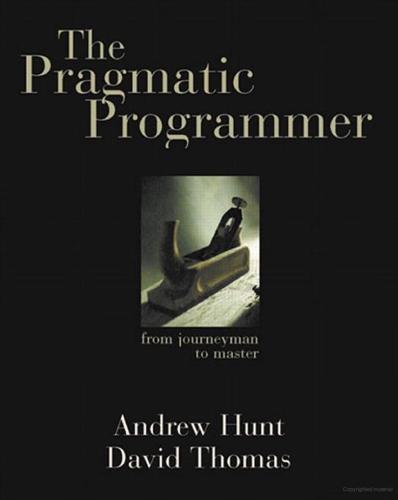
The Pragmatic Programmer
by
Andrew Hunt
and
Dave Thomas
Published 19 Oct 1999
Need a class like one in the Java runtime? The source is available, so why not just copy it and make the changes you need (license provisions notwithstanding)? If you feel this temptation, remember the hackneyed aphorism "shortcuts make for long delays." You may well save some seconds now, but at the potential loss of hours later. Think about the issues surrounding the Y2K fiasco. Many were caused by the laziness of developers not parameterizing the size of date fields or implementing centralized libraries of date services. Impatient duplication is an easy form to detect and handle, but it takes discipline and a willingness to spend time up front to save pain later.

Blink: The Power of Thinking Without Thinking
by
Malcolm Gladwell
Published 1 Jan 2005
Hoving always makes a note of the first word that goes through his head when he sees something new, and he’ll never forget what that word was when he first saw the kouros. “It was ‘fresh’—‘fresh,’” Hoving recalls. And “fresh” was not the right reaction to have to a two-thousand-year-old statue. Later, thinking back on that moment, Hoving realized why that thought had popped into his mind: “I had dug in Sicily, where we found bits and pieces of these things. They just don’t come out looking like that. The kouros looked like it had been dipped in the very best caffè latte from Starbucks.” Hoving turned to Houghton.

Foolproof: Why Safety Can Be Dangerous and How Danger Makes Us Safe
by
Greg Ip
Published 12 Oct 2015
Air traffic controllers call this the “big sky, little airplanes” principle: once at cruising altitude, aircraft are surrounded by space that provides a margin of error against the unexpected. Aircraft pilots and controllers observe strict rules of separation: aircraft are to remain a thousand feet apart vertically and three miles laterally. Think about this the next time you’re at cruising altitude and are suddenly tossed about violently by turbulence: you might crack your skull against the ceiling if you’re not belted in, but you’re not going to crash. Because the ground is so far away, pilots can trade altitude for control by descending and reducing airspeed.

The Fourth Age: Smart Robots, Conscious Computers, and the Future of Humanity
by
Byron Reese
Published 23 Apr 2018
People working twelve hours a day can’t double their income by doubling the hours they work. They have to make each unit of work more productive, which is done, of course, through technology. By increasing productivity, the poorest parts of the world will rise out of poverty, and given the rate of technological growth, it will happen sooner rather than later. Think of the cell phone. In 1994, 1 percent of the adults in the world had a mobile phone; by 2020, 90 percent of people over age six will have one. The cell phone is an empowering technology and multiplies labor in real ways by increasing the speed at which information can travel. Or consider the Internet.

Fragile Lives: A Heart Surgeon’s Stories of Life and Death on the Operating Table
by
Stephen Westaby
Published 9 Feb 2017
The pioneering early days were highly competitive, and junior heart surgeons were the thrusting young blades of the medical world. I was lucky. I succeeded because early in my training I learned from the great men: Roy Calne, John Kirklin, Denton Cooley, Donald Ross, Bud Frazier and many more. I understood what was necessary to move the specialty forward. For me it took relentless effort and lateral thinking, then sheer guts to go with the blood. This ruined any aspiration towards a normal family life. We were not normal people. Most rational young men would be paralysed by fear at the thought of carving open someone’s chest, then stopping, opening and repairing their heart. But I did this day after day.

Beginners: The Joy and Transformative Power of Lifelong Learning
by
Tom Vanderbilt
Published 5 Jan 2021
Or do they? Put them in water, and they start marching again. It was there all along, they just had to decide—or be encouraged—to use it. 2. Skills take time. Infants spend roughly a third of their day for six solid months practicing walking (and don’t truly perfect it until several years later). Think of that the next time you fret about your tennis serve or your ability to paint clouds during that hour per week you spend on an activity. They’re called baby steps for a reason. 3. Failure is an essential part of learning. We tend to remember the milestone achievements (for example, the day the baby first began to walk) and forget the many, many falls that came first.
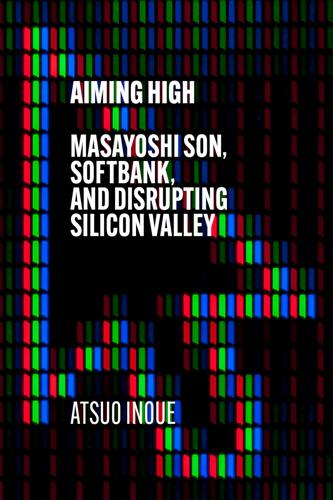
Aiming High: Masayoshi Son, SoftBank, and Disrupting Silicon Valley
by
Atsuo Inoue
Published 18 Nov 2021
Pencils with a completely rounded body would tend to roll off the table when set down – much to his annoyance – so the workaround solution to this would be to make pencils with a square-shaped or hexagonal body instead. Then, after identifying the problem, he applied deductive reasoning to come up with a solution. The second approach was lateral thinking, or looking at things from the opposite perspective. Take something which is traditionally round and make it square. Turn something that has always been red, white. Take something big and make it small. Son applied this approach to his idea for a new type of traffic light. It would use the same design and colours everyone was used to, but throw geometrical shapes into the mix, with circles, triangles and squares used for the various signals.

Future Files: A Brief History of the Next 50 Years
by
Richard Watson
Published 1 Jan 2008
This may be partly because of an oversupply of MBAs in the domestic market or the outsourcing of data analysis to cheaper countries. But it’s also probably because arts graduates are in 286 FUTURE FILES demand. In a globalized world, products and services become homogenized and commoditized. One of the best ways to create differentiation (and thereby growth) is through innovation, which means lateral thinking. It can also mean an appreciation of aesthetics, which bring us back to right-brain thinkers. There are some future-proof jobs that cannot be done by a machine or outsourced to Asia. These include what I’d call hightouch jobs such as nursing and teaching, which involve a high level of emotional intelligence.
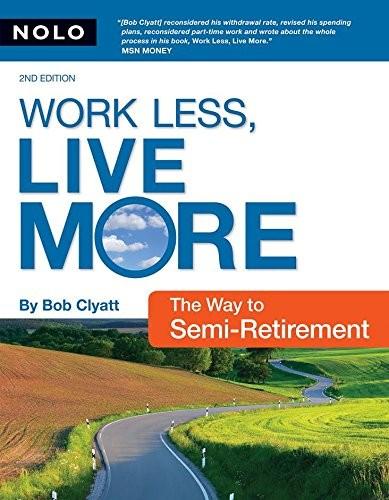
Work Less, Live More: The Way to Semi-Retirement
by
Robert Clyatt
Published 28 Sep 2007
(See Chapter 6 for a detailed discussion of how to structure work and activities in semi-retirement.) Carrots and Sticks There are two classic ways to motivate a donkey that won’t budge: Dangle food in front of its nose to get it interested in moving forward, or swing a stick on the rear to get its full attention and cooperation. Picture the image of the lateral thinking farm kid who ties the carrot to the stick, hops on the donkey’s back, and hangs the stick out in front with the carrot dangling a foot away from the mouth of the nowgalloping donkey. chapter 1 | Figure Out Why You Want to Do This | 55 Moving yourself away from your own status quo may also involve some combination of carrots and sticks—and a good measure of creativity.

Early Retirement Extreme
by
Jacob Lund Fisker
Published 30 Sep 2010
A person with no imagination and few skills will only see the box as a container. Approach the world without prejudice, start seeing things for what they are and what they can be used for, not what you've been told they're intended for. To do this requires seeing utility from a fresh perspective. This is also called lateral thinking, a kind of thinking that improves with generalization and worsens with specialization, or out-of-the-box thinking, which really originates from having thought in many different kinds of boxes. In particular, it requires a shift in focus from products to components. Construction methods Many rely on their connection to the market, through employment and purchasing, to satisfy most of their needs and wants.

Oryx and Crake
by
Margaret Atwood
Published 5 May 2003
He turned out to be excellent at Nanotech Biochem, and together he and Jimmy worked on their single-molecular-layer splicing project, managing to produce the required purple nematode – using the colour-coder from a primitive seaweed – before schedule, and with no alarming variations. Jimmy and Crake took to hanging out together at lunch hour, and then – not every day, they weren’t gay or anything, but at least twice a week – after school. At first they’d play tennis, on the clay court behind Crake’s place, but Crake combined method with lateral thinking and hated to lose, and Jimmy was impetuous and lacked finesse, so that wasn’t too productive and they dropped it. Or, under pretence of doing their homework, which sometimes they really would do, they would shut themselves up in Crake’s room, where they would play computer chess or Three-Dimensionals, or Kwiktime Osama, tossing to see who got Infidels.
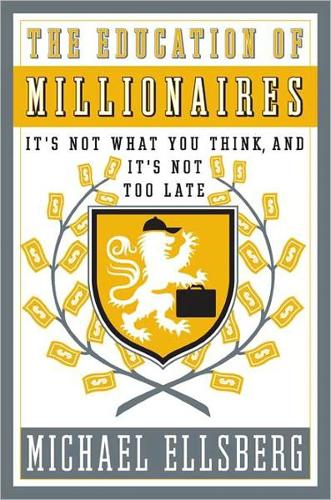
The Education of Millionaires: It's Not What You Think and It's Not Too Late
by
Michael Ellsberg
Published 15 Jan 2011
The chief executive has no business network or contacts to speak of, and in fact has no experience whatsoever running a business. Wanna invest? Unfortunately, this is precisely the way many people in America go about investing in themselves today. It’s the opposite of bootstrapping. It’s high-expenditure, high-debt up front now, and revenue (if at all) much later. Think about it. Most investments in human capital (i.e., education) are made four, five, or even seven years before the “business” being invested in (you) will produce any additional revenue from the investment in capital. From a bootstrapper’s perspective, that’s an incredibly foolish investment. If you want to take the bootstrapping approach to self-investment and development of your human capital—the way the people in this book did—the way to do it is incrementally, step-by-step.
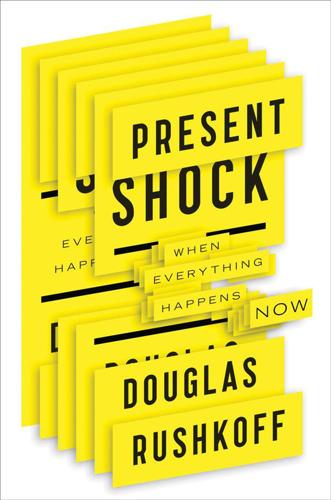
Present Shock: When Everything Happens Now
by
Douglas Rushkoff
Published 21 Mar 2013
The problem is we are focused on the object instead of the motion, or, as McLuhan would put it, the figure instead of the ground—Charlie Sheen instead of the standing wave he entered. We need to unfocus our eyes a bit to take in the shape of what’s happening. Stepping back and looking at the picture is fraught with peril, too, however—as we are so tempted to draw premature connections between things. We think of this sort of pattern recognition and lateral thinking as less logical and more intuitive, more “stoned” than “straight.” This is because most of us, at least in the West, are too inexperienced beholding things this way to do so with any rigor or discipline. Once we start seeing how things are connected, we don’t know how to stop. We may as well be on an acid trip, beholding the web of life or the interplay of matter and energy for the very first time.
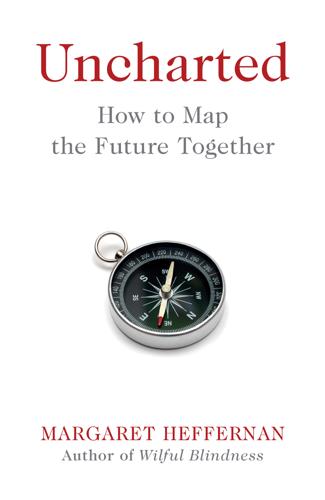
Uncharted: How to Map the Future
by
Margaret Heffernan
Published 20 Feb 2020
It may be easier to prepare for events whose horror has been visceral for centuries. But that doesn’t mean it’s impossible to prepare for events that have never happened; it just takes an act of imagination to extrapolate from early warning signs. After both 9/11 and Hurricane Katrina, the American agriculturist Cary Fowler started to wonder about what he called ‘sooner or later thinking’. Experts had said a Category 5 hurricane would hit New Orleans sooner or later; intelligence agents had expected another terrorist attack on the World Trade Center. Why, Fowler wondered, instead of talking about it, hadn’t people done anything? But then he turned that question on himself: what was he doing about threats to the world’s agricultural diversity?

Language and Mind
by
Noam Chomsky
Published 1 Jan 1968
Nevertheless, it was rather different from anything that preceded it, and, somewhat more surprising, it disappeared almost without a trace as modern linguistics developed in the late nineteenth century. I want to say just a word about the relationship of the theory of deep and surface structure to earlier and later thinking about language. 16 Language and Mind There is a similarity, which I think can be highly misleading, between the theory of deep and surface structure and a much older tradition. The practitioners of philosophical grammar were very careful to stress this similarity in their detailed development of the theory and had no hesitation in expressing their debt to classical grammar as well as to such major figures of renaissance grammar as the Spanish scholar Sanctius.

Paddle Your Own Canoe: One Man's Fundamentals for Delicious Living
by
Nick Offerman
Published 30 Sep 2013
I guess I still had a lot to learn, about bourbon whisky and about being starstruck, which I’m glad I got out of the way in the shadows of O’Rourke’s, before I ever even heard of the blinding lights of a red carpet. * * * I know I have deep gratitude for this time in my life, because whenever I would later think things like “I missed the prime years of my acting life building fucking scenery! Jesus-goddamn, John Cusack had done two dozen films by this point!” I know I wouldn’t trade anything for the time I had with the Defiant Theatre and Chicago theater in general, easily the most fecund and exciting theater community in the country.

Thinking About It Only Makes It Worse: And Other Lessons From Modern Life
by
David Mitchell
Published 4 Nov 2014
On the face of it, this seems like too big a challenge for a canine solution, but remember that dogs can be trained. I’m sure it’s not stretching the ingenuity of breeders too far to envisage, within the decade, the emergence of some form of black-and-yellow-dyed miniature scottie–chihuahua cross that can be taught to hang-glide. We may end up with a dog-eat-dog world but, with this kind of lateral thinking, it’s not just death that will lose its sting. * The first printed Christmas cards, I’m told, were manufactured in 1848 and were the brainchild of Sir Henry Cole. “Brainchild” is an odd word. You hear it a lot in explanatory voiceovers and I suppose I was trying to join in, but I don’t really like it.
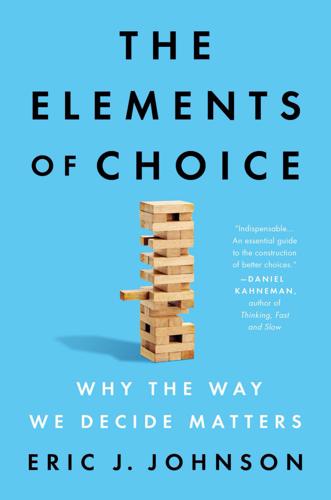
The Elements of Choice: Why the Way We Decide Matters
by
Eric J. Johnson
Published 12 Oct 2021
Through his long-running one-man shows and highly rated TV specials, he has single-handedly revived the occupation of the “mentalist”—the supposed mind reader.1 Brown, however, is different from other psychics or telepaths. He doesn’t claim to have any psychic powers. Yet he appears capable of recording, before the fact and with uncanny accuracy, what someone will later think and do. In one demonstration, Brown has two advertising executives, Tony and Martin, take a cab to meet him at an ordinary-looking office. After initial pleasantries, he asks them to develop a print ad for an unusual new business, a chain of animal taxidermy shops. The ad must contain a logo, a name, and a slogan for the business.
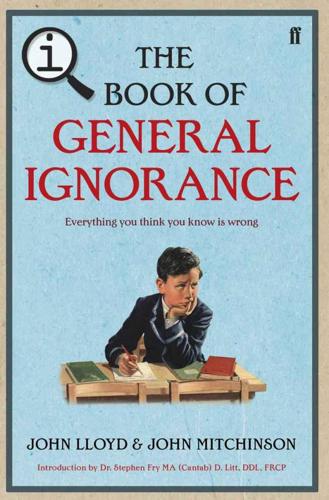
QI: The Book of General Ignorance - The Noticeably Stouter Edition
by
Lloyd, John
and
Mitchinson, John
Published 7 Oct 2010
Conan the Bacterium’s resistance to radiation and cold, and its ability to preserve its DNA intact under these extreme conditions, have led NASA scientists to believe it might hold the clue to finding life on Mars. What’s the best use for Marmite? Solving the Arab–Israeli conflict in the Middle East No less a person than the inventor of lateral thinking himself, Edward de Bono, advised a Foreign Office committee in 2000 that the whole sorry business might be due, in part, to low levels of zinc found in people who eat unleavened bread, a known side-effect of which is aggression. He suggested shipping out jars of Marmite to compensate. The popular belief that eating Marmite will keep mosquitoes at bay has no basis in scientific fact.
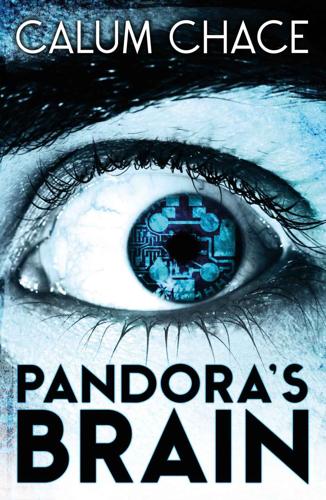
Pandora's Brain
by
Calum Chace
Published 4 Feb 2014
While Carl was talking, David noticed that Alice’s head was bowed, and that she was sobbing into cupped hands. He felt a stab of guilt at having spent almost no time with Alice since Matt was killed. He made a mental note to speak to her afterwards. Carl claimed that his best friend had an unusual combination of analytical horsepower, lateral thinking skills, and well-grounded common sense. Using an example which slightly missed the mark for some members of the audience, he illustrated his claim with a story about a video game where Matt had escaped from a seemingly fatal trap by using some rope, a skateboard, and a refrigerator. Like Leo, Carl asked what Matt might have achieved if he had been given the time to show the world what he could do.

The Martian
by
Andy Weir
Published 1 Jan 2011
“I only have a passing memory of what sleep is,” Bruce said. “So is it ready?” Venkat asked. “Yes, it’s ready. But you’re not going to like it.” “Go on.” Bruce steeled himself and stood, picking up his briefcase. He pulled a booklet from it. “Bear in mind, this is the end result of thousands of hours of work, testing, and lateral thinking by all the best guys at JPL.” “I’m sure it was hard to trim down a ship that’s already designed to be as light as possible,” Venkat said. Bruce slid the booklet across the desk to Venkat. “The problem is the intercept velocity. The MAV is designed to get to low Mars orbit, which only requires 4.1 kps.
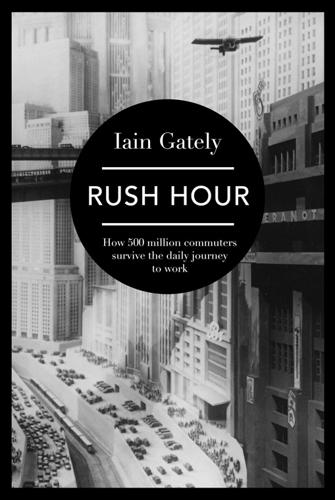
Rush Hour: How 500 Million Commuters Survive the Daily Journey to Work
by
Iain Gately
Published 6 Nov 2014
The project, however, has had a spoke thrown in its wheels in the form of a counterproposal by Elon Musk, a forty-two-year-old South African-born entrepreneur, who co-founded PayPal and is now CEO of both Tesla Motors and SpaceX. Tesla is the first-ever electrical car manufacturer to turn a profit, and SpaceX the first private company to deliver supplies to the International Space Station. Musk’s success is down to flair and lateral thinking. When he started Tesla, most electric car manufacturers were building small autos for eco-warriors (who’d rather not be seen on wheels at all), or making wolves in sheep’s clothing – SUVs with large petrol and small ancillary electric motors – in order to take advantage of grants for green vehicles.
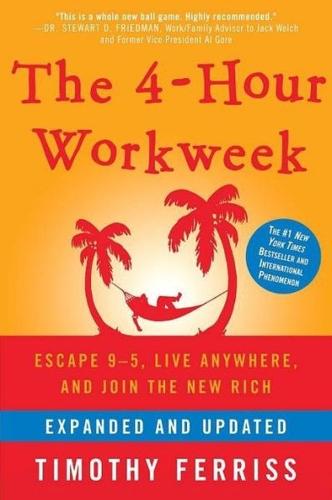
The 4-Hour Workweek: Escape 9-5, Live Anywhere, and Join the New Rich
by
Timothy Ferriss
Published 1 Jan 2007
Even if you have never considered becoming an entrepreneur in the modern sense, the DEAL process will turn you into an entrepreneur in the purer sense as first coined by French economist J. B. Say in 1800—one who shifts economic resources out of an area of lower and into an area of higher yield. Last but not least, much of what I recommend will seem impossible and even offensive to basic common sense—I expect that. Resolve now to test the concepts as an exercise in lateral thinking. If you try it, you’ll see just how deep the rabbit hole goes, and you won’t ever go back. Take a deep breath and let me show you my world. And remember—tranquilo. It’s time to have fun and let the rest follow. TIM FERRISS Tokyo, Japan September 29, 2006 1. Uncommon terms are defined throughout this book as concepts are introduced.
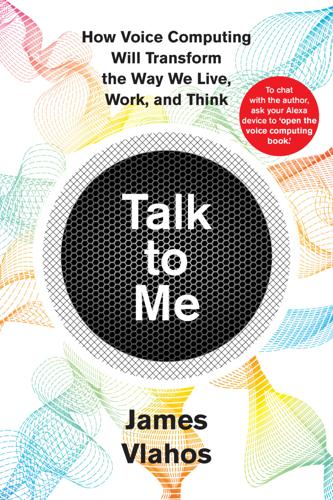
Talk to Me: How Voice Computing Will Transform the Way We Live, Work, and Think
by
James Vlahos
Published 1 Mar 2019
Isabelle Olsson, a designer, got the job of announcing the new Google Home Mini, a bagel-size device that is the company’s answer to the Amazon Echo Dot. “The home is a special intimate place, and people are very selective about what they welcome into it,” Olsson said. After the presentation, Google gave out Minis as swag to the attendees. One of them was a writer named Artem Russakovskii, and he could be forgiven for later thinking that he hadn’t been selective enough about what he welcomed into his home. After having the Mini for a couple of days, Russakovskii went online to check his voice search activity. He was shocked to see that thousands of short recordings had already been logged—recordings that never should have been made.
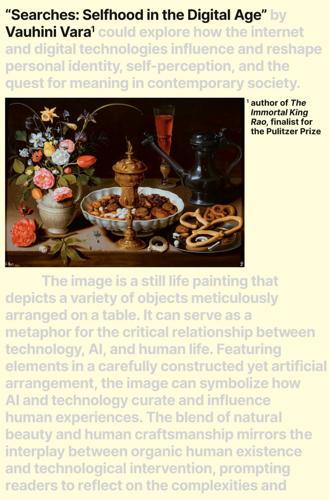
Searches: Selfhood in the Digital Age
by
Vauhini Vara
Published 8 Apr 2025
What I’m wondering is how asking questions in this form, instead of through more conventional interview methods, might yield different ways of answering. There are no rules about how to respond. I’m going to do it too. You should know that one or more of your answers, and mine, might appear in my published work; if so, they’ll be mixed up with the answers of others. If you fill out the survey once and later think of something else you wish you’d included, feel free to fill it out again. You can reach me at whatisitliketobealive@gmail.com. Vauhini Vara Tell me something, anything you want, about yourself. I have curly hair. I’m a twin. I am the best lover in my family. I’m a butch dyke.

Boom: Bubbles and the End of Stagnation
by
Byrne Hobart
and
Tobias Huber
Published 29 Oct 2024
As one NASA researcher notes, the “common goal” and “sense of purpose” underlying Apollo “prevented the development of bureaucratic sclerosis.” 192 Apollo’s management structure was decentralized, flexible, and often informal, which enabled scientific and technical risk-taking, rapid cycles of testing and feedback, and a relentless focus on problem-solving. 193 Early on, Webb and Mueller realized that a project as ambitious as Apollo could not succeed unless scientists and engineers were given space to think creatively. Some amount of hierarchical organization was necessary for setting goals and keeping plans on track, but decentralized technological research and development would catalyze scientific creativity, lateral thinking, and bottom-up initiatives. Under Webb and Mueller’s leadership, NASA’s geographically dispersed program offices and centers—such as the Manned Spacecraft Center in Houston (now Johnson Space Center), the Launch Operations Center on Merritt Island, Florida (renamed Kennedy Space Center in 1963), and the Marshall Space Flight Center in Huntsville, Alabama—had a high degree of autonomy and, in some cases, relatively flat hierarchies.
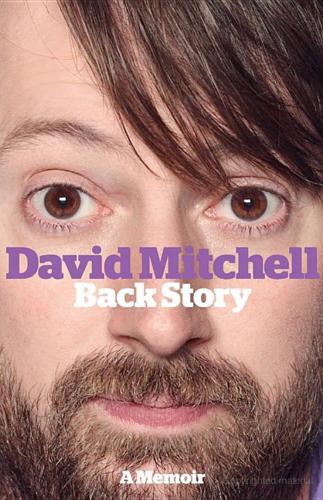
David Mitchell: Back Story
by
David Mitchell
Published 10 Oct 2012
- 6 - Death of a Monster My attempt to swerve round another bus stop is scuppered when I can’t help stopping to stare at the advert on it – for Turkey. ‘Bootiful!’ declares a bronzed Bernard Matthews as the Aegean sparkles behind him. It must have been his last gig before he died – and a great piece of lateral thinking from the guys in Ankara. Or it would have been, if they’d actually had Bernard Matthews. Sadly – and this is where I can’t pretend ad executives are fools – the Turkey advert halts me in my tracks not with a great visual pun, but with a picture of a girl’s arse. The arse is flecked with white sand and in the background are some Roman ruins.

Whole Earth Discipline: An Ecopragmatist Manifesto
by
Stewart Brand
Published 15 Mar 2009
Fortunately Brand’s wonderful book will not be ignored because it makes its statements in a highly direct controversial fashion.” —David Tribe, Biofortified.org “I adored this book. Even the few parts I disagreed with. Stewart Brand’s mind is exhilaratingly clear, rational, and passionate. His pen is, too.” —Matt Ridley, author of Genome and Nature Via Nuture “On the first page of this landmark book, the lateral-thinking, San Francisco tugboat-based ecologist Stewart Brand sums up his philosophy in a single line: ‘We are as gods and HAVE to get good at it.’ It’s a staggeringly arrogant statement, guaranteed to offend everyone from religious fundamentalists to those at the mystical, misty-eyed end of the green spectrum, but after reading Whole Earth Discipline, you’ll find it difficult to disagree.”
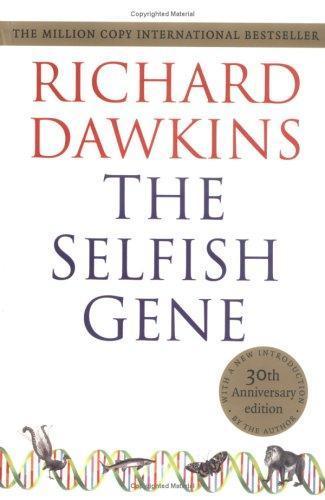
The Selfish Gene
by
Richard Dawkins
Published 1 Jan 1976
The gazelles look as if they are deliberately inviting the predator's attention, almost as if they are teasing the predator. This observation has led to a delightfully daring theory. The theory was originally foreshadowed by N. Smythe but, pushed to its logical conclusion, it bears the unmistakeable signature of A. Zahavi. Zahavi's theory can be put like this. The crucial bit of lateral thinking is the idea that stotting, far from being a signal to the other gazelles, is really aimed at the predators. It is noticed by the other gazelles and it affects their behaviour, but this is incidental, for it is primarily selected as a signal to the predator. Translated roughly into English it means: 'Look how high I can jump, I am obviously such a fit and healthy gazelle, you can't catch me, you would be much wiser to try and catch my neighbour who is not jumping so high!'
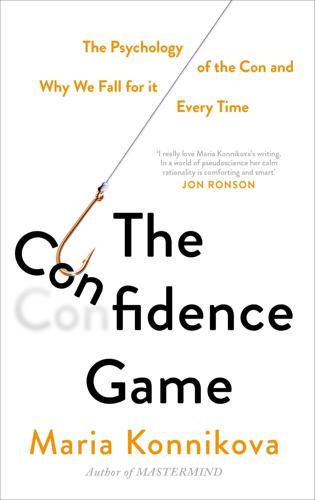
The Confidence Game: The Psychology of the Con and Why We Fall for It Every Time
by
Maria Konnikova
Published 28 Jan 2016
We focus in a way we wouldn’t if someone were just trying to catch us with a random phrase or picture or interaction. And in those moments of fully immersed attention, we may absorb things under the radar, so to speak, that would normally either pass us by or put us on high alert. We may even find ourselves, later, thinking that some idea or concept is coming from within our own brilliant, fertile minds, when really it was planted there by the story we just heard or read. Feeling is first. And the best way to activate strong feeling is simple: you tell a compelling story. The play begins, first and foremost, with that oldest of human endeavors, a dashing good yarn.
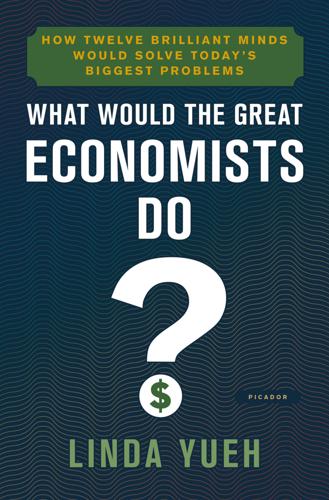
What Would the Great Economists Do?: How Twelve Brilliant Minds Would Solve Today's Biggest Problems
by
Linda Yueh
Published 4 Jun 2018
The role of government then is not to direct the economy, but to establish and enforce the laws of property and those governing exchange that enable individuals to interact with each other in a mutually beneficial way. Liberty is a reflection of the supremacy of law, not its absence. Spontaneous order would be the centrepiece of much of Hayek’s later thinking. In 1921 he started working in the Austrian Office of Accounts (set up to settle international debt claims) for the economist Ludwig von Mises, who was well known as a monetary theorist and part of the Austrian School of economic thought at the University of Vienna. A couple of years later Hayek moved to New York in order to broaden his economics training.
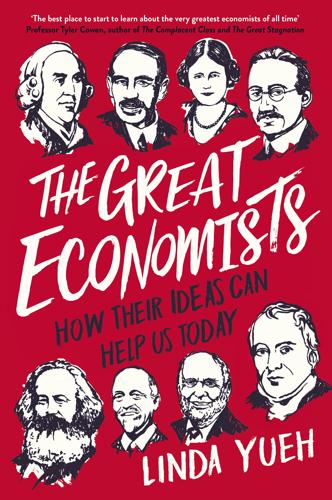
The Great Economists: How Their Ideas Can Help Us Today
by
Linda Yueh
Published 15 Mar 2018
The role of government then is not to direct the economy, but to establish and enforce the laws of property and those governing exchange that enable individuals to interact with each other in a mutually beneficial way. Liberty is a reflection of the supremacy of law, not its absence. Spontaneous order would be the centrepiece of much of Hayek’s later thinking. In 1921 he started working in the Austrian Office of Accounts (set up to settle international debt claims) for the economist Ludwig von Mises, who was well known as a monetary theorist and part of the Austrian School of economic thought at the University of Vienna. A couple of years later Hayek moved to New York in order to broaden his economics training.
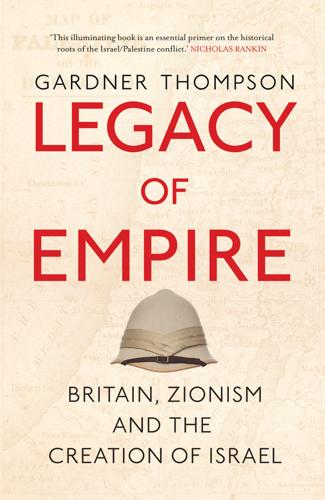
Legacy of Empire
by
Gardner Thompson
‘While he was in Paris, Lloyd George had to take time out for labour unrest, parliamentary revolts and the festering sore of Ireland. Yet he entered into the negotiations in Paris as though he had little else on his mind.’32 MacMillan praises the Prime Minister’s ‘powers of concentration and recuperation’. One might, alternatively, lament the absence of any lateral thinking or, despite his own Welsh origins, sympathetic imagination for another subject people (whether Irish or Arab). Arthur Balfour knew Ireland, too, but failed to regard it as a warning. He had been Chief Secretary of Ireland in the late 1880s. He regarded Home Rule as a wicked proposal. No more than Lloyd George did he perceive an Irish nation or recognise Irish nationalist claims.

Life on the Rocks: Building a Future for Coral Reefs
by
Juli Berwald
Published 4 Apr 2022
They involved cooperation by government, nonprofit, and for-profit institutions, as well as the people who live and work near the resource itself. And while these partnerships are still rather novel, they hold the promise of providing much-needed funding to one of the sea’s most critical ecosystems at its most critical moment. Whether these funding ideas are “crazy” or scalable remains to be seen. Later, thinking back on my conversations with Rob and Mark, two comments stood out. Describing what it took to get the Paris Club to come to the table with Seychelles, Rob had said, “It’s kind of like, ‘Let’s get everyone in the room and talk about how to do this with kinder terms.’ The agreements had to suit everyone and had to benefit the environment.”

The Subterranean Railway: How the London Underground Was Built and How It Changed the City Forever
by
Christian Wolmar
Published 30 Sep 2009
This was the Tower Subway, opened in 1870, which was built by an engineer called Peter Barlow beneath the Thames near the site of the present City Hall, downriver of London Bridge which was then the lowest bridge crossing. Barlow had used vertical cast-iron cylinders, which were driven down into the earth for the foundations for a suspension bridge further upriver at Lambeth, and had, in one of those brilliant bits of lateral thinking for which the Victorians were renowned, realized that the same technique could be used to bore horizontally through the ground to create a tunnel. Barlow adopted and improved Brunel’s concept of a circular shield. It was pushed through the ground with jacks, allowing men to carve out and dispose of the earth with great efficiency.

Glasshouse
by
Charles Stross
Published 14 Jun 2006
It's probably there as a honeypot, to snare the overly curious and insufficiently paranoid. Even if it isn't, I probably won't get anywhere useful—those old conversational interfaces are not only arcane, they're feeble-minded. To put one over on these professional paranoids is going to take skill, cunning, and lateral thinking. And my thinking is this: If Fiore and the Bishop Yourdon and their fellow experimenters have one weak spot, it's their dedication to the spirit of the study. They won't use advanced but anachronistic surveillance techniques where nonintrusive ones that were available during the dark ages will do.

The Prince of the Marshes: And Other Occupational Hazards of a Year in Iraq
by
Rory Stewart
Published 1 Jan 2005
“If we go in now, the province will go up in flames,” I said. “Do I care? We’re not here for keeps. Americans would do it. They wouldn’t get away with it from the Americans. What is our problem? Honestly, the problem is officers thinking about their own careers. That’s why officers should not be allowed anywhere near this stuff—need some lateral thinking. And most of them couldn’t hit a cow’s arse with a banjo.” I mentioned that I had just been reading Bertram Thomas, who had been the political officer in Nasiriyah in the twenties. He had said something like “Arabs respect three things in a government: power, the will to use that power, and a genuine concern for the welfare of the people.”

Greater: Britain After the Storm
by
Penny Mordaunt
and
Chris Lewis
Published 19 May 2021
The US Blinded Veterans Association (BVA) embraced Blind Veterans UK as its sole research partner and established a bilateral Joint Ocular Trauma Task Force for both military and civilian work. This led directly to the formation of a new research group, Bravo Victor, to pool science resources to which royalties from this book are directed. The resulting venture was more than just academic brilliance. It needed some lateral thinking to make it happen. It’s also a clear example of the trust the world puts in British leadership in the knowledge and belief that, together, we can make great things happen. Furthermore, the research advances humanity towards a palliative, if not a cure, for jet lag. This is a good example of what can be done with a charity run with enthusiasm, energy and joined-up thinking.

These Strange New Minds: How AI Learned to Talk and What It Means
by
Christopher Summerfield
Published 11 Mar 2025
You can simply pass in a list like the one called ‘names’ – which can be as long as you like – and it will sort it alphabetically by surname. If you are a teacher, a librarian or an exceptionally tidy person, this might just come in handy. This name-sorting problem only requires entry-level coding skills. But sometimes, programming can really require some serious lateral thinking. In fact, for some people, coding is itself a competitive activity, like the Olympic half-marathon or The Great British Bake Off. For example, a website called Codeforces hosts an annual competition that pits elite coders against each other, jostling to solve an array of tortuous challenges, sight unseen, as elegantly as possible.

The Web Application Hacker's Handbook: Finding and Exploiting Security Flaws
by
Dafydd Stuttard
and
Marcus Pinto
Published 30 Sep 2007
However, because of the nature of logic flaws, it is unlikely that they will ever be eliminated via standards for secure development, use of code-auditing tools, or normal penetration testing. The diverse nature of logic flaws, and the fact that detecting and preventing them often requires a good measure of lateral thinking, suggests that they will be prevalent for a good while to come. Any serious attacker, therefore, needs to pay serious attention to the logic employed in the application being targeted to try to figure out the assumptions that designers and developers probably made. Then he should think imaginatively about how those assumptions may be violated.
…
■ When escaping user-supplied data before passing to a potentially vulnerable application component, always be sure to escape the escape character itself, or the entire validation mechanism may be broken. ■ Always use appropriate storage to maintain any data that relates to an individual user—either in the session or in the user's profile. Summary Attacking an application's logic involves a mixture of systematic probing and lateral thinking. We have described various key checks that you should always carry out to test the application's behavior in response to unexpected input. These include removing parameters from requests, using forced browsing to access functions out of sequence, and submitting parameters to different locations within the application.
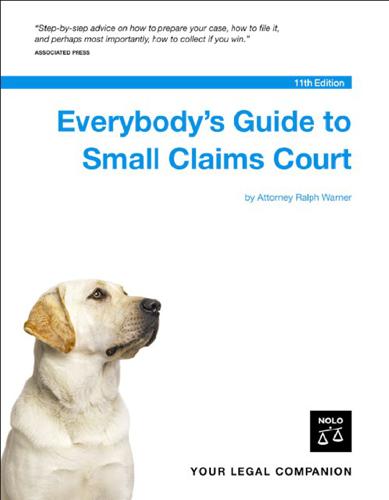
Everybody's Guide to Small Claims Court
by
Ralph E. Warner
Published 2 Jan 1978
Estimates Whenever you attempt to recover money for damage done to your vehicle, it is important to show the judge several estimates for the cost of repairs. Three is usually a good number. If you have already gotten the work done, bring your canceled check or receipt from the repair shop, along with the estimates you didn’t accept. Be sure to get your estimates from reputable shops. If, for some reason, you get an estimate from someone you later think isn’t competent, simply ignore it and get another. You have no legal responsibility to get your car fixed by anyone suggested to you by the person who caused the damage. Indeed, common sense often dictates that you don’t. Unfortunately, you can’t recover money from the other party to cover the time you put in to get estimates, take your car to the repair shop, or appear in court.
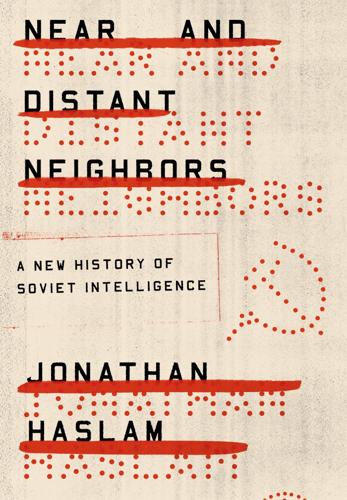
Near and Distant Neighbors: A New History of Soviet Intelligence
by
Jonathan Haslam
Published 21 Sep 2015
Cipher Warfare A breakthrough occurred with the defection of Gouzenko, who made a significant contribution to explaining how the codebooks were compiled and how the additives worked.45 Thus the telegrams used by Moscow were vulnerable. At the beginning of the following year, 1946, Meredith Gardner, an outstanding cryptanalyst good at languages and capable of lateral thinking, joined this ambitious enterprise. The official account explains that Gardner identified “the ‘spell’ and ‘end spell’ indicators” and was thereby “able to recover the portion of the codebook used for spelling English names and phrases in a message. He continued to build on his success, recovering more and more code groups.”
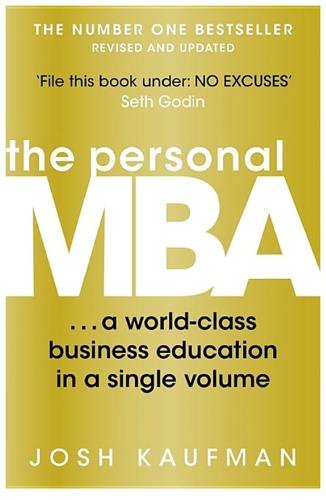
The Personal MBA: A World-Class Business Education in a Single Volume
by
Josh Kaufman
Published 2 Feb 2011
The Invisible Decision—No one knows how or where decisions are made, and there is no transparency in the decision-making process. 2. Unfinished Business—Too many tasks are started but very few are carried through to the end. 3. Coordination Paralysis—Nothing can be done without checking with a host of interconnected units. 4. Nothing New—There are no radical ideas, inventions, or lateral thinking—a general lack of initiative. 5. Pseudo-Problems—Minor issues become magnified out of all proportion. 6. Embattled Center—The center battles for consistency and control against local/regional units. 7. Negative Deadlines—The deadlines for work become more important than the quality of the work being done. 8.
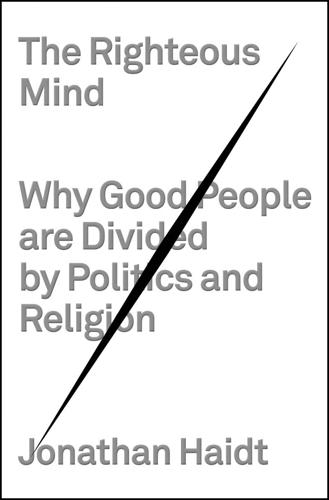
The Righteous Mind: Why Good People Are Divided by Politics and Religion
by
Jonathan Haidt
Published 13 Mar 2012
The thinking system is not equipped to lead—it simply doesn’t have the power to make things happen—but it can be a useful advisor. Zajonc said that thinking could work independently of feeling in theory, but in practice affective reactions are so fast and compelling that they act like blinders on a horse: they “reduce the universe of alternatives” available to later thinking.11 The rider is an attentive servant, always trying to anticipate the elephant’s next move. If the elephant leans even slightly to the left, as though preparing to take a step, the rider looks to the left and starts preparing to assist the elephant on its imminent leftward journey. The rider loses interest in everything off to the right. 2.

House of God
by
Samuel Shem
Published 1 Jan 1978
Colorful and esoteric bacteria grew out of the wound, including one species that was native only to the rectum of the domestic duck. Fats got excited about this, wanting to publish "The Case of Duck's Ass Donowitz." The patient flirted with death but pulled through. He was discharged a month later, thinking it usual, even a necessary part of his successful course of treatment in the House, for the skin to have been ripped off his arm by his dear and glorious physician. When the Fat Man went to lunch and we did not, the terror returned. Maxine asked me to write an order for aspirin for Sophie's headache, and as I started to sign my name, I realized I was responsible for any complications, and I stopped.
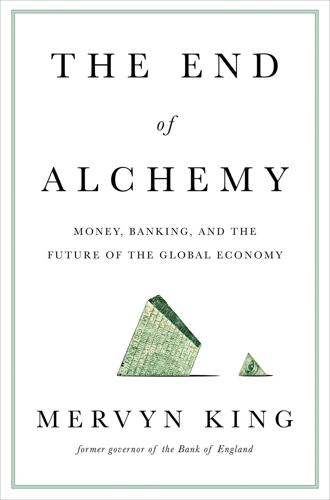
The End of Alchemy: Money, Banking and the Future of the Global Economy
by
Mervyn King
Published 3 Mar 2016
The former make millions of calculations; the latter make intuitive leaps of imagination. And that should be a warning of the limitations of the economic calculus underlying traditional economic theories. Human capacity for making conscious calculations is bounded, but the ability of the human brain to engage in lateral thinking is well developed. People are better than computers at recognising faces. Most of my economist colleagues have had their deepest insights through the use of intuition, and have deployed logical mathematical proofs to demonstrate to others why that intuition is correct. But the original insight did not come from making a mathematical calculation.
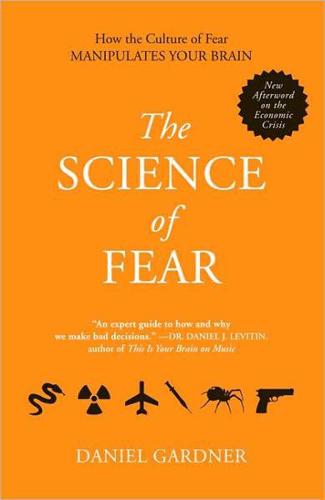
The Science of Fear: How the Culture of Fear Manipulates Your Brain
by
Daniel Gardner
Published 23 Jun 2009
Surveys in Australia and the United Kingdom made the same discovery. This is troubling because it has a predictable effect on women’s perceptions of the risk of breast cancer. Profiles of victims are personal, vivid, and emotional—precisely the qualities that produce strong memories—so when a woman exposed to them later thinks about the risk of breast cancer she will quickly and easily recall examples of young women with breast cancer, while finding it a struggle (assuming she does not have personal experience) to come up with examples of old women with breast cancer. The woman’s Gut will use the Example Rule to conclude that the risk of breast cancer is slight for old women and substantial for young women.
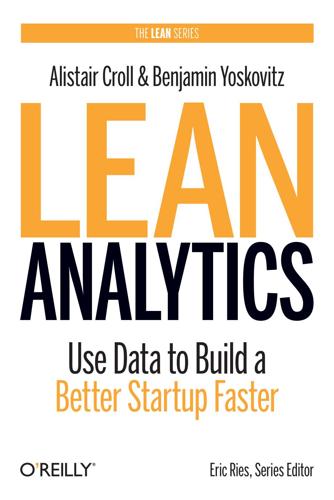
Lean Analytics: Use Data to Build a Better Startup Faster
by
Alistair Croll
and
Benjamin Yoskovitz
Published 1 Mar 2013
You can use these “pages” to create a back-of-the-napkin business model. For example, Figure 7-2 shows a sample business model flipbook for Dropbox. Figure 7-2. Turning the flipbook pages to Dropbox There’s another advantage of stating business models in a flipbook structure like this: it encourages lateral thinking. Each turn of a “page” is a pivot: what would it mean to offer Dropbox as a physical delivery? Or to charge up front for it? Or to rely on paid advertising? Six Business Models In the coming chapters, we’re going to look at six business models. Each model is a blend of these aspects, and we’ve tried to mix them up enough to give you a taste of some common examples.

Krakatoa: The Day the World Exploded
by
Simon Winchester
Published 1 Jan 2003
More especially, they were concerned with what was known as the remanent magnetism that might be held in the rocks of the sea-floor, the old magnetic signatures that we later studied in east Greenland. The pioneering work on remanent magnetism had been accomplished largely by an ebullient red-headed Mancunian named Keith Runcorn. He was a lateral-thinking geophysicist who wondered out loud if perhaps the magnetic field of the earth somehow varied over time – if it had perhaps varied in its strength or its direction. And if it had varied, then perhaps a record of those variations would be discoverable by examining the remanent magnetism of rocks laid down during the time that was being investigated.* In the early 1950s Runcorn and his colleagues, and associates, using a range of devices (including a sphere made of thirty-seven pounds of pure gold, borrowed from a very sceptical British Royal Mint), studied this fossil magnetism in a variety of rocks of a variety of ages across Britain.
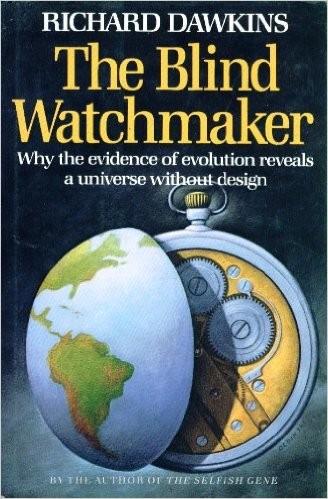
The Blind Watchmaker; Why the Evidence of Evolution Reveals a Universe Without Design
by
Richard Dawkins
Published 1 Jan 1986
As we saw in Chapter 3, this argument overcomes our incredulity only if we stress that there was an extremely large number of steps along the way, and only if each step is very tiny. Darwin was constantly battling against this source of incredulity, and he constantly made use of the same weapon: the emphasis on gradual, almost imperceptible change, spread out over countless generations. Incidentally, it is worth quoting J. B. S. Haldane’s characteristic piece of lateral thinking in combating the same source of incredulity. Something like the transition from Amoeba to man, he pointed out, goes on in every mother’s womb in a mere nine months. Development is admittedly a very different process from evolution but, nevertheless, anyone sceptical of the very possibility of a transition from single cell to man has only to contemplate his own foetal beginnings to have his doubts allayed.

Do You Dream of Terra-Two?
by
Temi Oh
Published 15 Mar 2019
It had been a dream to get into Dalton in the first place, to live and study amongst the neat, brilliant students who were unlike her in every way. At almost fourteen, Poppy had been four months shy of the upper age limit for candidates, but she had filled out an application – an online test, logic problems, personality quizzes, reasoning and lateral thinking – in a secret moment of longing. Half a million other children also applied. She had been shocked when she was invited for the selection interviews, but knew that her mother would not be able to afford the train fare into London. That might have been the end of it, right then, had it not been for a school teacher who handed her an envelope of cash with a note saying, ‘make us proud’.
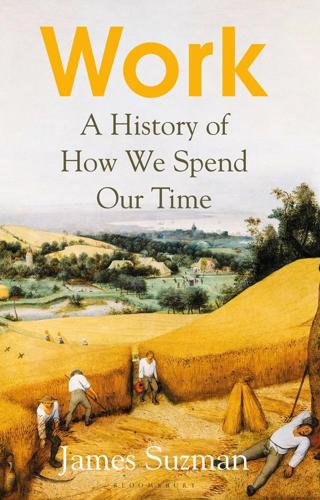
Work: A History of How We Spend Our Time
by
James Suzman
Published 2 Sep 2020
For as contemporary as Shelley’s fable is, it is one that would also have resonated in some ways with Roman senators and plebeians alike during the reigns of the Caesars, sugar and cotton plantation owners in the Caribbean and southern states of the USA, nobles in Shang Dynasty China, ancient Sumerians, Mayans and Aztecs. Indeed, it would have resonated with any and all societies who rationalised slavery by dehumanising those they enslaved. Were Dr Frankenstein to build a similar monster today, its cognitive circuits would be designed to emulate the plasticity, creativity and lateral-thinking capabilities characteristic of human thought. And even though reanimating dead human flesh is not yet on the cards, its robotic body would almost certainly resemble that of a human or other animal. In the restless world of robotics, engineers building the most versatile and dextrous autonomous systems are looking ever more to the natural world for inspiration.
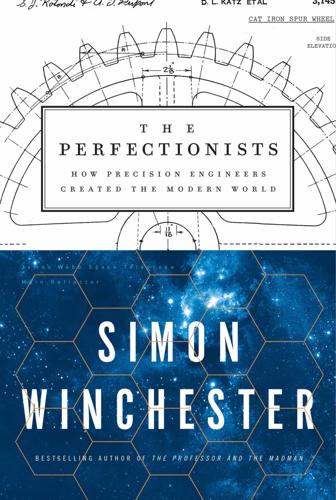
The Perfectionists: How Precision Engineers Created the Modern World
by
Simon Winchester
Published 7 May 2018
The telescope tube was narrow and filled with a mess of instruments, pipes, and wires, and to send an astronaut swimming down into it with an oxygen pack and a wrench and a screwdriver and holding a new set of optical correctives was going to be exceptionally difficult, for a host of reasons. Then one man solved this central problem, and he did so in a sudden moment of lateral thinking that came to him while he stood, stark naked, in a shower in a hotel bathroom in Munich, in the mountains in the south of Germany. His name was Jim Crocker. He was, at the time, a senior Hubble optical engineer, and he was quite as devastated as the rest of the crew. Like most who had gathered in Germany for a crisis meeting of the European Space Agency, where everyone was imploring everyone else for a solution to the floating problems of Hubble, Crocker was obsessed with the need to make repairs.
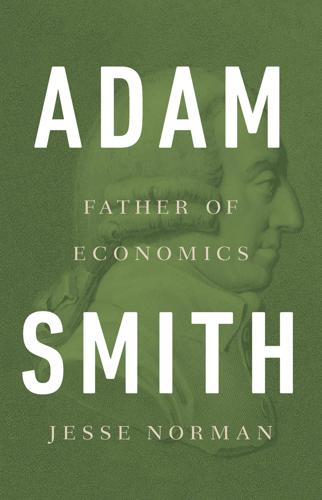
Adam Smith: Father of Economics
by
Jesse Norman
Published 30 Jun 2018
Many would not be able to find employment even upon these hard terms, but would either starve, or be driven to seek a subsistence either by begging, or by the perpetration perhaps of the greatest enormities. Want, famine, and mortality would immediately prevail… This is a near-perfect description of what Keynes would later think of as a sub-optimal equilibrium. So much for the idea that Smith believed that markets are always efficient and always maximize human welfare. Moreover, the focus of Smith’s ‘system of natural liberty’ is not on absolute market freedom, but on clearing away particular impediments to trade such as subsidies and tariffs; not on perfect markets but on market imperfections.
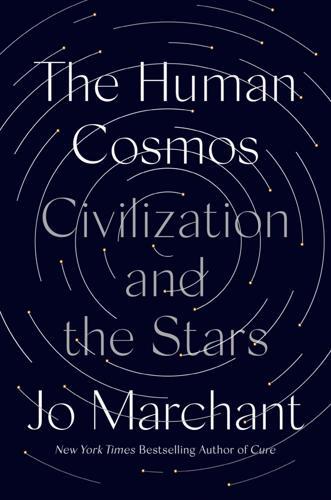
The Human Cosmos: A Secret History of the Stars
by
Jo Marchant
Published 15 Jan 2020
North concluded that this type of escapement must have started out as an oscillating bell-ringing device, presumably created for a water clock, before someone realized that it could also be used to regulate the motion of a falling weight. From the peals of a bell to the ticks of a clock: that was the leap of lateral thinking that enabled Europe to jump ahead of all the centuries of scholarship of the Byzantine and Islamic worlds. MS Ashmole 1796 also describes how many astronomical features were incorporated in the clock. The 24-hour Sun wheel was connected to a slightly faster second wheel, which drove a 6-foot iron display dial in time with the circling stars.

Spin
by
Robert Charles Wilson
Published 2 Jan 2005
Maybe mat's why we ended up stumbling together into Giselle's messy bedroom, smoking another joint, falling down on the Barbie-pink bedspread, making love under the rain-blinded windows, holding each other until we fell asleep. But it wasn't Giselle's face that floated into my mind in the dreamy aftermath, and I woke a couple of hours later thinking: My god, she's right, I'm going to Florida. * * * * * In the end it took weeks to arrange, both at Jason's end and at the hospital. During that time I saw Giselle again, but only briefly. She was in the market for a used car and I sold her mine; I didn't want to risk the drive cross-country.
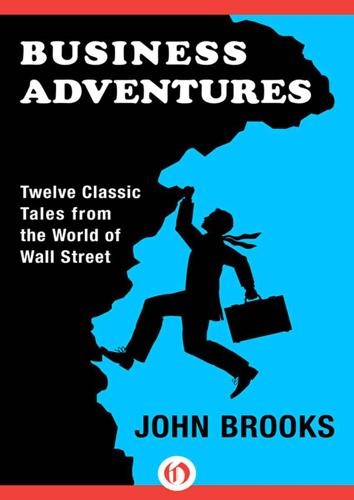
Business Adventures: Twelve Classic Tales From the World of Wall Street
by
John Brooks
Published 6 Jul 2014
A Federal Reserve man with a literary bent and a romantic temperament was later moved to draw a parallel between the Federal Reserve Bank that night and the British camp on the eve of the Battle of Agincourt in Shakespeare’s version, in which King Henry mused so eloquently on how participation in the coming action would serve to ennoble even the vilest of the troops, and how gentlemen safe in bed at home would later think themselves accursed that they had not been at the battle scene. Coombs, a practical man, had no such high-flown opinion of his situation; even so, as he dozed fitfully, waiting for morning to reach Europe, he was well aware that the events he was taking part in were like nothing that had ever happened in banking before.

A Crack in the Edge of the World
by
Simon Winchester
Published 9 Oct 2006
Gas lights had been invented but not installed, and so the city at night was dark and dangerous, crowded and unhealthy – and yet regarded with tolerant fondness by all who looked back on those heady first Gold Rush years. Those who survived the very early San Francisco were armed with a pride that was quite unknown to the later immigrants. Lateral thinking had more than a little effect on the housing shortage. It was of course perfectly reasonable to use some of the abandoned ships crowding the shoreline for housing, or for prisons (one, the British China clipper Euphemia, was anchored off the main city wharf and used as a holding pen from 1850, especially for the state’s insane).
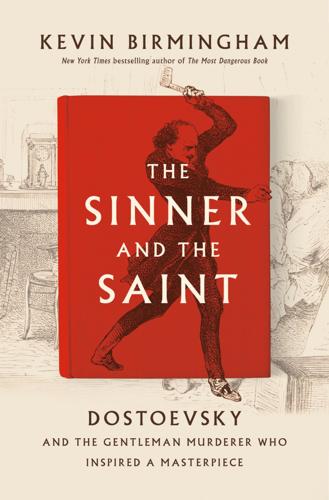
The Sinner and the Saint: Dostoevsky and the Gentleman Murderer Who Inspired a Masterpiece
by
Kevin Birmingham
Published 16 Nov 2021
He got two hundred francs for the silverware and twenty for the coat. The merchant offered only three francs for the Virgin, so they threw it into the Seine. Then they ate dinner and went to the Théâtre des Variétés to watch a comedy show. Afterward, at around 11:00 p.m., Avril went to a brothel, and Lacenaire went home. “That was a great day for me,” he said later, thinking back. “I breathed again.” * * * • • • The press tended to treat criminals as a biologically inferior class degraded by ignorance and poverty. But Lacenaire was different. He was handsome, stylish, and polite. He intended to study law. He wrote poetry and published an article about the criminal justice system that even Alexis de Tocqueville cited.

The Matter of the Heart: A History of the Heart in Eleven Operations
by
Thomas Morris
Published 31 May 2017
The first was Charles Bailey of Hahnemann University Hospital, Philadelphia, who had funded his way through medical school by selling ladies’ underwear, a crucial sideline, as it turns out: contemplating his wares one morning he was struck by the structural similarity between a girdle and the mitral valve. Suspenders offered firm but flexible support to the stockings, just as the chordae tendineae, tough fibrous strings of tissue, anchor the valve leaflets to muscles on the inner wall of the heart. This insight informed much of his later thinking.38 A young artist friend helpfully supplied an illustration of a panty-girdle and a mitral valve side by side; his name was Walt Disney.39 Bailey, a great admirer of Smithy, had watched his colleague’s deterioration with great sadness. At a surgical meeting he listened to his heart and the ‘terrible rumble’ of the aortic stenosis that would kill him.40 Bailey needed no reminder of the devastating consequences of valve disease: at the age of twelve he had seen his father die of mitral stenosis, coughing up blood into a basin while his mother did her best to comfort him.41 Like Smithy, Bailey revisited Cutler’s operation, trying to relieve the stenotic valve by cutting a section out of its leaflets with an instrument which acted like a hole punch.
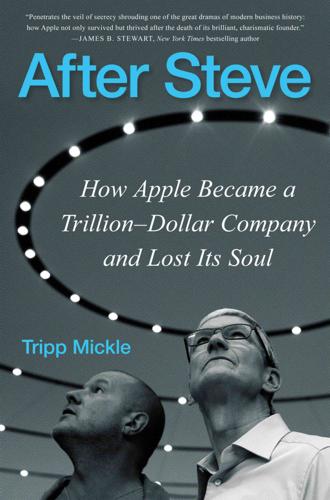
After Steve: How Apple Became a Trillion-Dollar Company and Lost Its Soul
by
Tripp Mickle
Published 2 May 2022
He slowly blinked open his eyes and gazed across the room toward the windows, where rays of midday light streamed into the room in narrow lines of yellow. “Wow,” he remarked. “The quality of the light coming in the room is beautiful.” The observation surprised the assistant. Turning to follow his gaze, she studied the light to try to see, as best she could, through his eyes. Later, thinking back to this quiet moment, she recalled that some people can see a hundred times as many colors as others do. Known as tetrachromats, they have a fourth type of color receptor in their retina that heightens their color perception. “It is lovely,” she told Ive. She reminded him about his call and pointed to his lunch before slipping out of the room, leaving him alone, free from the responsibility of completing a campus, stressing over an aluminum computer part, or agonizing over the leather bands on the next Apple Watch.
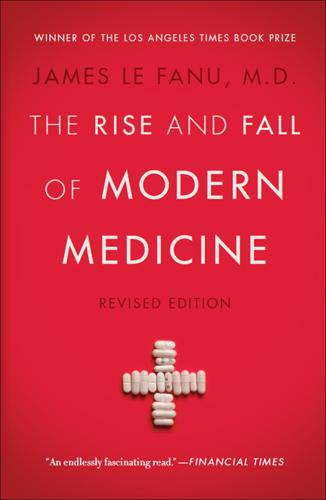
The Rise and Fall of Modern Medicine
by
M. D. James le Fanu M. D.
Published 1 Jan 1999
With the evolution of cardiac surgery, the results of treating blue babies becomes increasingly more dramatic, culminating in open-heart surgery, where a combination of dilating the narrow pulmonary valve and closing the hole in the heart restores the anatomy to normal. The first phase of cardiac surgery started with a piece of lateral thinking by Dr Helen Taussig, a specialist in children’s heart problems at Johns Hopkins Hospital in Baltimore. The main aorta, as it emerges from the left ventricle, passes in close proximity to the pulmonary arteries. It is thus quite straightforward, in theory, to link the aorta and pulmonary artery together so the non-oxygenated ‘blue’ blood in the aorta passes back through the lungs to pick up oxygen.

Boyd: The Fighter Pilot Who Changed the Art of War
by
Robert Coram
Published 21 Nov 2002
B., The Art of Scientific Investigation Vintage Books, Third Edition 1957 2. Boyd, John R., “Destruction and Creation,” 23 Mar 1976 3. Brown, G. Spencer, Laws of Form, Julian Press, Inc. 1972 4. Conant, James Bryant, Two Modes of Thought, Credo Perspectives, Simon and Schuster 1970 5. DeBono, Edward, New Think, Avon Books 1971 6. DeBono, Edward, Lateral Thinking: Creativity Step by Step, Harper Colophon Books 1973 7. Foster, David, The Intelligent Universe, Putnam 1975 8. Fromm, Erich, The Crisis of Psychoanalysis, Fawcett Premier Books 1971 9. Gamow, George, Thirty Years that Shook Physics, Anchor Books 1966 10. Gardner, Howard, The Quest for Mind, Vintage Books 1974 11.

The Rise and Fall of Nations: Forces of Change in the Post-Crisis World
by
Ruchir Sharma
Published 5 Jun 2016
I have interacted with Jitania since 1998 and can only marvel at her boundless energy and enthusiasm for economic research. I am eternally grateful to her for being there for me whenever I have needed any guidance or assistance. She is supported by Steven Quattry, who must be the most well-read person I have ever met. His interests go well beyond the field of economics and politics, and his lateral thinking has contributed significantly to my understanding of the world. I would also like to thank team member Soham Sengupta for his fast and clear answers to any question. It is hard to imagine, though, how I could get anything done without Paul Weiner. He has been the team’s quartermaster and more for over a dozen years and has been involved in all my endeavors.
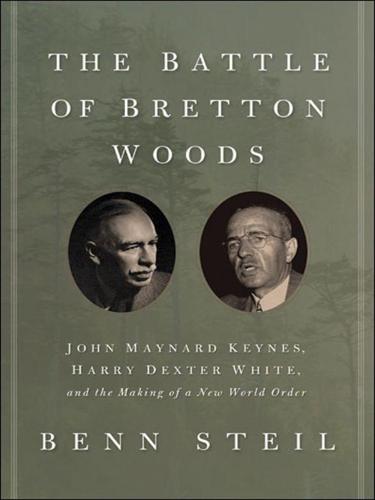
The Battle of Bretton Woods: John Maynard Keynes, Harry Dexter White, and the Making of a New World Order
by
Benn Steil
Published 14 May 2013
He had been outfoxed by old European “wickedness”; that is, the “cynical” and “impish” Clemenceau, and the “goat-footed bard,” Lloyd George, “rooted in nothing, … void and without content,” with a “flavour of final purposelessness [and] inner irresponsibility.”32 Keynes’s main aim in writing the book was not to lampoon the Big Three, however, but rather to explain—more precisely, to drive home with concise historical and logical analysis—why the treaty’s economic terms were deeply misguided and dangerous. His account of the development of Europe’s economy from 1870 to the start of the war was remarkable, given his later thinking on the importance of national economic planning and, in particular, monetary management, for its emphasis on the immense and widespread material benefits that sprang from Europe’s organic economic integration. Most striking was his observation that “[t]he various currencies, which were all maintained on a stable basis in relation to gold and to one another, facilitated the easy flow of capital and of trade to an extent the full value of which we only realize now, when we are deprived of its advantages.”33 The Great War had brought this to an end—the franc and pound both plummeted, ending a hundred years of fixed exchange rates, in February after American official aid to Britain was cut off.34 Keynes also noted, sounding almost libertarian, that “the immense accumulations of fixed capital which, to the great benefits of mankind, were built up during the half century before the war, could never have come about in a Society where wealth was divided equally.”35 Keynes, who labored with enormous passion and endurance at the conference to convince the principal players that Germany if it “is to be ‘milked’ … must not first of all be ruined,”36 produced a clever and farsighted scheme to solve, in one grand package, the problems of the European Allies’ debts to each other and to the United States together with those of establishing what Germany could reasonably be required to pay in reparations, given its resources and export capacity.

Inside British Intelligence
by
Gordon Thomas
All were handpicked not only for their legal skills but for intellectual precision and a highly sophisticated grasp of Britain’s constantly changing legal system. Several had a grounding in European law and that of Islam. At their first interview, lawyers were told they must have an aptitude for “logical and lateral thinking.” Officially they would be working for the Home Office or Ministry of Defense. In reality their office would be in Thames House, working “within the framework of the Official Secrets Act.” In 2008, the starting salary was £50,000 with regular raises. An essential condition of employment was that they should not reveal they worked for the Security Service.
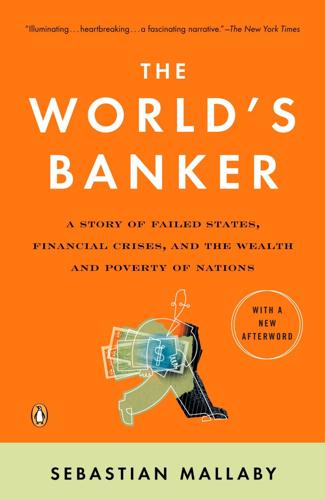
The World's Banker: A Story of Failed States, Financial Crises, and the Wealth and Poverty of Nations
by
Sebastian Mallaby
Published 24 Apr 2006
The next morning Wolfensohn and Richardson came to terms, and Wolfensohn told Warburg that he would not accept his rival offer. Wolfensohn’s period with Schroders, from 1968 to 1977, followed the same pattern as his time in Australia. He wooed his clients masterfully: he listened, empathized, and understood their needs; he offered “intelligence, imagination, lateral thinking, good contacts, focused energy and a very good memory,” according to one Schroders contemporary. His stamina allowed him to take in more parties, exhibitions, and concerts than ordinary mortals could manage; his looks, cultural appetites, and exotic Aussie charm made him a popular figure on the London circuit.
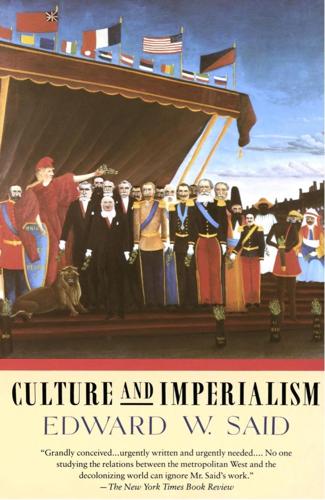
Culture and Imperialism
by
Edward W. Said
Published 29 May 1994
These were the responses that moved African history into a new course.10 The sense for Europeans of a tremendous and disorienting change in perspective in the West-non-West relationship was entirely new, experienced neither in the European Renaissance nor in the “discovery” of the Orient three centuries later. Think of the differences between Poliziano’s recovery and editing of Greek classics in the 1460s, or Bopp and Schlegel reading Sanskrit grammarians in the 1810s, and a French political theorist or Orientalist reading Fanon during the Algerian War in 1961, or Césaire’s Discours sur le colonialisme when it appeared in 1955 just after the French defeat at Dien Bien Phu.

API Design Patterns
by
Jj Geewax
Published 19 Jul 2021
The problem was simple: too many people deleted files from their computer and then realized later they shouldn’t have done that. It could have been an accident (clicking on the wrong file), or a mental mistake (thinking it was the right file but realizing it wasn’t), or even just a change of heart later (thinking they’re done with a file but realizing later they actually needed it), but the point remains the same: they needed a delete action that was recoverable and separate from a permanent deletion. This same issue pops up in APIs quite often. We might write code that deletes all resources with a specific set of properties, but perhaps we do a comparison incorrectly and end up deleting a bunch of resources that shouldn’t have matched the criteria.

For the Win
by
Cory Doctorow
Published 11 May 2010
Someone who could add two and two before you’d know that there was such a thing as four. Sammy walked back to his hotel as quickly as he could, given the icy sidewalks underfoot, and by the time he got to the lobby of the old office tower his face hurt—forehead, cheeks and nose. He’d booked his return flight for a day later, thinking he’d do more reccies of the new site before writing his report and heading home, but there was no way he was facing down that Tjan guy again. What had prompted him to sabotage the ride? It was something primal, something he hadn’t been in any real control of. He’d been in some kind of fugue-state.

Matter
by
Iain M. Banks
Published 14 Jan 2011
Utli paused as he checked elsewhere, “Eleven announced some time ago that they wished to migrate, en masse, to Jiluence, which is somewhere in the Kuertile Pinch and, they allege, an ancestral homeworld of theirs. That was some gross of days ago, though, and we’ve heard nothing since. A passing fancy, probably. Or art. They confuse such terms. They confuse us, too. It may be deliberate. Possibly too long an association with the Oct, who are most adept at lateral thinking but seemingly incapable of anything but lateral expression, too; were there a prize for least-translatable galactic species, the Oct would win every cycle, though of course their acceptance speeches would be pure gibberish. What else?” Utli’s demeanour indicated resignation and amusement, then went back to exasperation again, mixed with annoyance.
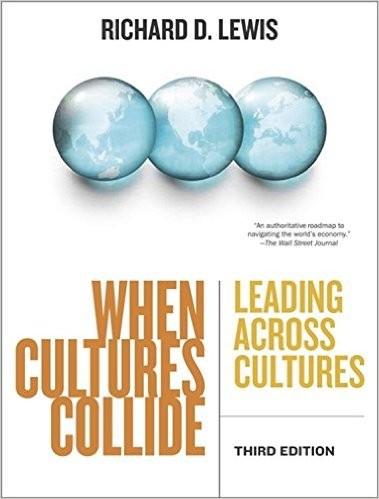
When Cultures Collide: Leading Across Cultures
by
Richard D. Lewis
Published 1 Jan 1996
In managerial terms, these qualities translate into persistence, courage, individuality and original thinking. Unlike their Scandinavian neighbors, the Finns originate from the east, though they are not Slavic. The uniqueness of their language and their outpost mentality encourage an independent outlook and lateral thinking, which extends to brilliance of industrial design and penetrative insight into various branches of technology. Their lack of a strong national business culture enables them to consider membership of trade “clubs” readily, and Finland’s successful experience within EFTA was followed by a successful entry into the EU.

Antarctica
by
Kim Stanley Robinson
Published 6 Jul 1987
But glimpses of her in Ta Shu's program would be okay. Late in the winter, despite X's warnings and protests, the co-op hired Ron to come back down and run the heavy shop. X cursed when he heard the vote on this: "Damn it, he's a pirate! He joined the ice pirates!" "He was desperate, " Joyce said. "It doesn't matter now. Get used to it. " Later, thinking it over in his hut, X decided he could get used to it. After all it had not made him comfortable to think of Ron either plotting revenge in Chile or holed up drinking in some Florida beachfront. Certainly he would come back down and try to take everything over, and then there would be a major jerk in their fine new co-op; but at least it would be a jerk that X knew and liked.

The Making of Modern Britain
by
Andrew Marr
Published 16 May 2007
Destroyers were taken from the main fleets and used to patrol the most dangerous approaches. Yet none of this was enough to stem the rate of losses. By the early summer of 1917, as the short nights gave the U-boats even more opportunity for carnage, it looked as if Britain would have to sue for peace. What saved Britain was a simple case of lateral thinking. Admiralty strategy had long been clear: convoys did not work. The merchant ships were too slow and ill captained to hold together in convoy and could not make the necessary joint manoeuvres. Most obvious of all, the convoy, being big, made too easy a target for a U-boat. As the Admiralty itself said in January 1917: ‘It is evident that the larger the number of ships forming the convoy, the greater is the chance of the submarine being enabled to attack successfully.’83 Finally, there were too few destroyers to protect every convoy every mile of the way.

In the Age of the Smart Machine
by
Shoshana Zuboff
Published 14 Apr 1988
The White-Collar Body in History 103 Daniel Isenberg's research on "how senior managers think" has pen- etrated another layer of this, usually inarticulate, domain of executive management. 12 Isenberg found that top managers think in ways that are highly "intuitive" and integrated with action. 13 He concluded that the intuitive nature of executive behavior results from the inseparability of their thinking from their actions: "Since managers often 'know' what is right before they can analyze and explain it, they frequently act first and think later. Thinking is inextricably tied to action. . . . Managers develop thought about their companies and organizations not by ana- lyzing a problematic situation and then acting, but by thinking and acting in close concert.,,14 One manager described his own immersion in the action cycle: "It's as if your arms, your feet, and your body just move instinctively.

May We Be Forgiven
by
A. M. Homes
Published 14 Jun 2012
“The good old-fashioned way,” I say. “I’m going to set myself up somewhere with a big box marked ‘Free Kittens.’” The truth is, I feel like a giant bully taking the kittens from the mother cat. For a couple days, I practice separating the mother and her kittens by taking the kittens away and then bringing them back a few hours later—thinking it’s somehow less stressful than a sudden and permanent absence. When the day comes, I bring the plastic cat-crate up from the basement and line it with old towels. I find an old card table in the basement, which still has a sign on it from a lemonade stand Ashley must have had. I flip the poster board over and write “Free Kittenz” in large artful letters.
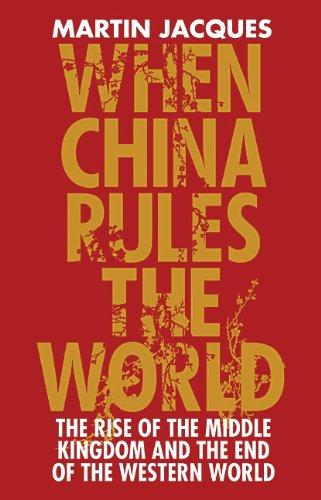
When China Rules the World: The End of the Western World and the Rise of the Middle Kingdom
by
Martin Jacques
Published 12 Nov 2009
But when both the goals and the path need to be adapted to changed circumstances, perhaps even subject to wholesale revision, Japan seems to find the shift inordinately difficult.143 Rather like France, it tends to fiddle and delay until nothing short of a revolution - or, in Japan’s case, a restoration - is required. In the face of the transformation of East Asia, and above all China, Japan has been effectively paralysed, unable to change direction, offering little other than more of the same. The ruling Liberal Democrats, who have dominated Japanese politics since 1955, have found lateral thinking virtually impossible.144 As Chinese East Asian expert Zhu Feng argues: ‘Japan has been less prepared for the rise of China than any other country. They can’t believe it. They don’t want to believe it. Yet it affects them more than anyone else.’145 For the most part, Japan has gone into denial about the rise of China, wishing that somehow it might go away or that it was perhaps a figment of everyone else’s imagination.

Fiasco: The American Military Adventure in Iraq
by
Thomas E. Ricks
Published 30 Jul 2007
"Unless we ensure that we have coherency in our policy, we will lose strategically," he told the Washington Post, knowing that these types of on-the-record remarks from an active-duty officer who had served in Baghdad would appear prominently in the newspaper. "I lost my brother in Vietnam," he said, in explaining his decision to go public. "I promised myself when I came on active duty that I would do everything in my power to prevent that [sort of strategic loss] from happening again. 362 FIASCO Here I am, 30 years later, thinking we will win every fight and lose the war, because we don't understand the war we're in." One Army general predicted the Army would start falling apart in the spring of 2005, while another one said flatly it was time for Rumsfeld and Wolfowitz to go. "I do not believe we had a clearly defined war strategy, end state and exit strategy before we commenced our invasion," he said.

The Power Law: Venture Capital and the Making of the New Future
by
Sebastian Mallaby
Published 1 Feb 2022
Don Valentine had overruled these objections because he had seen in Moritz a versatile learner, and he preferred to hire a hungry upstart than someone who was coasting on experience.[7] Now, serendipitously, Moritz’s unconventional background was about to prove its value. Moritz could not recall a precedent for what Yahoo was intending: to raise money from venture capitalists while giving its product away for free.[8] But a few seconds of lateral thinking told him that Yahoo’s scheme could work. The media industry that Moritz himself came from featured grown-up corporations that did precisely what Yahoo proposed: radio stations and TV networks broadcast news and shows for free, then raked in profits by charging for advertising. What’s more, the media guys served up whimsical plotlines with cheeky names.

Tools of Titans: The Tactics, Routines, and Habits of Billionaires, Icons, and World-Class Performers
by
Timothy Ferriss
Published 6 Dec 2016
But if you don’t cultivate ‘turning it on’ as a way of life in the little moments—and there are hundreds of times more little moments than big—then there’s no chance in the big moments. . . . I believe that when you’re not cultivating quality, you’re essentially cultivating sloppiness.” “Just Go Around” for Life “Lateral thinking or thematic thinking, the ability to take a lesson from one thing and transfer it to another, is one of the most important disciplines that any of us can cultivate. From a really young age, we [my wife and I] began to cultivate this [in our toddler son, Jack] around this principle of ‘go around.’

The Friendly Orange Glow: The Untold Story of the PLATO System and the Dawn of Cyberculture
by
Brian Dear
Published 14 Jun 2017
The same Richard Powers who in more recent years has become a major literary figure, a novelist who has garnered sweeping acclaim and won so many prestigious awards, including a MacArthur “genius” grant and, in 2006, the National Book Award for Fiction. Several of his most well-known novels, including Galatea 2.2, The Gold Bug Variations, and Plowing the Dark, directly confront issues related to computers and human-machine interaction. “Man,” he would recall years later, thinking back on PLATO, “I spent more timeless hours in those rooms than I can say, and I remember coming back out sometimes after a long session, shocked to discover daylight or the lack thereof, just out the doors of CERL.” The enticement of that Orange Glow could be downright scary. “I can remember coming back from a bunch of all-night sessions, and feeling, This is a very dangerous, very powerful drug, and you better be careful.
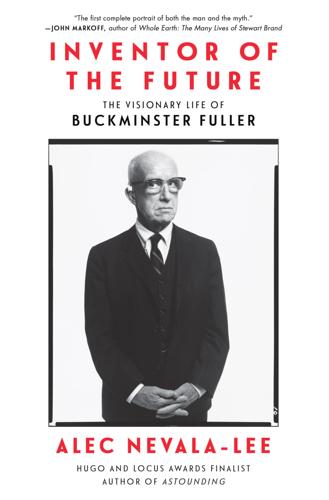
Inventor of the Future: The Visionary Life of Buckminster Fuller
by
Alec Nevala-Lee
Published 1 Aug 2022
Edmondson and Ingber learned to navigate within the academic world more capably than Fuller ever had, but both were guided by principles that he would have recognized as his own. To honor his legacy, Edmondson and her husband, George Daley, the dean of Harvard Medical School, endowed the R. Buckminster Fuller Professorship of Design Science at the Harvard Graduate School of Design, while Ingber used his ideas as a form of lateral thinking to produce solutions that others overlooked. His one meeting with Fuller was enough for him to be changed, but not ensnared, and he emerged with just the touch of strangeness that he needed. Ingber found himself occupying what he called the fruitful “middle zone” between science and art, and like many scientists, he found that Fuller’s approach had real value in biology.

GCHQ
by
Richard Aldrich
Published 10 Jun 2010
At the very least, Zircon guaranteed Britain an alternative option at a time when the European ‘third parties’ were becoming more powerful and influential.15 Indeed, the Europeans had recently set up their own mini-UKUSA alliance called ‘The Ring of Five’, consisting of the sigint agencies of Germany, the Netherlands, France, Belgium and Denmark – although this did not prevent them from intercepting and reading each other’s communications traffic.16 The idea of GCHQ teaming up with the Europeans was not a bad one. European sigint services such as those of the Norwegians, the Germans and the Dutch were highly professional, and had made many important contributions to Western intelligence down the years, not least during the Falklands War. They often displayed brilliant lateral thinking. When Soviet naval ships entered Dutch harbours in the 1980s, their hosts would often complain that the Soviet radar was interfering with local television broadcasts and insist on a snap technical inspection. The crafty Dutch used this opportunity to plant a small tracking device high up on the Soviet ships that was no more than the size of a brick.
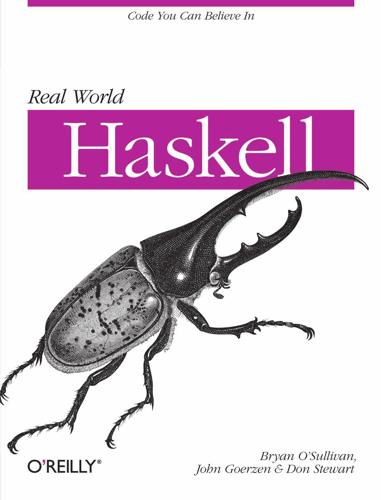
Real World Haskell
by
Bryan O'Sullivan
,
John Goerzen
,
Donald Stewart
and
Donald Bruce Stewart
Published 2 Dec 2008
The instance of Show for Char provides a special implementation of showList that uses double quotes and escapes non-ASCII-printable characters. As a result, if someone applies show to a [Char] value, the implementation of showList will be chosen, and it will correctly render the string using quotes. At least sometimes, then, we can avoid the need for the OverlappingInstances extension with a little bit of lateral thinking. How to Give a Type a New Identity In addition to the familiar data keyword, Haskell provides us with another way to create a new type, using the newtype keyword: -- file: ch06/Newtype.hs data DataInt = D Int deriving (Eq, Ord, Show) newtype NewtypeInt = N Int deriving (Eq, Ord, Show) The purpose of a newtype declaration is to rename an existing type, giving it a distinct identity.

O Jerusalem
by
Larry Collins
and
Dominique Lapierre
Published 31 Dec 1970
The only sound Rousan could hear was the low rumble of the engines. Ahead of him, he could just make out the ruby glow of the taillight of the last vehicle in the advance party. At the Jordan River, the military policemen controlling the movement silently waved him across Allenby Bridge. "It was," the young captain would later think, "the most exalting moment of my life." He was certain that "within fifteen days" they would be coming back across that bridge "a triumphant army having undone the wrong of partition." As he had on Partition Night, David Ben-Gurion went to sleep early on May 14 to conserve his energies for the trials ahead.
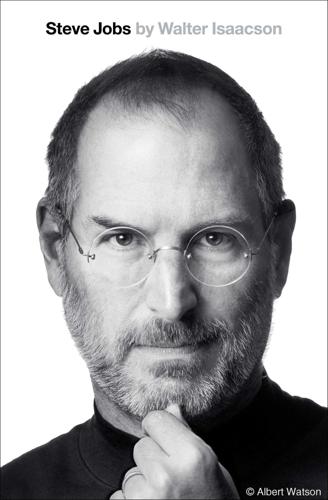
Steve Jobs
by
Walter Isaacson
Published 23 Oct 2011
With each of those statements, Jobs seemed to have a premonition that his life would soon be changing. Perhaps the thread of his life would indeed weave in and out of the thread of Apple’s. Perhaps it was time to throw away some of what he had been. Perhaps it was time to say “Bye, I have to go,” and then reemerge later, thinking differently. Exodus Andy Hertzfeld had taken a leave of absence after the Macintosh came out in 1984. He needed to recharge his batteries and get away from his supervisor, Bob Belleville, whom he didn’t like. One day he learned that Jobs had given out bonuses of up to $50,000 to engineers on the Macintosh team.

USA's Best Trips
by
Sara Benson
Published 23 May 2010
Just 3 miles north of Crawford Bay, it’s time for another freebie, the world’s longest free ferry ride, courtesy of the Canadian government and the Kootenay Lake Ferry. The scenic crossing departs every hour or so and offers 40 minutes of superb lake views before docking at Balfour, some 20 miles northeast of Nelson. Nelson’s quirkiness precedes it and even before you reach town you’ll get a hint of the residents’ lateral thinking as you pass the antique paddle steamer SS Nasookin, moored in someone’s garden and converted into a wacky private residence. * * * “There’s no better place to understand the local community than the Kootenay Co-op on Baker St, where you can find out about upcoming Tibetan Buddhist lectures while shopping for organic, locally sourced cheeses.

A History of the Bible: The Story of the World's Most Influential Book
by
John Barton
Published 3 Jun 2019
(Isaiah 54:2–3) And, critical for later Jewish and Christian theological thinking, Second Isaiah contains the first explicit formulations of Jewish monotheism, the belief that only the God of Israel is the true God, and that all other pretended gods are nothing at all: not rivals, not even impotent rivals, to the one God, but simply non-existent: Thus says the LORD, the King of Israel and his Redeemer, the LORD of hosts: I am the first and I am the last; besides me there is no god. (Isaiah 44:6) This is a remarkable claim: Yahweh, who might have been thought to have been defeated by the gods of Babylon, is in reality the only God in existence, and actually controls both the Babylonians and Cyrus, their eventual conqueror. It became the bedrock for later thinking about the nature of God in both Judaism and Christianity. All the prophets are implicitly monotheistic, in that they do not reckon with any effective power in the universe other than that of the God of Israel, but Second Isaiah is the first to articulate this so overtly and unambiguously. Whether his work was originally completely distinct from the collection of the oracles of Isaiah (at whatever stage that had reached by the early sixth century BCE), or was consciously designed to be added to the Isaiah corpus, is unclear.

How the Mind Works
by
Steven Pinker
Published 1 Jan 1997
… I tried forcing the false plate in but it sticks out like a star burst chandelier. Still, I find it beautiful.” The image came out of the Romantic movement two hundred years ago and is now firmly entrenched. Creativity consultants take millions of dollars from corporations for Dilbertesque workshops on brainstorming, lateral thinking, and flow from the right side of the brain, guaranteed to turn every manager into an Edison. Elaborate theories have been built to explain the uncanny problem-solving power of the dreamy unconscious. Like Alfred Russel Wallace, some have concluded that there can be no natural explanation. Mozart’s manuscripts were said to have no corrections.
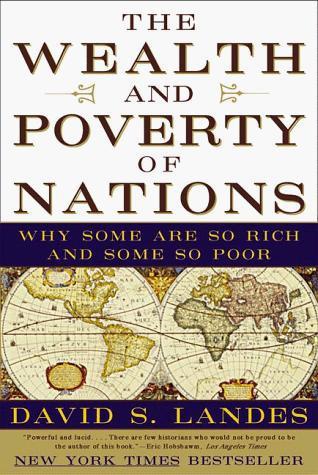
The Wealth and Poverty of Nations: Why Some Are So Rich and Some So Poor
by
David S. Landes
Published 14 Sep 1999
They watched American housewives, who kept track and bought as needed; and the markets also kept track and did the same. The goods were pulled through rather than pushed. Why couldn’t cars be made that way? (They were, in American auto plants, but the Japanese refined a procedure that had room for improvement.) All of these ideas testify to the value of curiosity, observation, and lateral thinking; in short, to the importance of the human actor.23 The Japanese also worked to exclude error, aiming at the unreachable goal of zero defects. Instead of pulling cars off the line, they tried to catch the mistake when it happened, stopping the line if necessary. That might have been expensive, but the point was to prevent rather than repair.

Arabs: A 3,000 Year History of Peoples, Tribes and Empires
by
Tim Mackintosh-Smith
Published 2 Mar 2019
He stockpiled prime-quality Turkic warriors as Saudis stockpile the latest laser-guided missiles; three years into his reign, he had amassed 4,000 of them. But the narrow-eyed centaurs refused to champ at the bit in their barracks; instead, they cantered about Baghdad, causing havoc. Al-Mu’tasim’s solution was a combination of lateral thinking and grand design: build them another Baghdad. Al-Mu’tasim founded his new capital, Samarra’, 125 kilometres up the Tigris from Baghdad, in 836, and moved his Turks and other foreign troops to it. Samarra’ has been likened to Versailles; but it was also an overblown Aldershot or Fort Hood, a military metropolis of mud-brick and dust inhabited by Central Asian cavalrymen and caliphal camp-followers like al-Mu’tasim’s jester, Ali the Cobbler, who would store his farts in his capacious sleeve then waft them over the more po-faced courtiers.
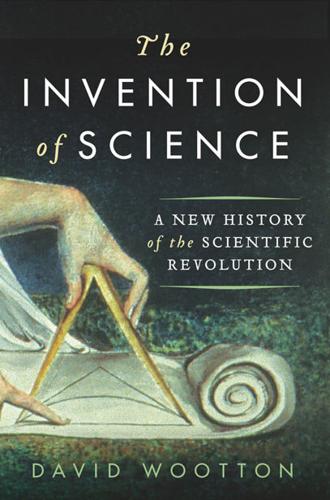
The Invention of Science: A New History of the Scientific Revolution
by
David Wootton
Published 7 Dec 2015
La Boëtie wanted to know why we obey authority, and his answer was that we shouldn’t. At the heart of Book Two (though not this time at the centre – the central essay is entitled ‘On Freedom of Conscience’) was the longest of all the essays, ‘An Apology for Raimond Sebond’, a passage from which, as we saw in Chapter 9, was crucial to later thinking about the laws of nature. Sebond (1385–1436), a Catalan theologian, had written, in Latin, a book providing a rational demonstration of the truths of Christianity, and Montaigne had been requested by his dying father to translate it into French (Montaigne dated the dedicatory epistle to the translation, addressed to his father, to the day of his father’s death, 18 June, 1568).
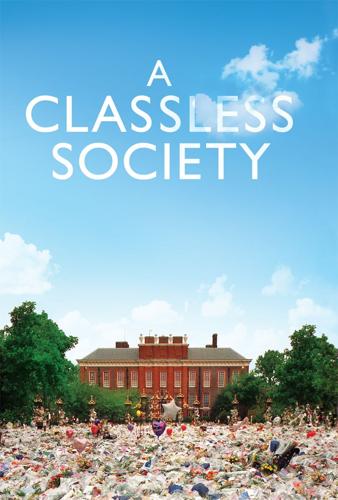
A Classless Society: Britain in the 1990s
by
Alwyn W. Turner
Published 4 Sep 2013
The comedies ’Allo ’Allo and M*A*S*H, together with a planned screening of Carry On Up the Khyber, all set during previous conflicts, were withdrawn from the television schedules, while the BBC banned a bewildering variety of records, lest they give offence: not only obvious suspects like John Lennon’s ‘Give Peace a Chance’, Edwin Starr’s ‘War’ and Frankie Goes to Hollywood’s ‘Two Tribes’, but also, in an impressive display of lateral thinking, Roberta Flack’s ‘Killing Me Softly with His Song’, the Bangles’ ‘Walk Like an Egyptian’ and Lulu’s ‘Boom Bang a Bang’. A BBC spokesperson explained that ‘Radio 1 realises it’s got a lot of servicemen’s families among its listeners and it’s very sensitive to what it plays because of that,’ but it was hard to believe that army wives, after two decades of seeing their loved ones depart for tours of Northern Ireland, were so fragile that they would be notably upset by an old Eurovision hit.
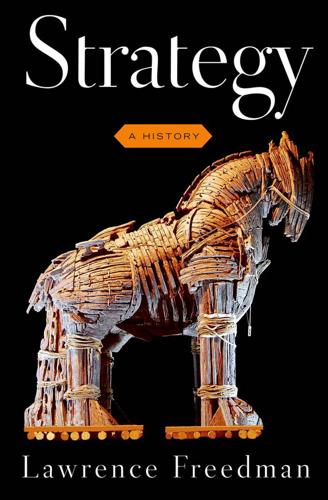
Strategy: A History
by
Lawrence Freedman
Published 31 Oct 2013
It was rarely denied that the orthodox route might at times have to be followed, but there was normally a clear implication that this could never satisfy the truly creative. As with so much writing on military strategy, the best way was illustrated by examples of success from companies that had transformed themselves and their industries, whether through meticulous plan, an empowered workforce, lateral thinking, bold re-engineering, or innovative design. The failures tended to be those who had stuck with orthodoxy, drifted in complacency, or moved from one crisis to another without ever getting a grip. In an appendix to their book, Kim and Mauborgne developed a more analytical distinction between the red and blue oceans, now described as structuralist and the reconstructionist strategies.

Hawaii
by
Jeff Campbell
Published 4 Nov 2009
Farrington Hwy runs the length of the coast, scooting past squatty towns and liquor stores on one side and white-sand beaches on the other. Further up the coast habitation yields to the velvet-tufted mountains and rocky coastal ledges leading all the way to the sacred tip of the island at Ka‘ena Point. Return to beginning of chapter KO OLINA RESORT No beach? No problem. All it takes is a little bit of lateral thinking and a couple of thousand tons of imported sand. When this resort was still on the drawing board it lacked the signature feature that is key for all Hawaiian resorts – a beach. A deal was struck and in exchange for public access, investors were allowed to carve out four kidney-shaped lagoons and line them with soft white sand.

The Rough Guide to Egypt (Rough Guide to...)
by
Dan Richardson
and
Daniel Jacobs
Published 1 Feb 2013
There’s no standard system of transliterating Arabic script into Roman, so you’re sure to find that the Arabic words in this guide don’t always match the versions you’ll see elsewhere. Maps and street signs are the biggest sources of confusion, so we’ve generally gone for the transliteration that’s the most common on the spot. However, you’ll often need to do a bit of lateral thinking, and it’s not unusual to find one spelling posted at one end of a road, with another at the opposite end. * * * FROM TOP LITTLE EGRETS ON THE BANKS OF THE NILE; TEMPLE OF QUEEN NEFERTARI, ABU SIMBEL < Back to Introduction DUNES AT SUNRISE, BAHARIYA AUTHOR PICKS Our authors have spent hours on jeeps crossing vast tracts of desert, floated down the Nile in motley feluccas, and spent nights carousing in dens that most outsiders wouldn’t imagine existed.
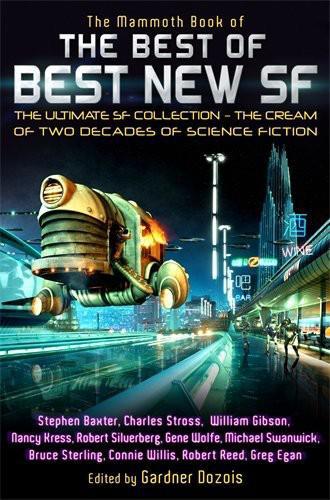
The Best of Best New SF
by
Gardner R. Dozois
Published 1 Jan 2005
The samosas are dinner. Breakfast will be egg salad on dead white bread, packed in one of those triangles of milky plastic, on top of six little cups of poisonously strong espresso. “You didn’t see it coming, Casey.” He peers at me out of the thumbprinted depths of his glasses. “’Cause you’re no good at lateral thinking. You read the handbook. What else did you think she was after? Sex? More wizz? A world tour? She was past all that. That’s what made her so strong. She was past it. That’s why Kings of Sleep’s as big as it is, and why the kids buy it, why they believe it. They know. Those kids back down the Market, warming their butts around the fires and wondering if they’ll find someplace to sleep tonight, they believe it.
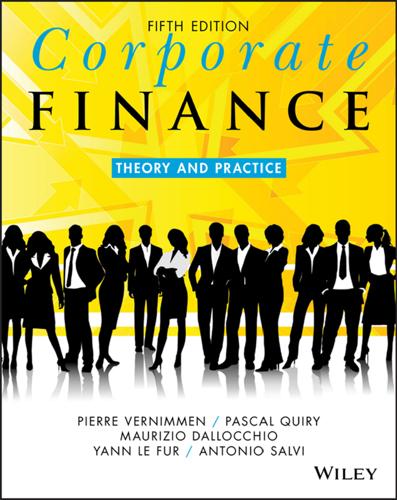
Corporate Finance: Theory and Practice
by
Pierre Vernimmen
,
Pascal Quiry
,
Maurizio Dallocchio
,
Yann le Fur
and
Antonio Salvi
Published 16 Oct 2017
Nestlé, with its Nespresso machines and capsules, has created something unique which is more than just a product or a service but a combination of both. But before readers get carried away and rush off to create their very own market arenas, it should be remembered that a market always comes under threat sooner or later, think about the BlackBerry and smartphones. Segmenting markets is never a problem for analysts, but it is vital to get the segmentation right! To say that a manufacturer of running shoes has a 30% share of the German running shoe market may be correct from a statistical standpoint but is totally irrelevant from an economic standpoint, because this is a worldwide market with global brands backed by marketing campaigns featuring international champions.
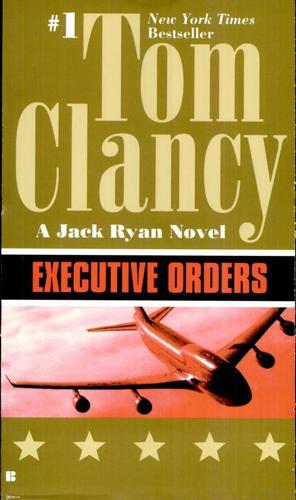
Executive Orders
by
Tom Clancy
Published 2 Jan 1996
Second, let's remember how they knocked off Iraq. They got somebody all the way inside. Those were two very big thoughts. Ryan started pondering the first one. Dan Murray's head turned to his roving inspector and they traded looks on the second. Christ, Ed, the FBI Director said a moment later. Think it through, Dan, the DCI said. We have a President. We have a Senate. We have a third of the House. We do not have a Vice President yet. The presidential succession is still dicey, no really powerful figures, and the top level of the government is still gutted. Toss in this epidemic, which has the whole country tied up in knots.